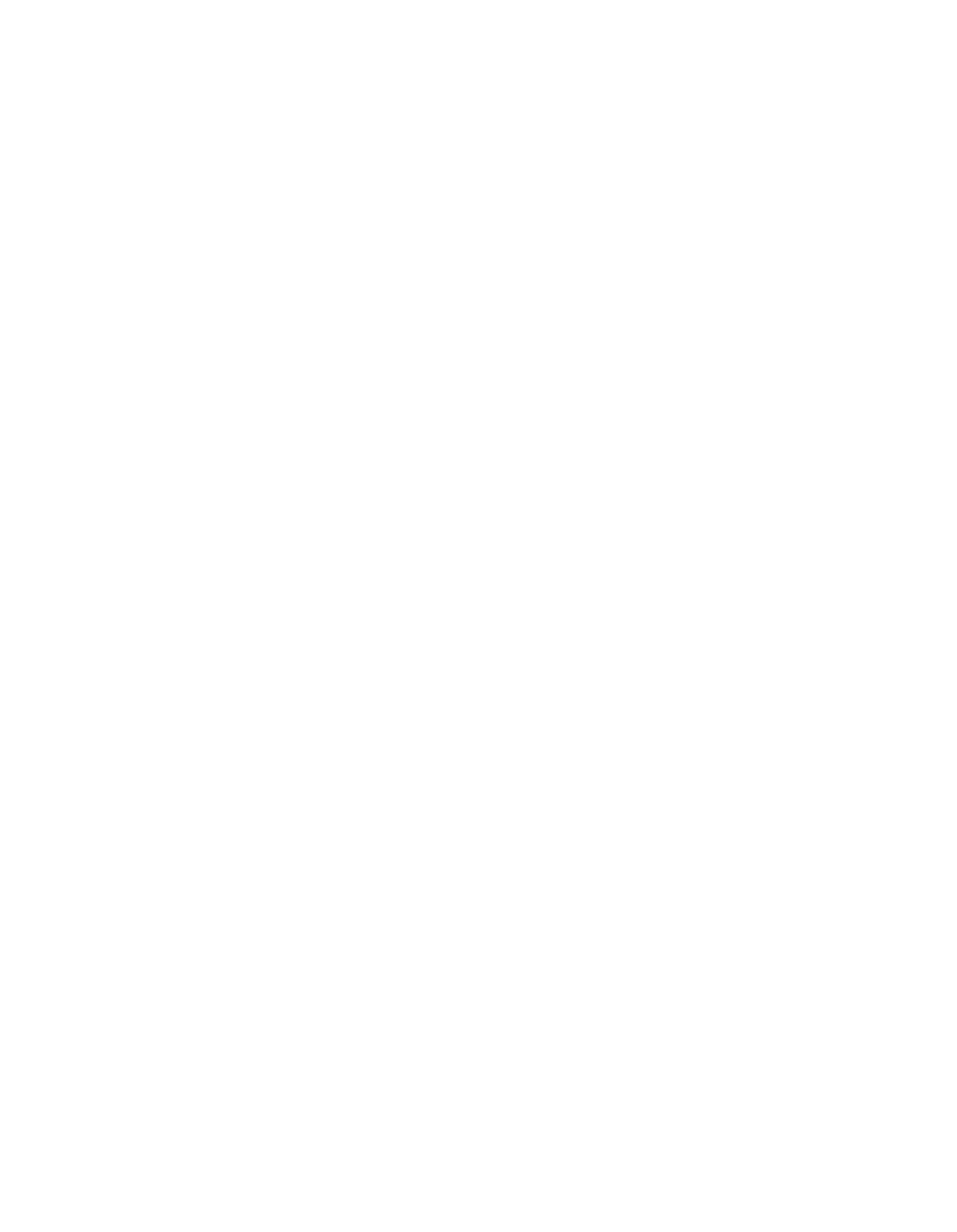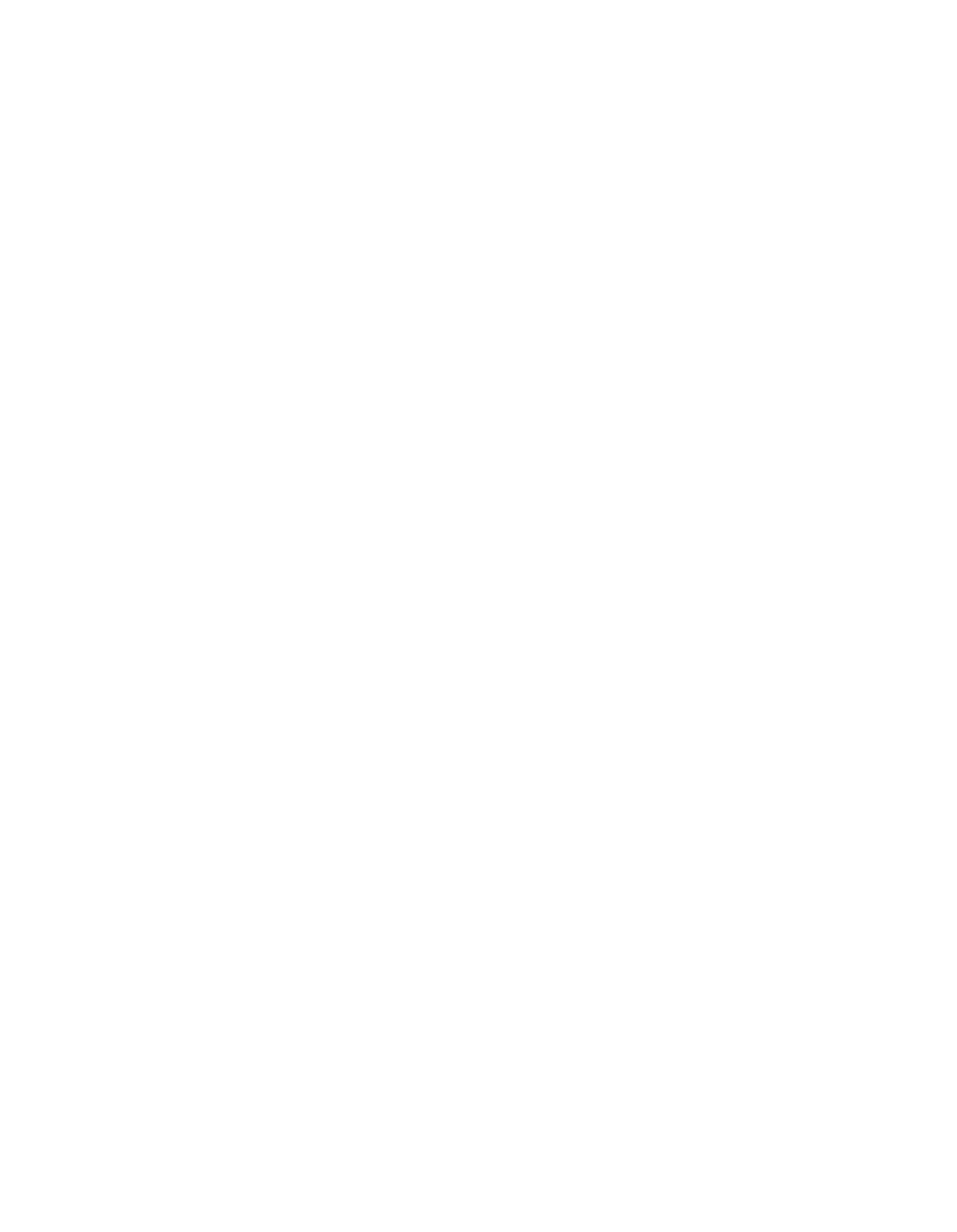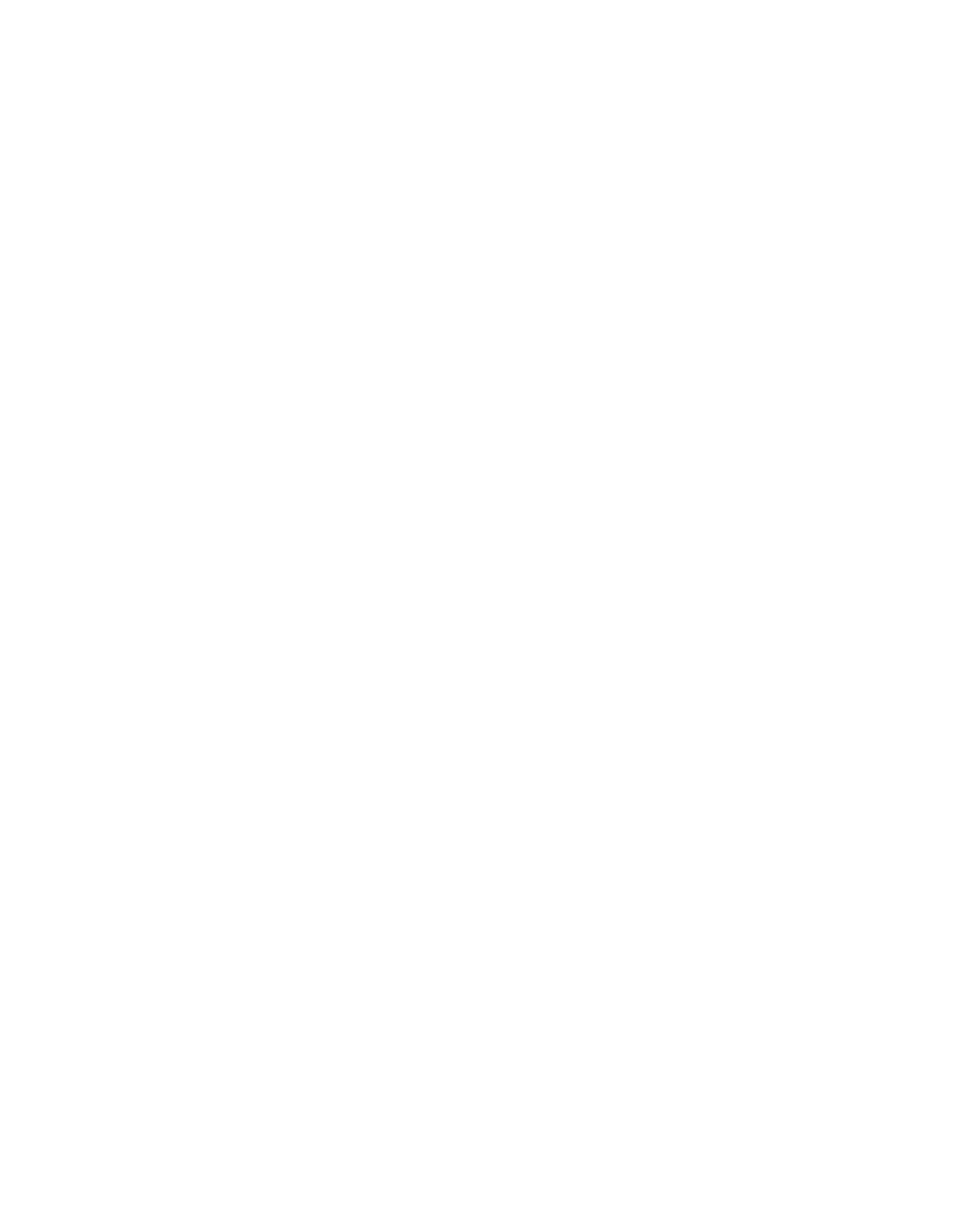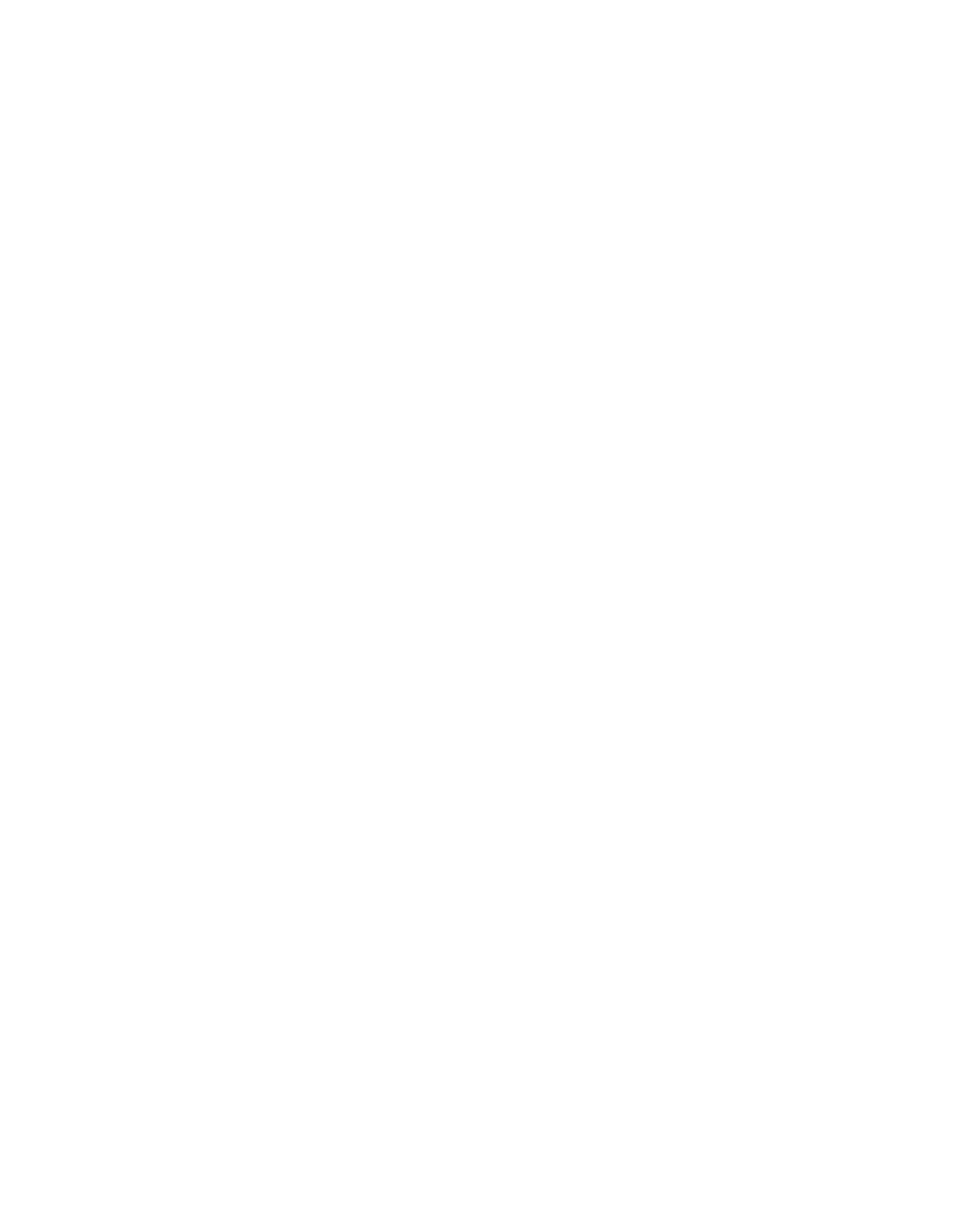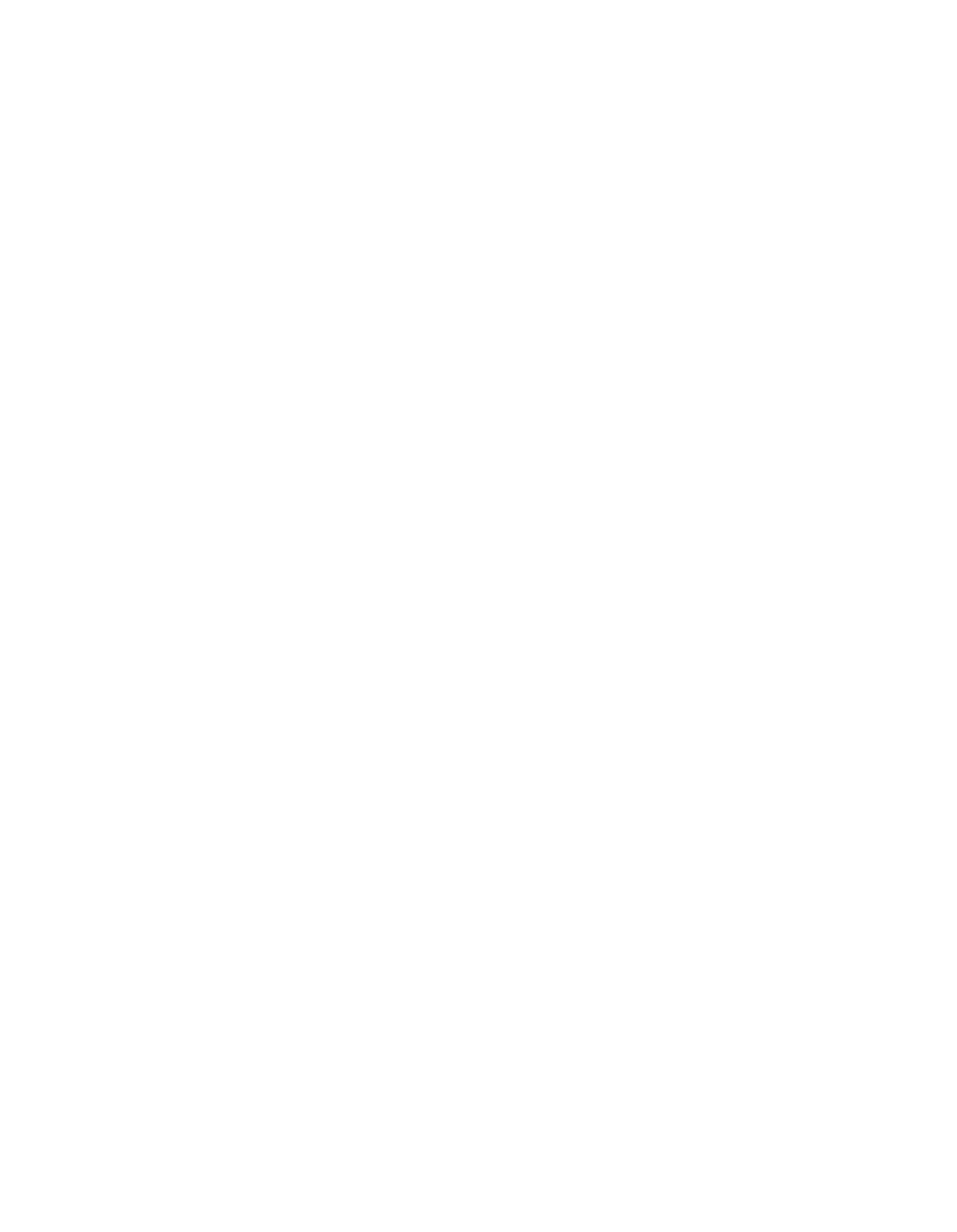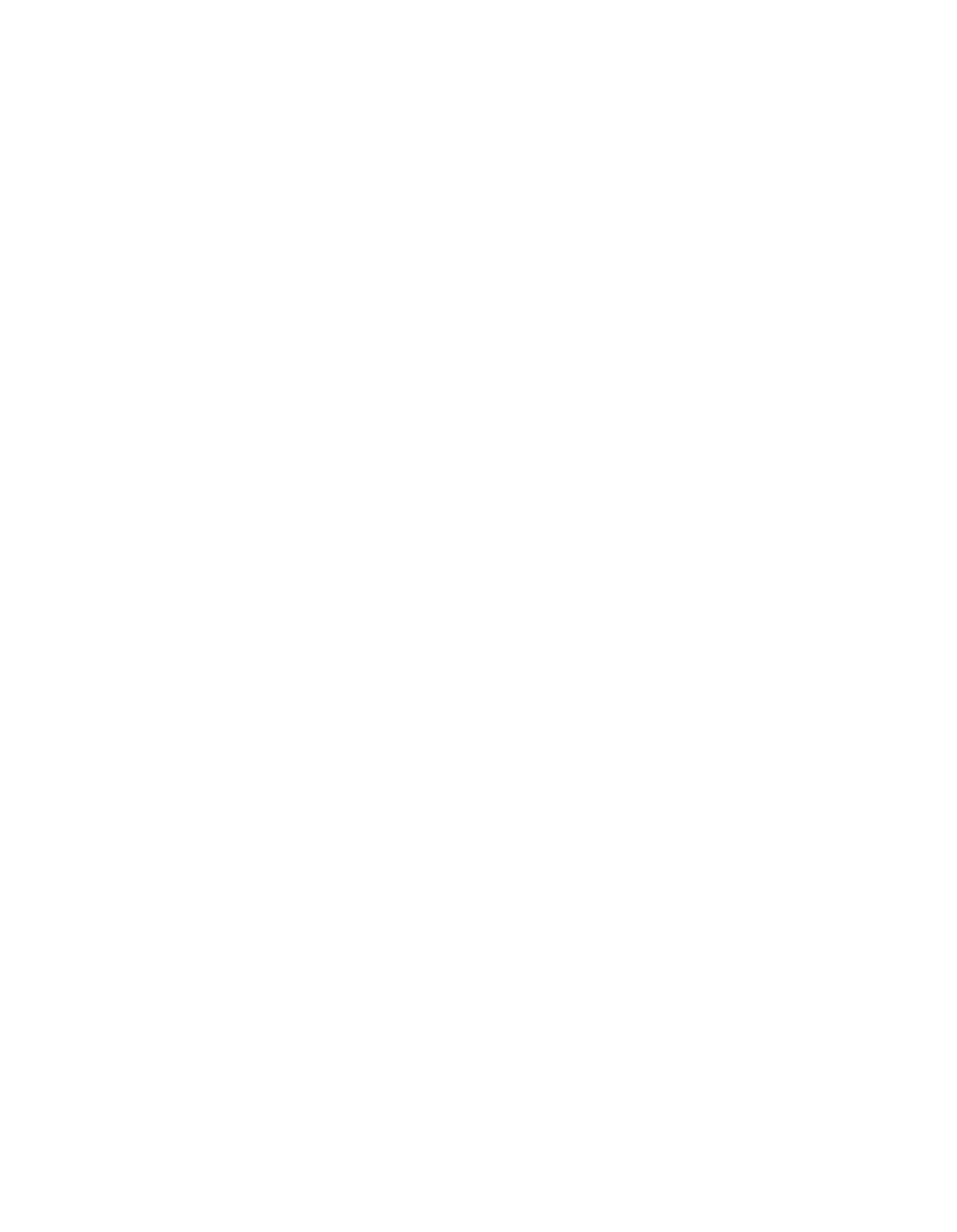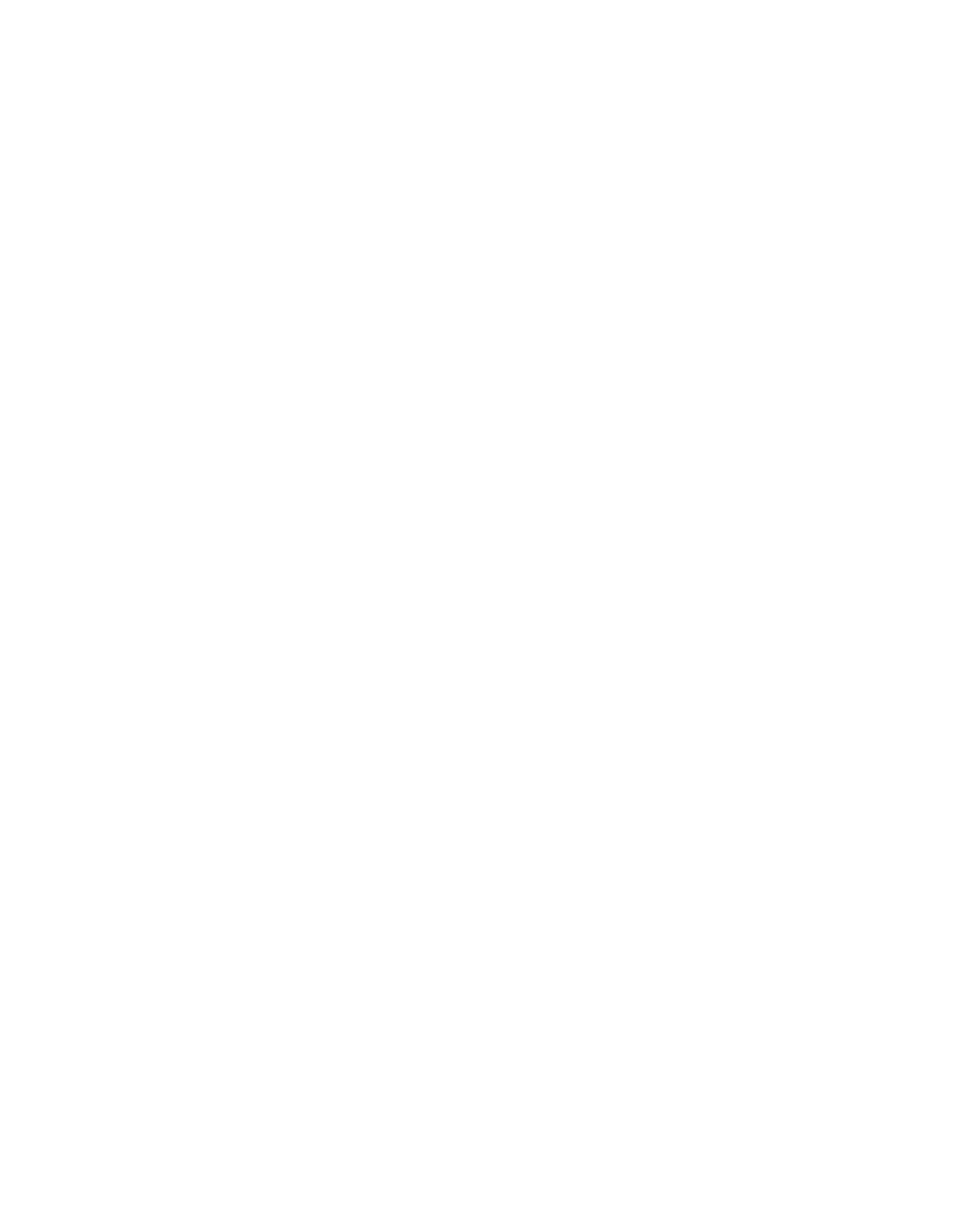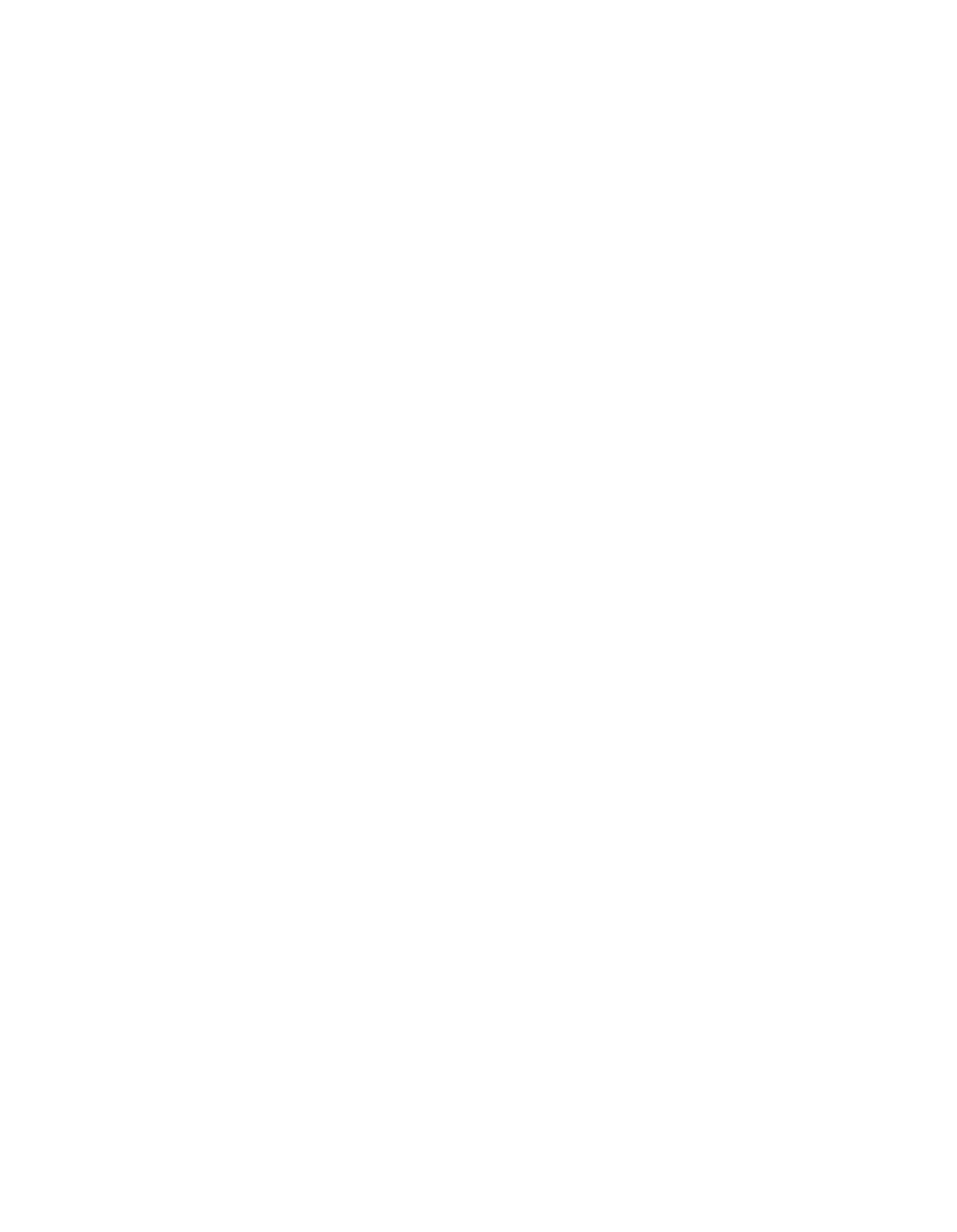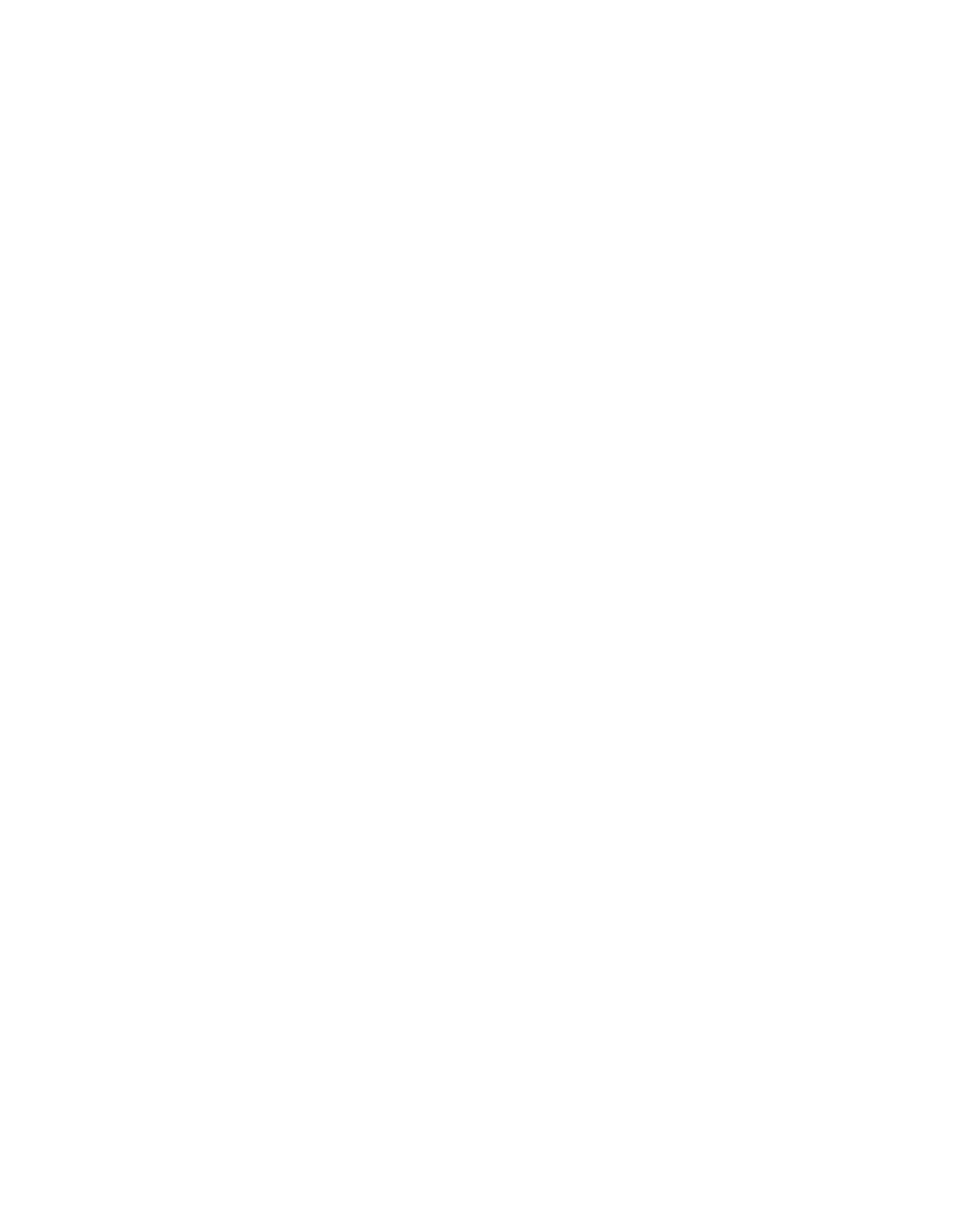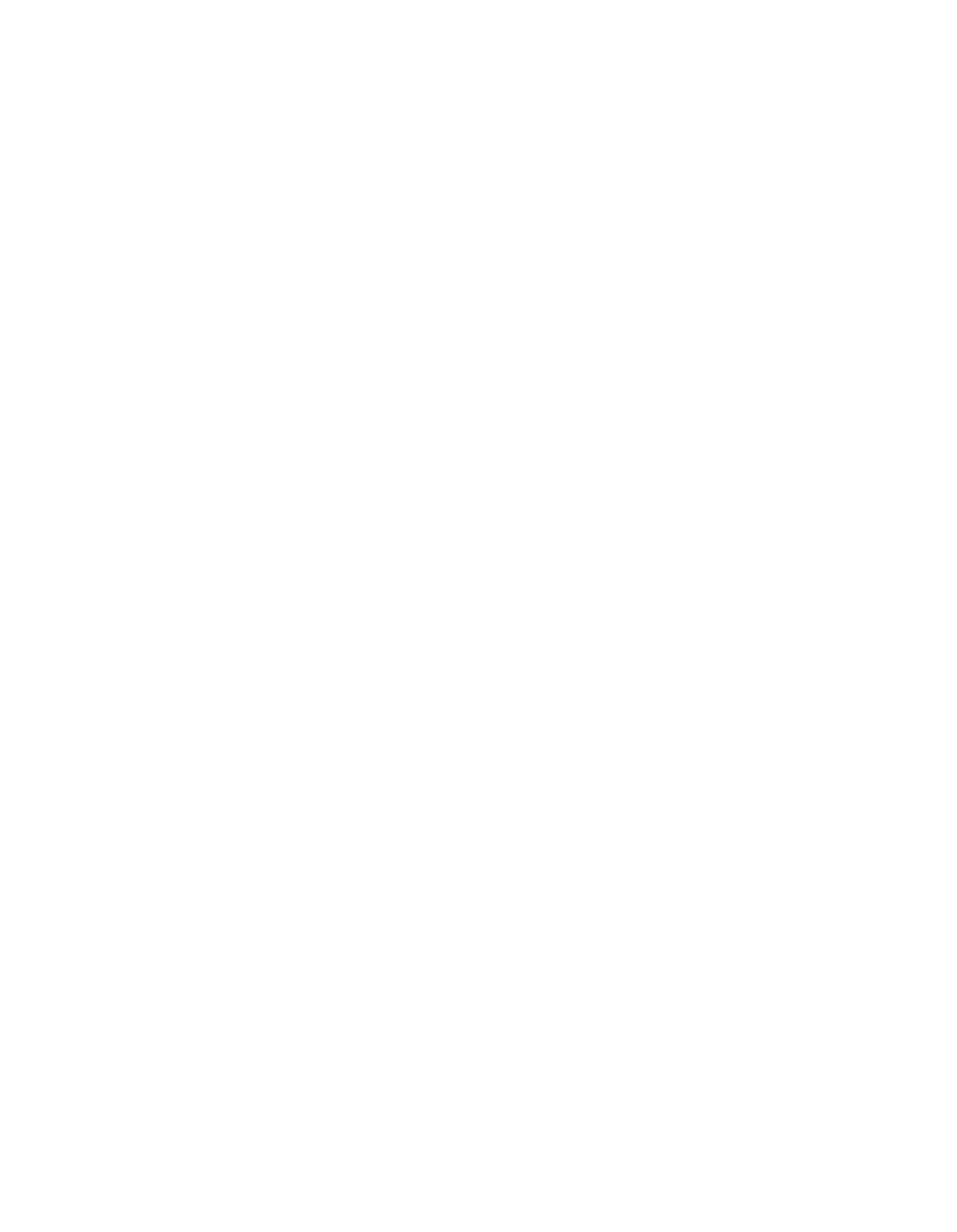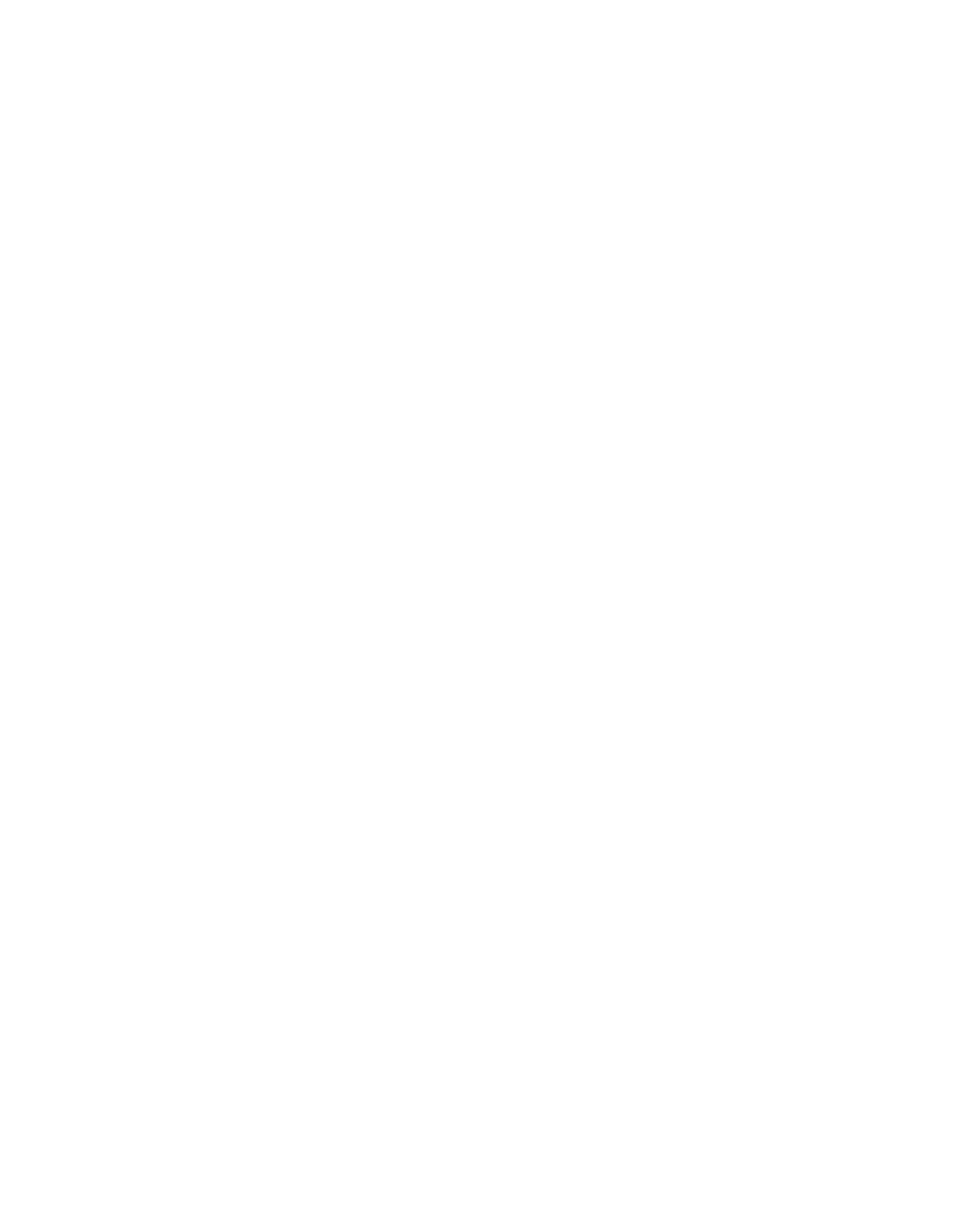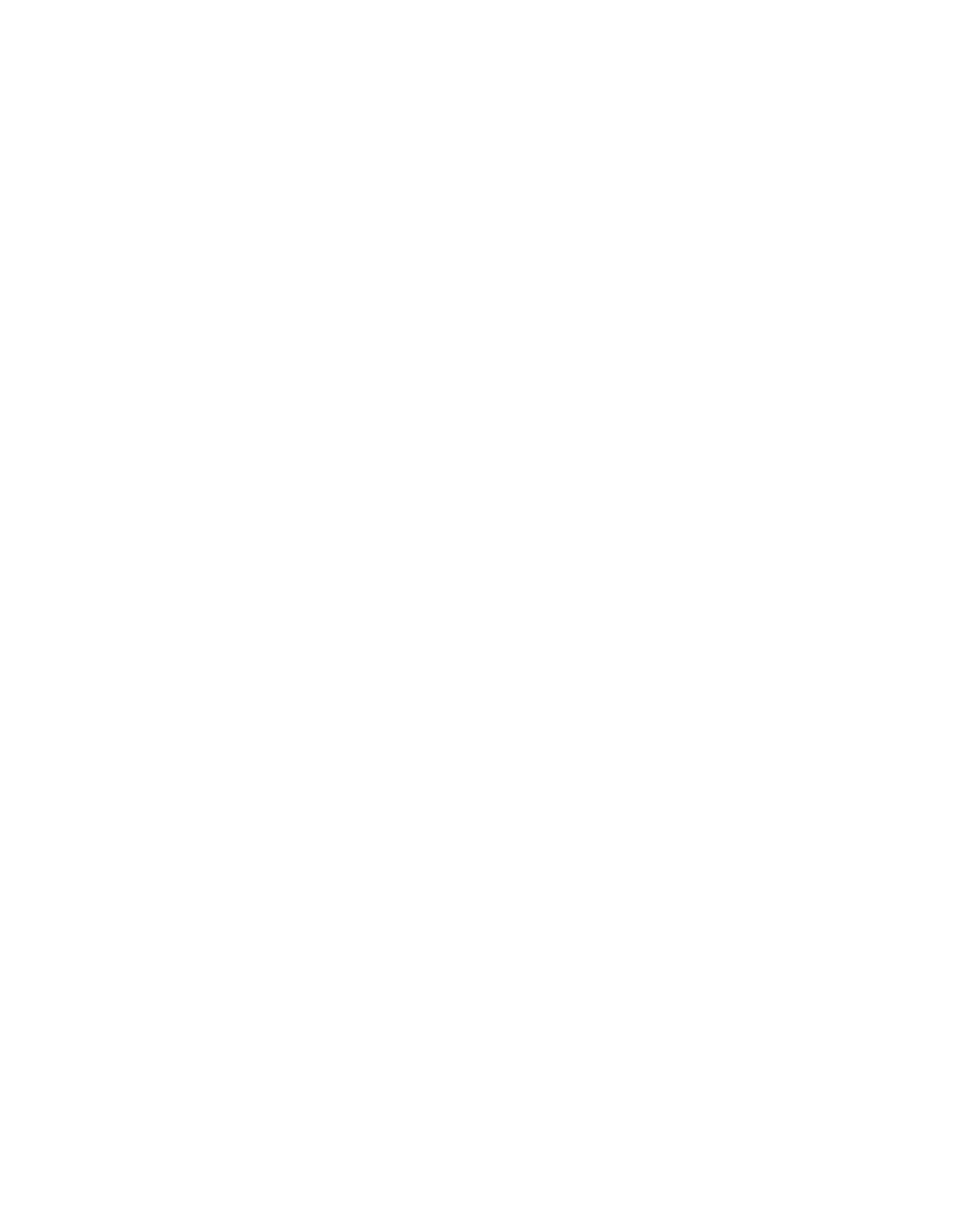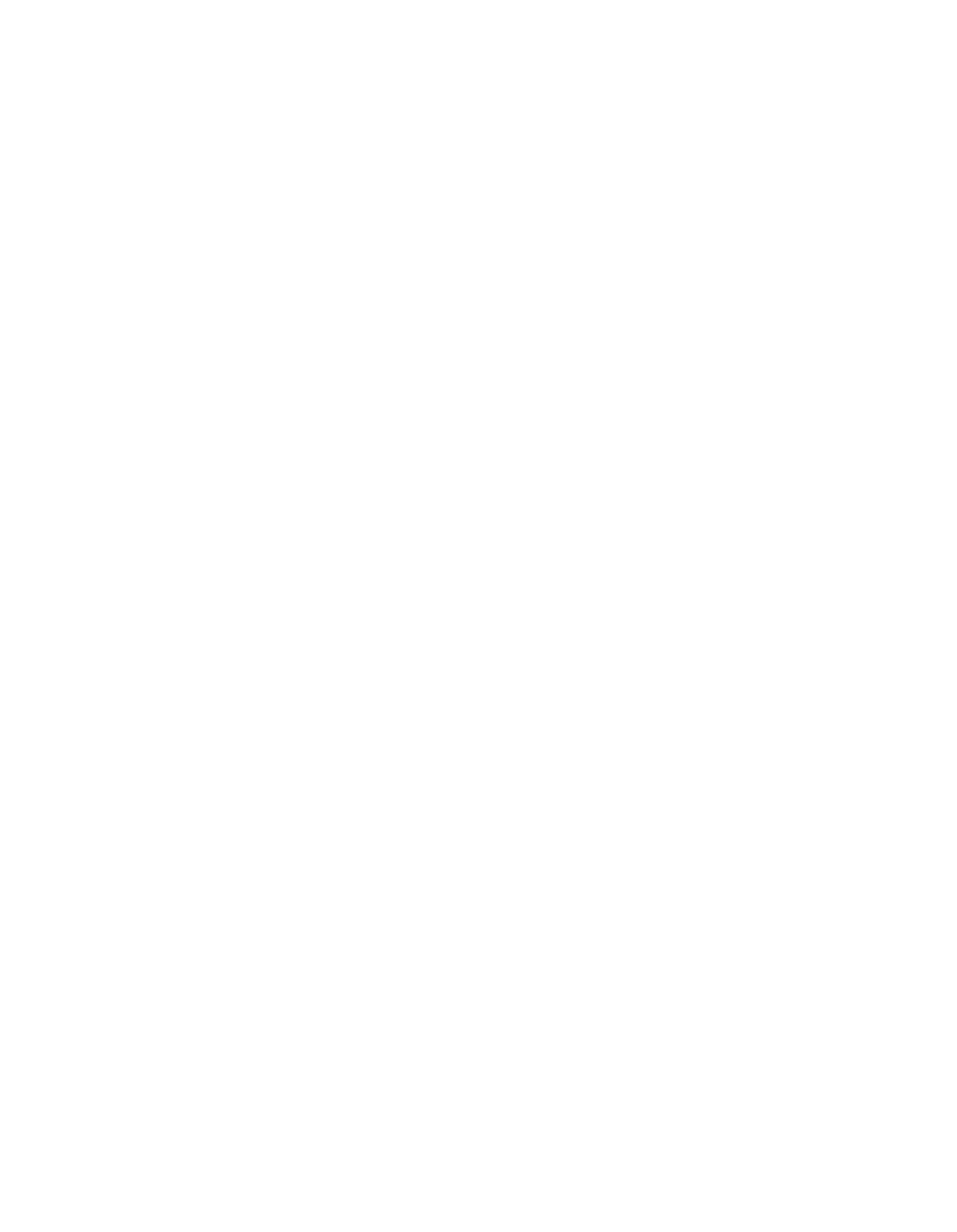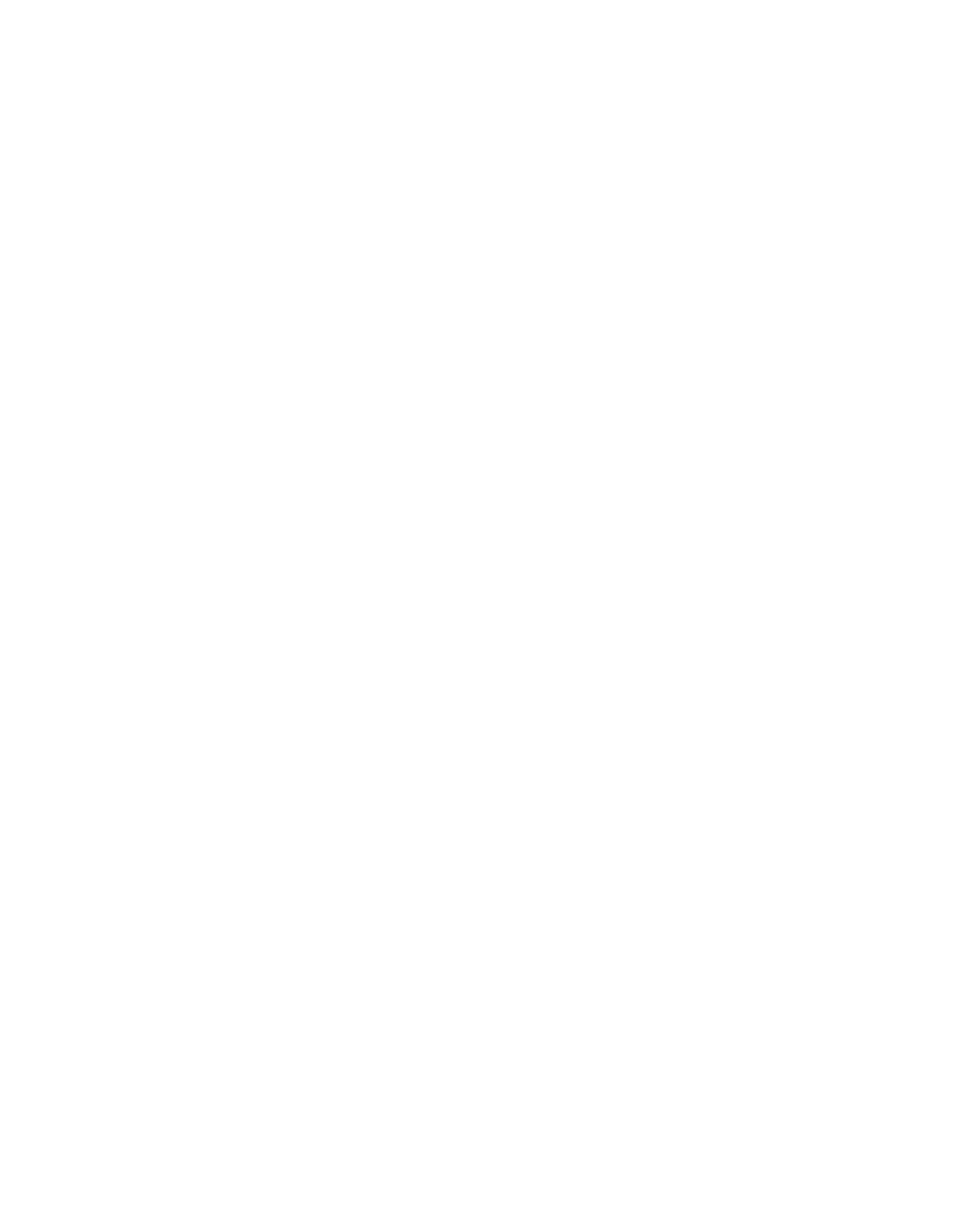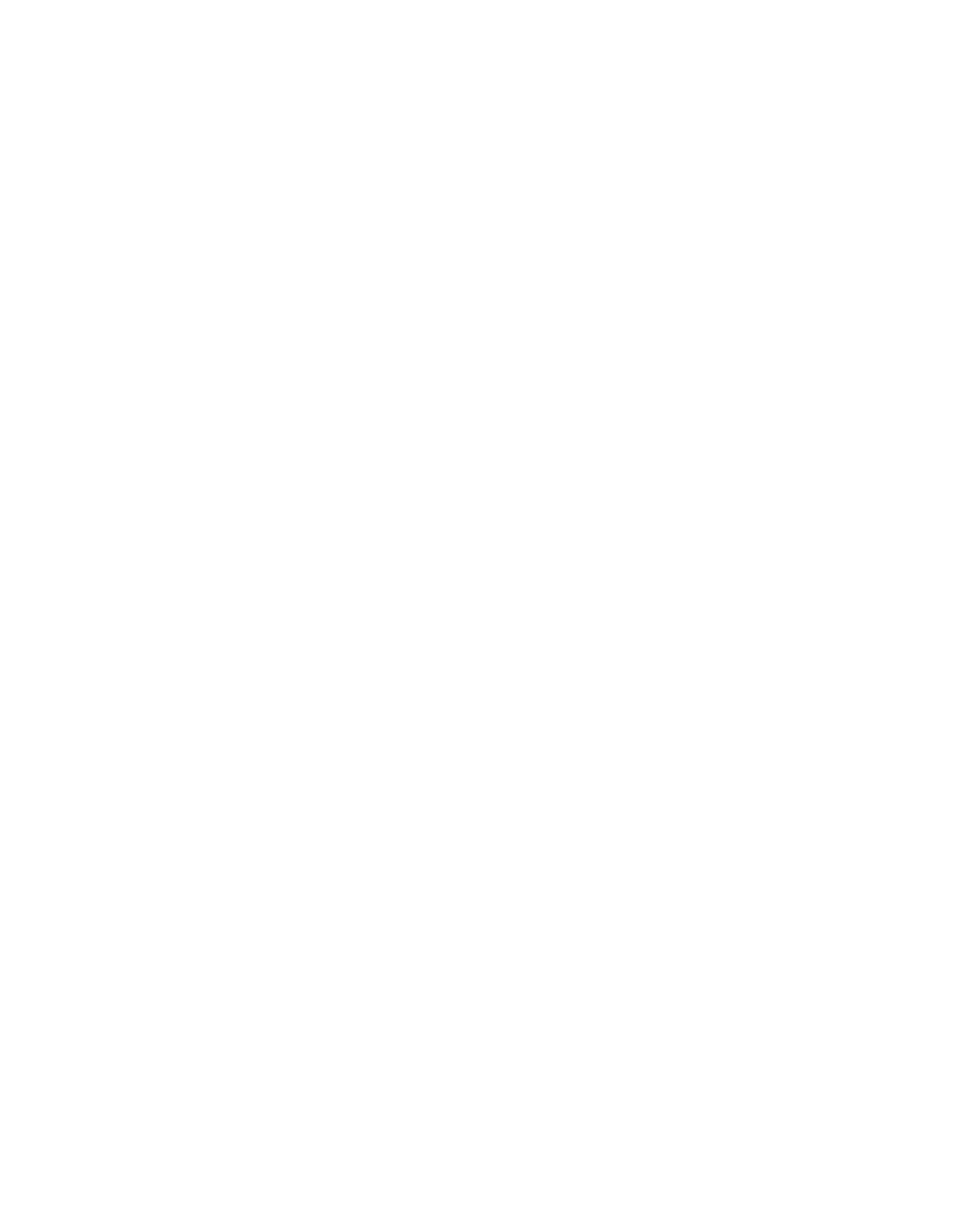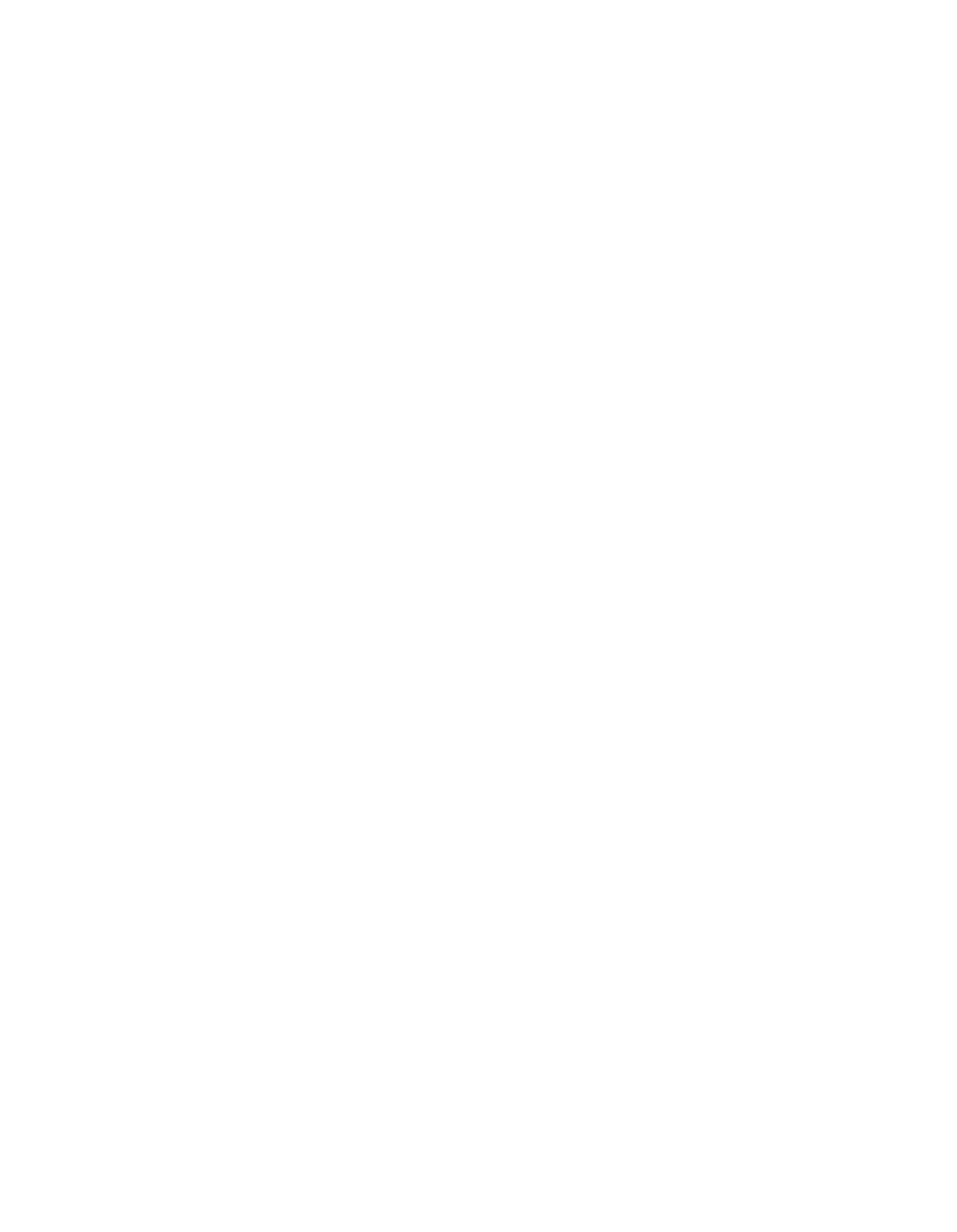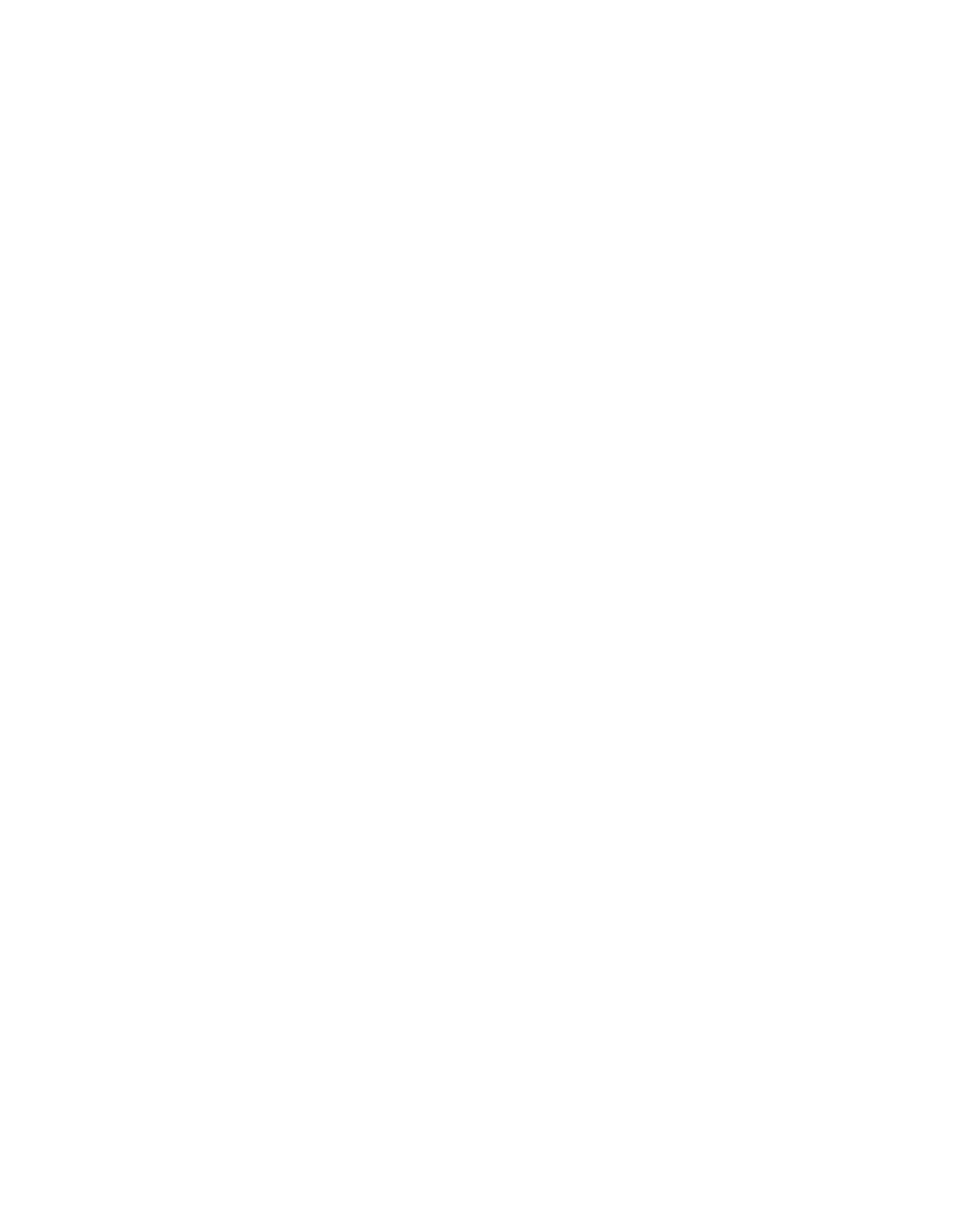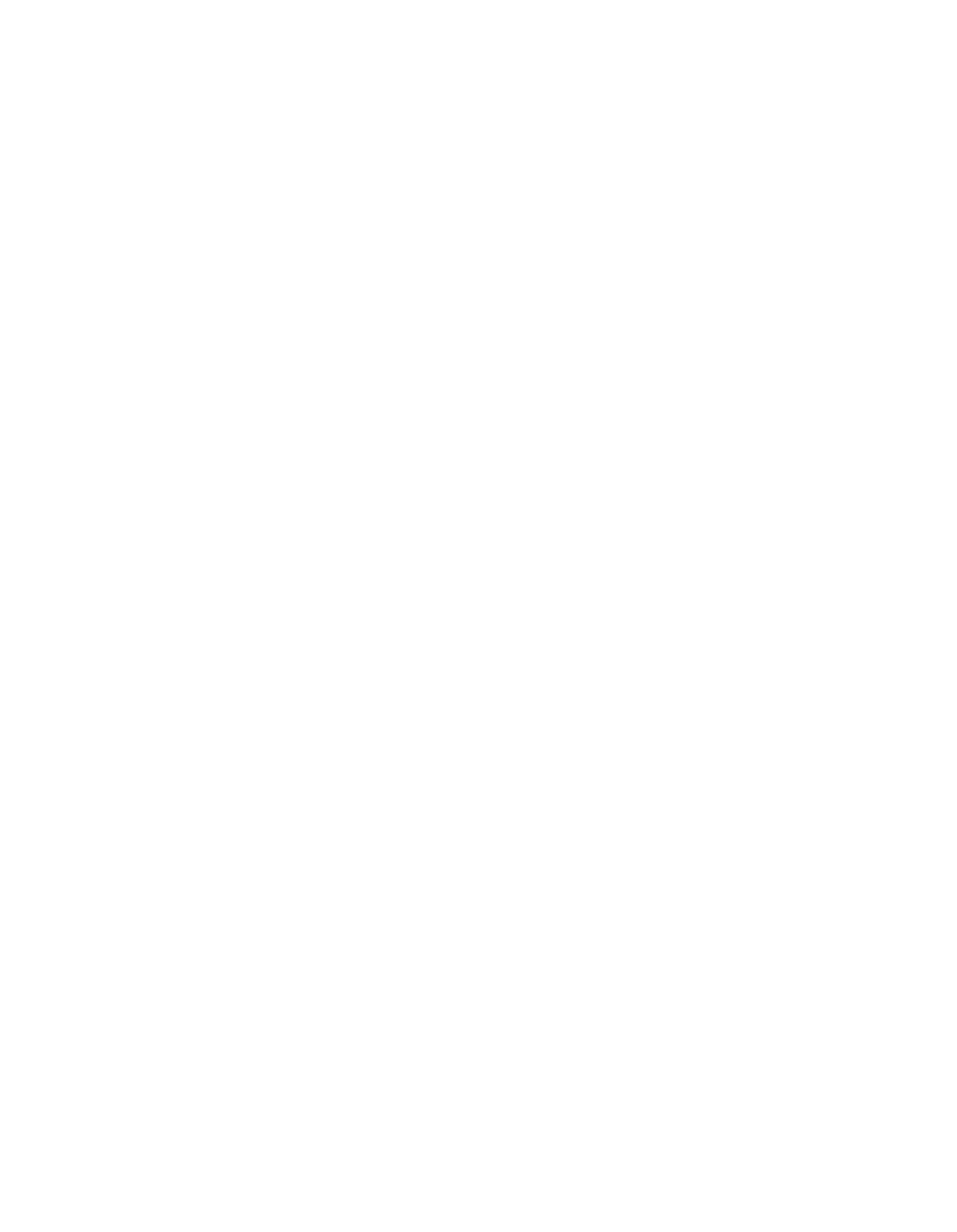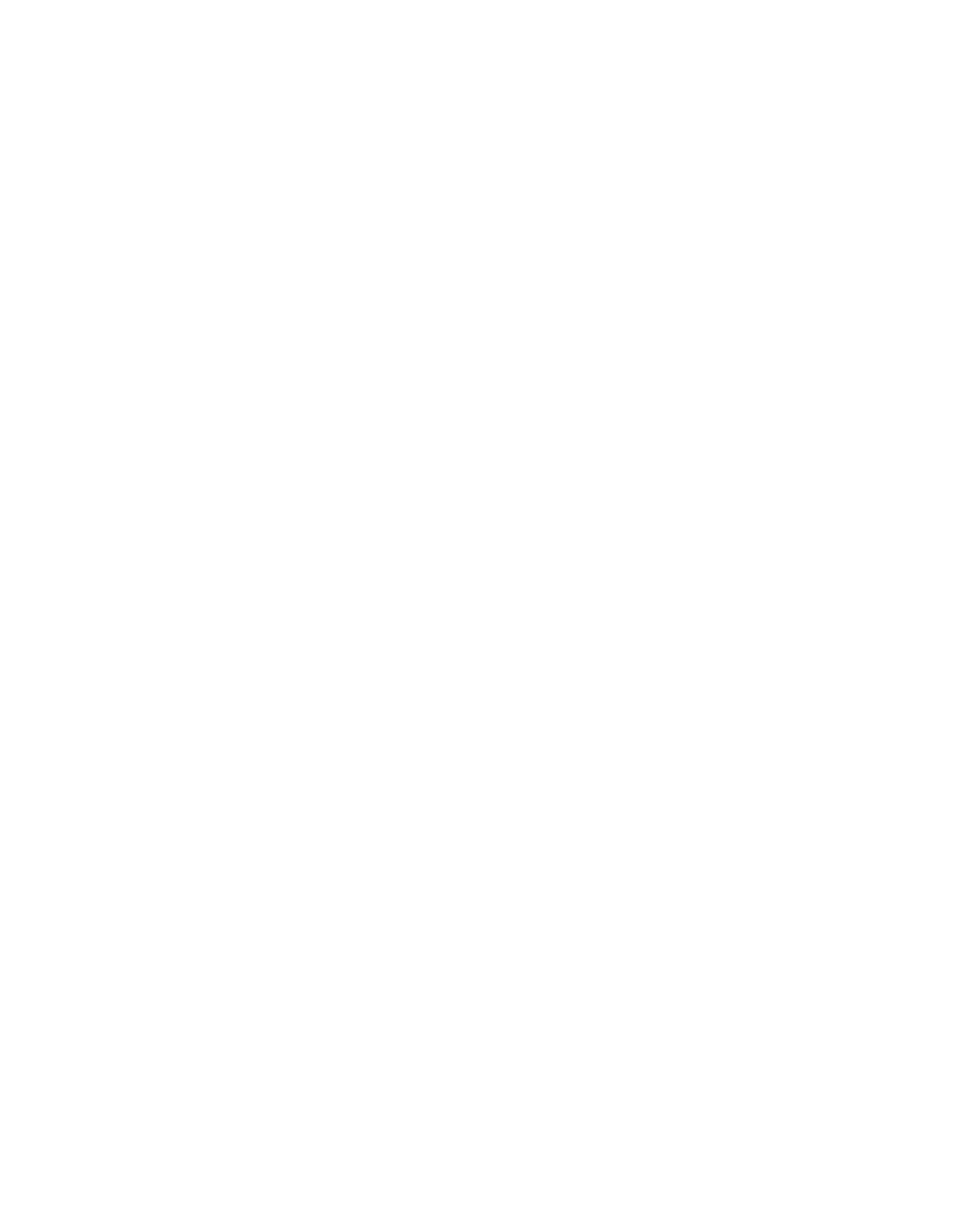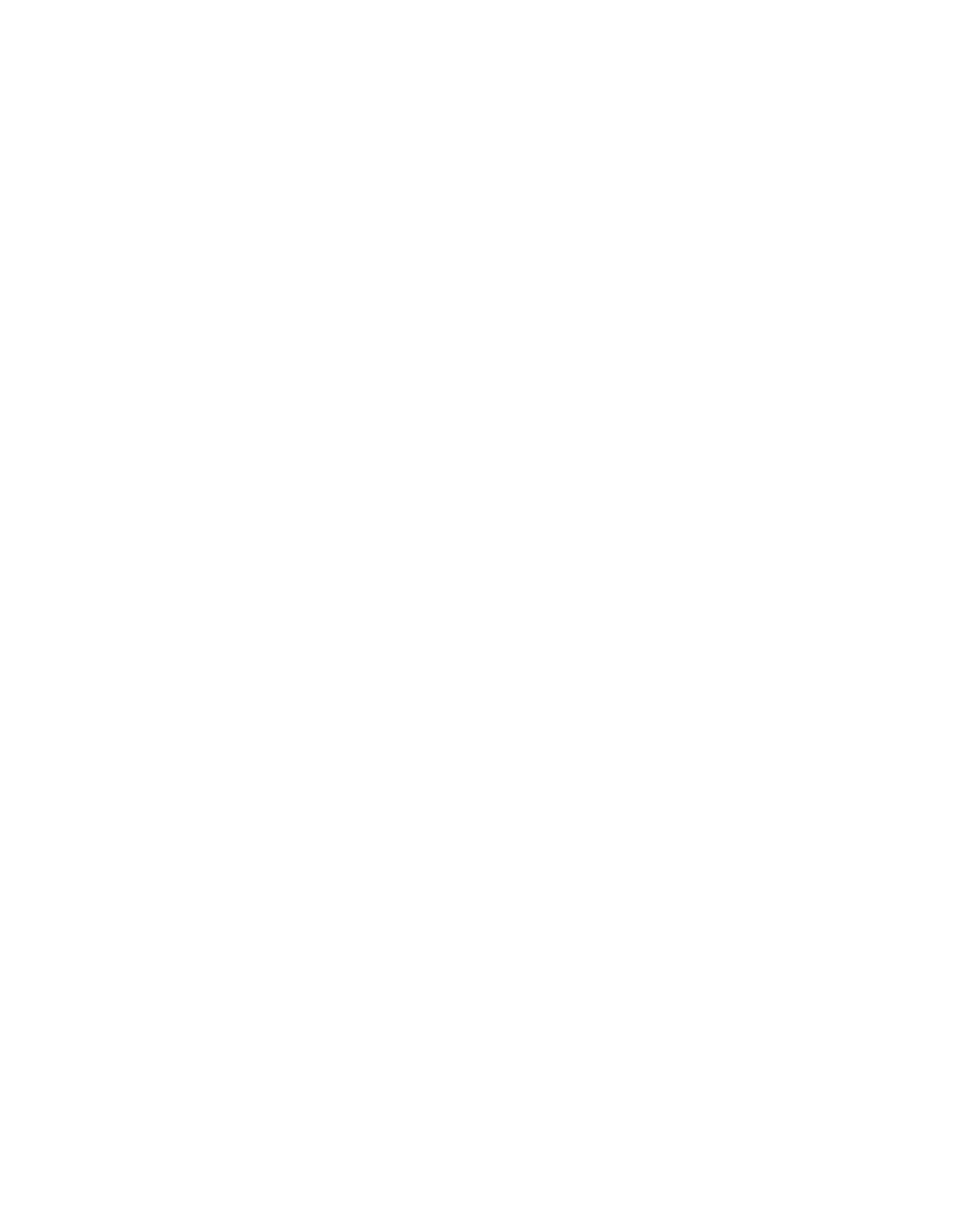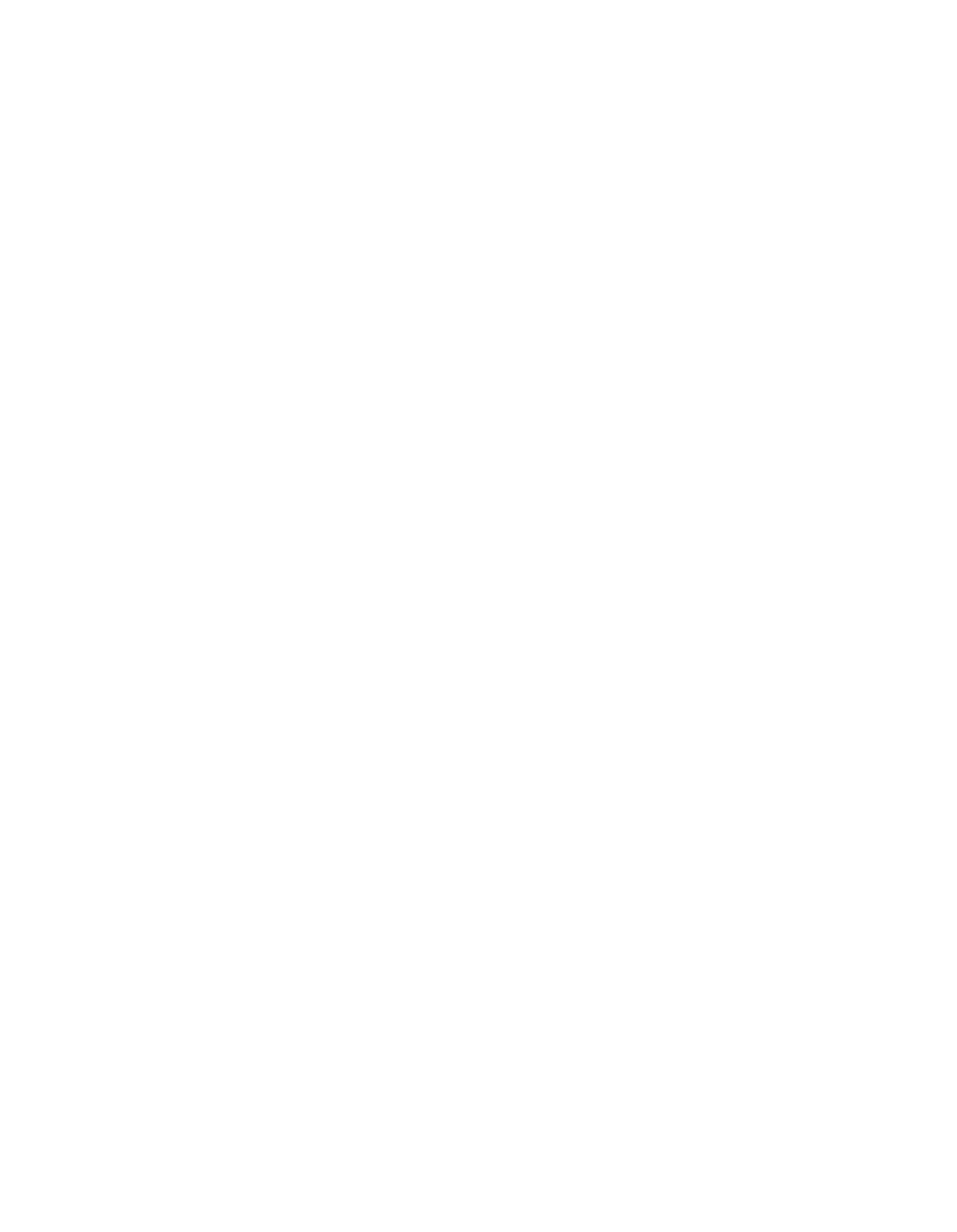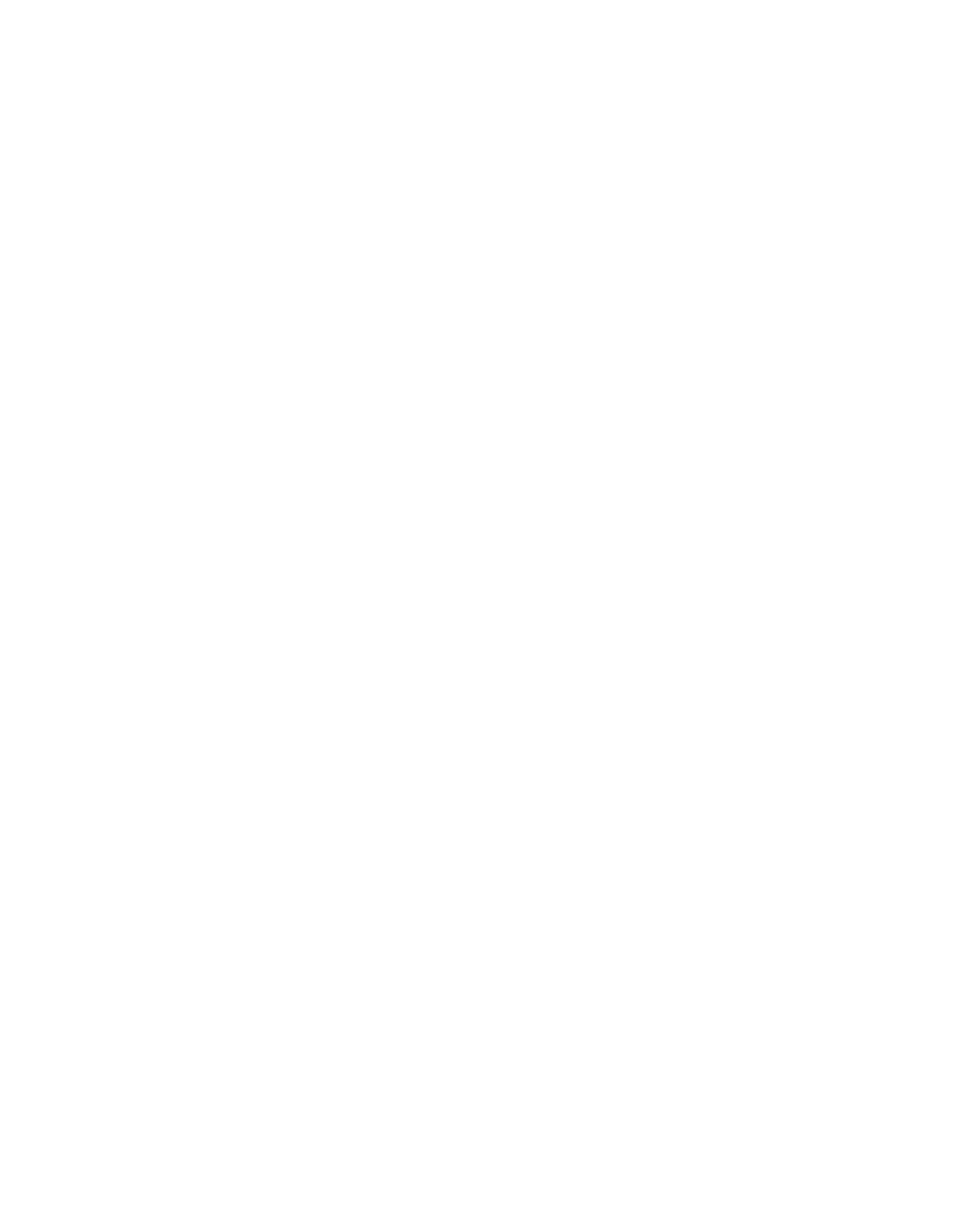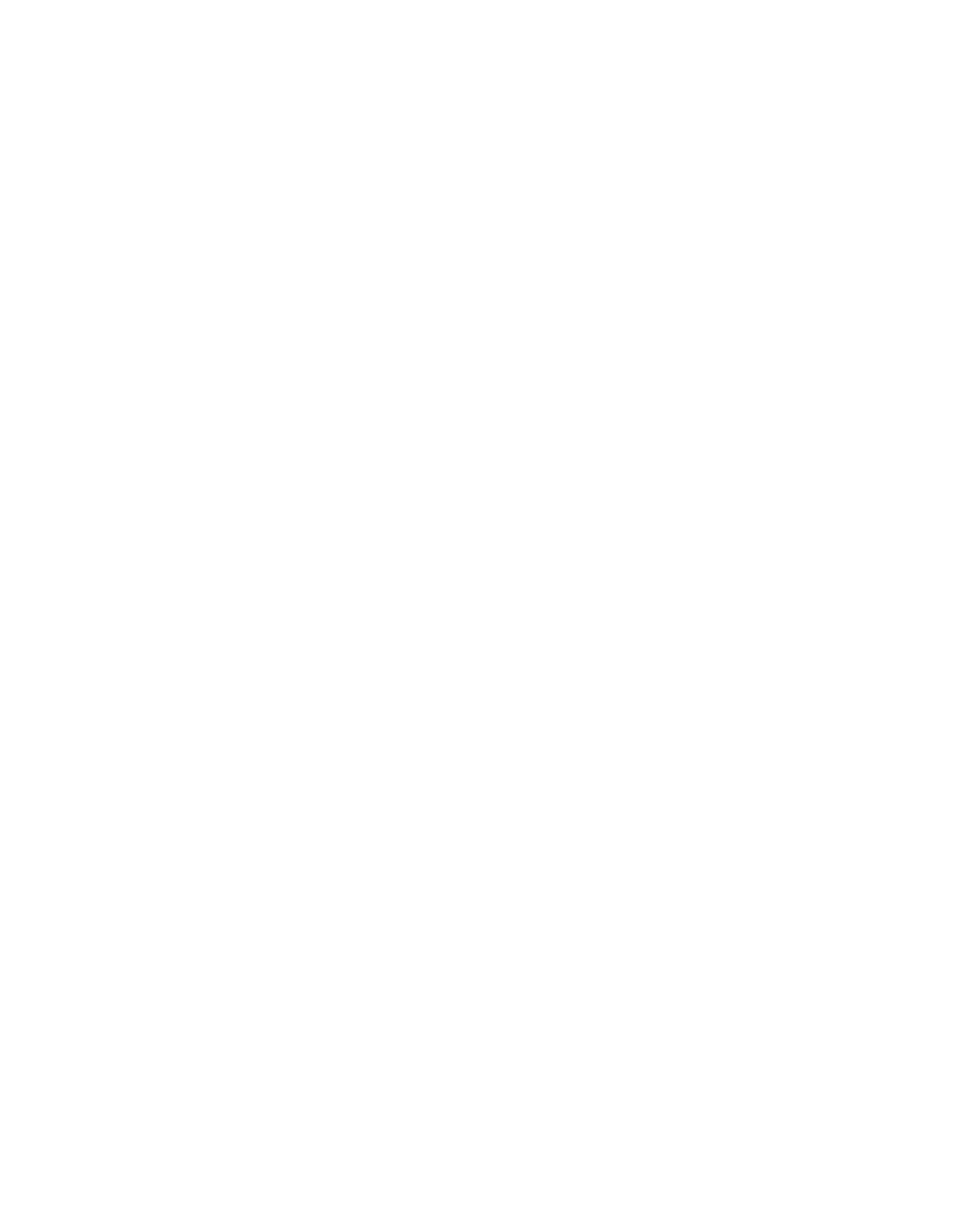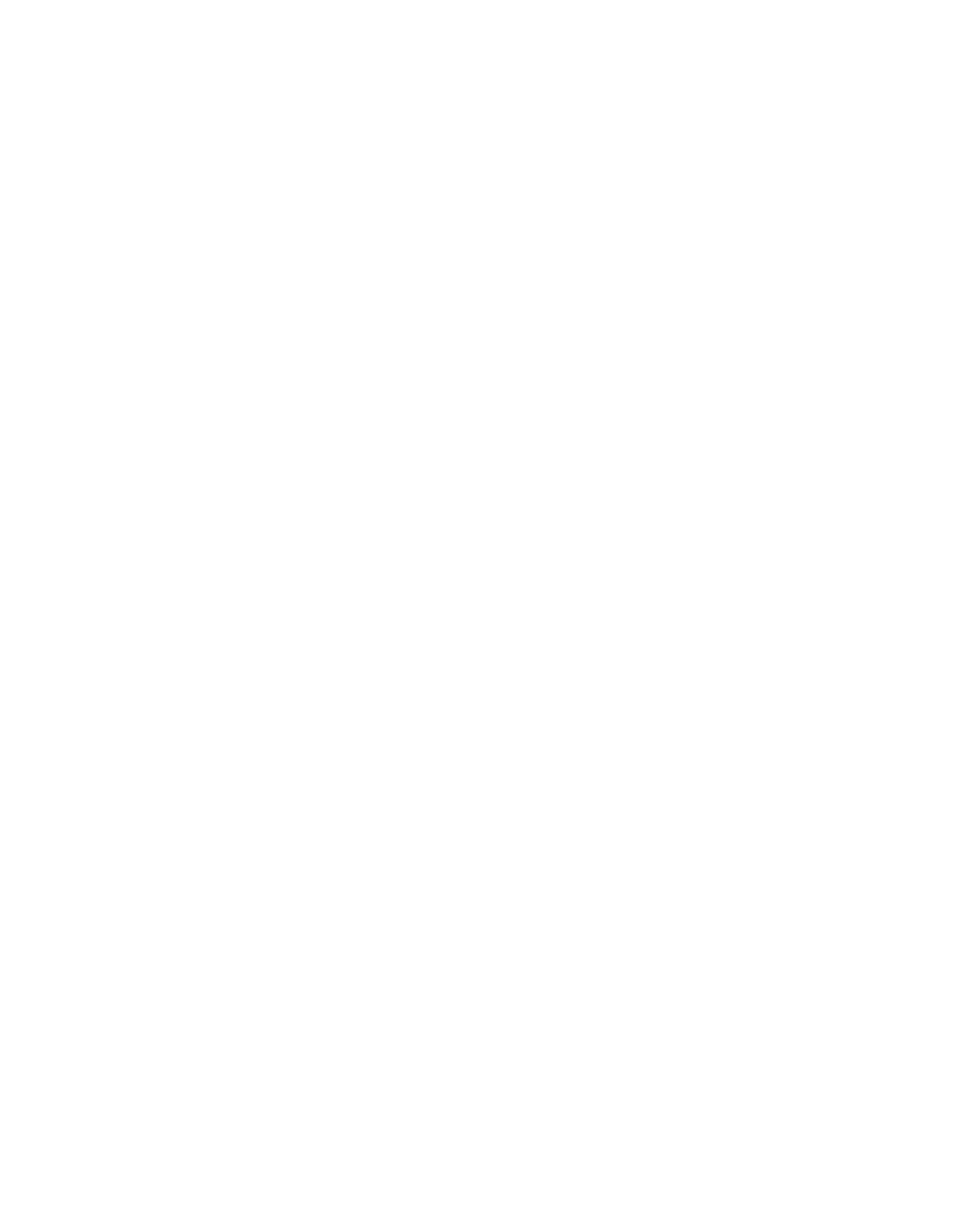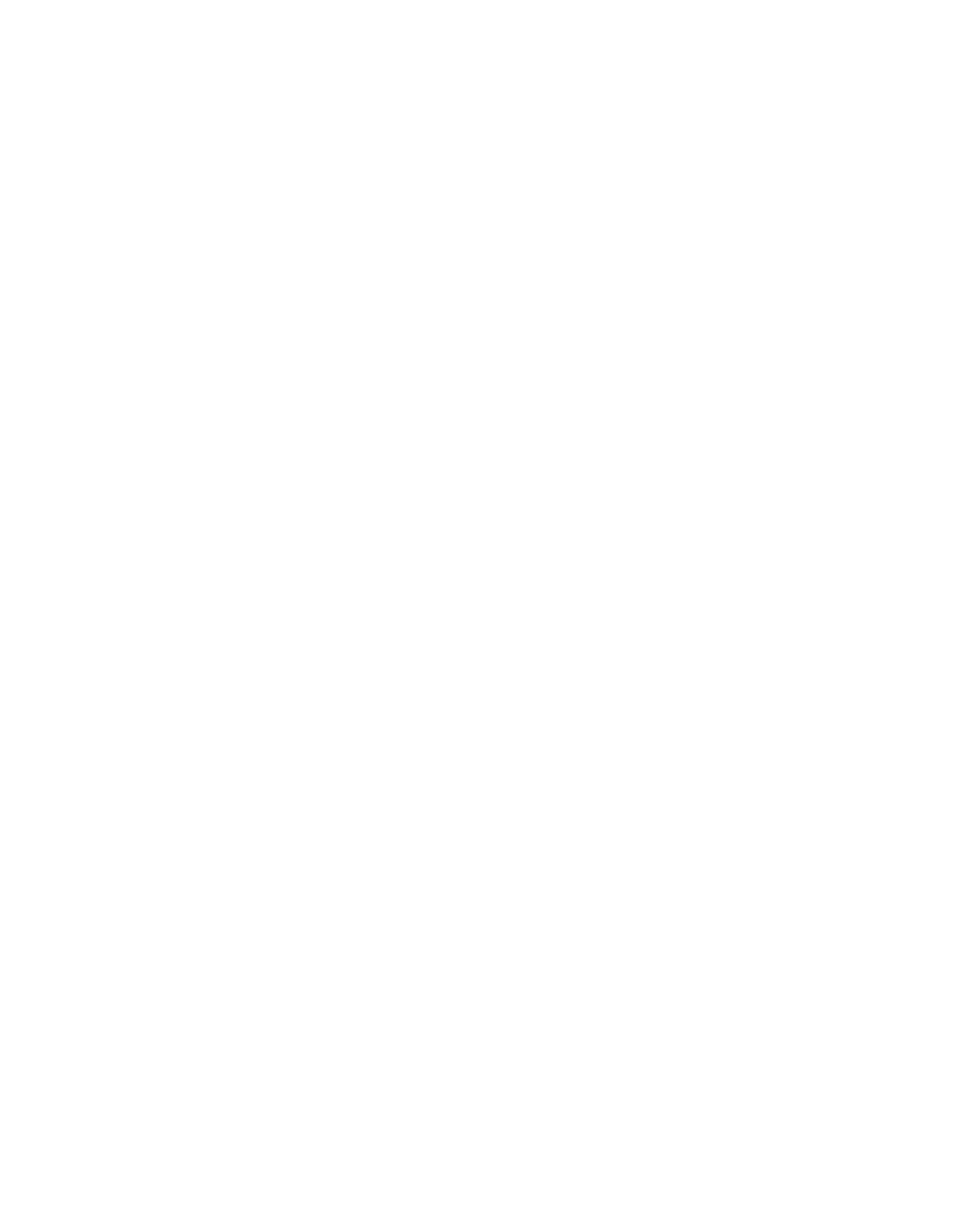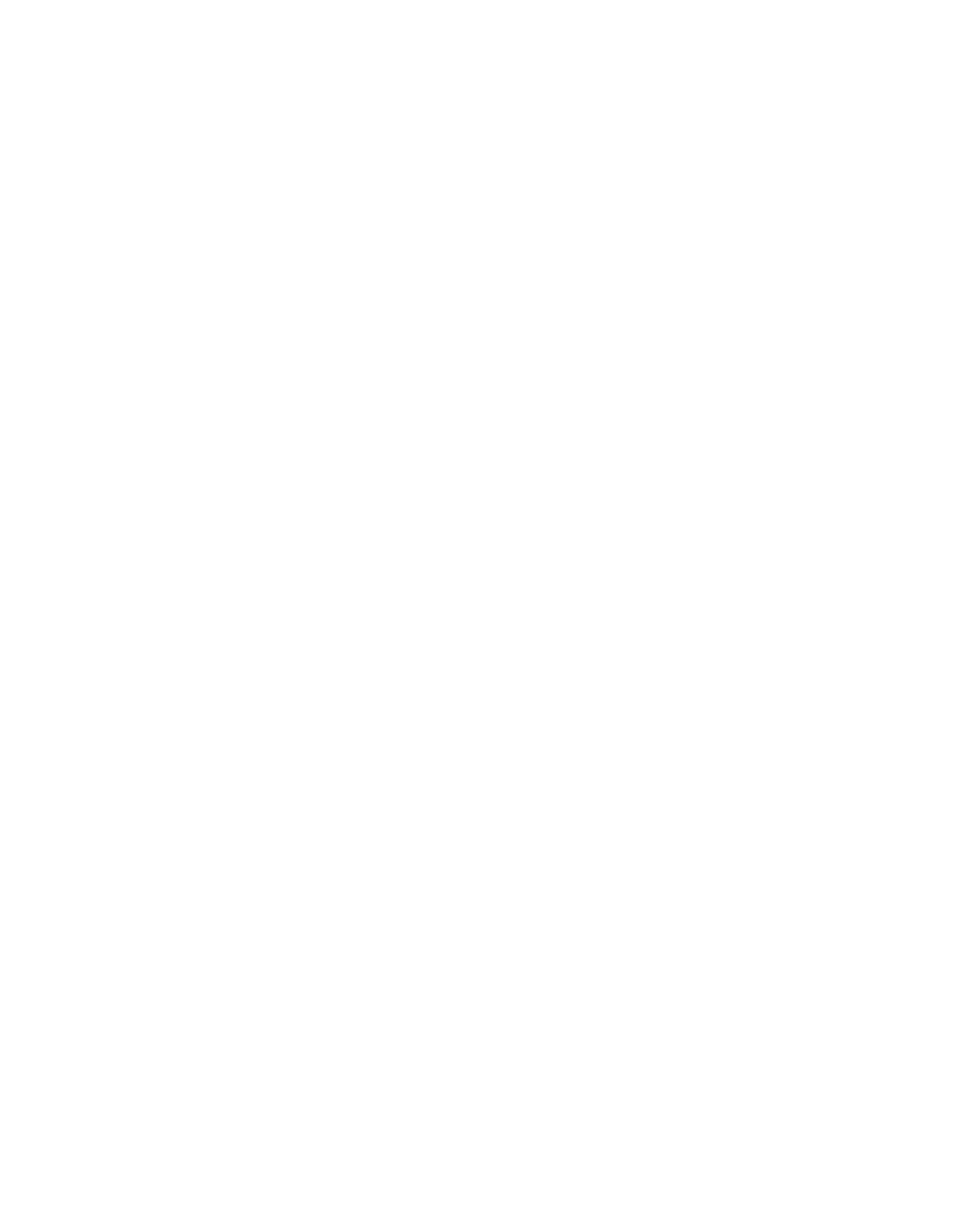ILLINOIS POLLUTION CONTROL BOARD
March
16,
1990
IN THE MATTER OF:
)
)
RACT DEFICIENCIES
-
)
R89-16, Subdocket (A)
AMENDMENTS TO 35
ILL.
ADM.
)
(Rulemaking)
CODE PARTS 211 AND 215
)
PROPOSED RULE.
SECOND
NOTICE.
PROPOSED OPINION AND ORDER OF THE BOARD
(by J.D. Dunielle):
This matter conies before the Board upon a September 29,
1989 proposal
for
amendments to 35
Ill.
Adrn.
Code 201, 2l1~and 215
filed by the Illinois
Environmental Protection Agency (Agency)
.
The Board proposed first notice on
October
5,
1989,
and the proposal was officially published
in the Illinois
Register on October
20 and 27,
1989
at
13
Ill.
Reg. 16285 and 16645.
A total
of five days of public hearing were held--December
7 and
8,
1989
in
Springfield,
Illinois, December
14 and
15,
1989 and January
19,
1990
in
Chicago, Illinois.
Post-hearing comments were scheduled to be filed
on
February 9,
1990.
Based upon the record of
R89-16 Subdocket
(A) compiled
to
date, the Board today proceeds
to second
notice on a select portion of
the
first notice proposal.
The remainder of the R89-16(A) proposal,
i.e.,
that
which
is not
being proposed for second notice today,
is being
transferred
to
the subdocket
(8) proposal created by Board Order of February 8,
1990.
BACKGROUND
This rulemaking proceeding has
its inception,
in part,
in
the settlement
agreement submitted to resolve the lawsuit
of Wisconsin
v.
Reilly.
As part of
that submittal, the State of Illinois agreed that
it would submit
to the
United States Environmental Protection Agency
(USEPA)
‘some or
all
of
the
reasonably available control technology (RACT)
rules
and
RACT rule
improvements
specified for Illinois
in Exhibit B,” which
exhibit includes a
listing of deficiencies
in the State Implementation Plan
(SIP).
For
its part in the
settlement agreement, USEPA agreed:
to propose as federal measures RACT rules
in accordance with an EPA
document dated May 25,
1988 entitled “Issues Relating to VOC
Regulation Cutpoints, Deficiencies,
and Deviations, Clarification To
Appendix
D
of November 24,
1987 Federal
Register notice (‘Bluebook’)
for Illinois to remedy the deficiencies described
in Exhibit
8,
by
December
31,
1989 and consistent with federal
laws (including the
*The Board notes that Deborah Stonich, new Assistant
to Board Member
J.
Anderson, earlier appeared on behalf of the agency
in this proceeding.
Ms.
Stonich has not participated
in the Board’s deliberations on
this proceeding
whatsoever.
I
—447
-2—
Administrative Procedure Act), to promulgate rules by the following
dates:
(i)
March
18,
1990,
for rules that Illinois fails to submit
to the Illinois Pollution Control Board by September 30,
1989, and
for rules for which, by December 31,
1989,
Illinois has failed
to
meet any one of the interim milestones specified
in Exhibit C;
or
(ii)
six months after any 1990 interim milestone specified in
Exhibit C that Illinois
has failed to meet,
but in
no event later
than December 31,
1990.
(Settlement Agreement,
p.
13).
Exhibit C,
referred to under USEPA’s agreement, states
in
its entirety
as
follows:
EXHIBIT
C
Action
Deadline
Illinois
EPA proposals filed
9—30—89
Illinois Pollution Control Board
decides EcIS question and
publishes first notice
12—22—89
Pollution Control Board holds
hearing and publishes second
notice
3-16-90
JCAR completes action and PCB
adopts final
rule
5—25—90
As previously noted, the Agency filed
its proposal on September
29,
1989,
thereby satisfying the first “milestone” date of Exhibit C.
In its proposal,
the Agency certified that the proposed amendments meet the “required
rule”
definition contained
in Section 28.2 of the Environmental Protection Act
(Act),
thereby invoking the Section 28.2 rulemaking process.
The Board notes
that this
is one of the first rulemaking proceedings
in which the Section 28.2
rulemaking process has been invoked.
As
a result, many of the issues
presented herein are
of first impression.
On October
5,
1989, the Board adopted the Agency’s proposal
for first
notice.
Without addressing
the substantive merits
of the proposal, the
Board
proceeded to first notice
simply to begin the Administrative Procedure Act
(APA) rulemaking process.
The Board noted that previously unregulated
sources
might
be affected and took its action to effectuate first
notice publication
in the Illinois Register to alert the potentially regulated community to the
existence of this proceeding
so that comments could
be timely made.
Also,
while
Illinois had in no way whatsoever committed in the settlement agreement
to
be bound by the rulemaking schedule
set forth
in Exhibit
C,
the Board
stated that
it would handle the proceeding on an expedited basis.
Further,
on October 27,
1989, the Board decided that an Economic
Impact
Study
(EcIS)
need nut be
prepared, thereby satisfying the second “milestone”
date of Exhibit C.
The Board’s discussion of the EcIS issue
is set forth
in
the Order of that date and will not be restated here.
As a general overview
109—448
—3—
of the Board’s reasoning,
the Board stated
its belief that there would be
ample potential for consideration of the economic impact absent the
preparation of the EcIS.
The Board noted that four days of hearing had been
scheduled and
that additional days could
be scheduled as needed thereafter.
Further,
in response to an Agency assertion that there was a very limited
degree to which the Board could modify the proposal
because of its “required”
nature, the Board specifically noted the
issue of the interplay between
Sections 28.2 and 27 of the Act and requested comment thereon.
The third “milestone” date of Exhibit C
is March
16,
1990,
by which the
Board
is to have held public hearings and to publish second notice.
Public
hearings have been held, and the objective of this Order
is
to proceed to
second notice on certain of the proposed amendments.
As
a result, the third
“milestone” date is satisfied.
REQUIRED RULEMAKING PROCEDURES
As previously noted,
the Agency certified that the proposed amendments
meet the “required rule”
definition
of Section 28.2 of the Act, thereby
invoking
the expedited Section 28.2 rulemaking process.
Section 28.2
provides:
a.
For the purposes of
this Section, “required rule”
means
a rule that
is
needed
to meet the requirements of
the
federal Clean Water Act, Safe Drinking Water Act, Clean
Air Act (including required submission of a state
Implementation Plan),
or Resource Conservation and
Recovery Act, other than
a rule required
to
be adopted
under subsection
(c) of Section
13, Section
13.3,
Section 17.5,
subsection
(a) or
(d) of Section 22.4, or
subsection
(a) of Section 22.7.
b.
Whenever
a required rule
is needed, the Board shall
adopt a rule which fully meets the applicable federal
law, and which
is not inconsistent with any substantive
environmental standard or prohibition which
is
specifically and completely contained
and fully set
forth within any Illinois statute, except
as authorized
by this Act.
In determining whether
the rule fully
meets the applicable
federal
law,
the Board shall
consider all relevant evidence
in the record.
c.
Within
21 days of the date that the Board accepts for
hearing
a proposal for
a required rule,
any person may
request the Board
to determine that
an economic impact
study
should be prepared or that an economic
impact
study should not be prepared.
Such request shall
be
made to the Board
in writing and
shall
detail the
reasons for the request.
To aid th~Board
in
determining whether an economic impact
study
is needed,
the person filing
a request
that an economic study
be
prepared or requesting that an economic study
not be
1fl9—44~)
-4-
prepared shall describe to the extent reasonably
practicable the universe of affected sources and
facilities and the economic impact of the proposed
required rule.
Within 60 days of
the date that the Board accepts for
hearing
a proposal for a required rule,
the Board shall
determine whether
an economic
impact study should
be
conducted.
The Board shall
reach its decision based on
its assessment
of the potential economic
impact
of the
rule, the potential for consideration of the economic
impact absent such a study,
the extent,
if any, to which
the Board
is free under the statute authorizing the rule
to modify the substance of the rule based upon the
conclusions
of such
a study,
and any other
considerations the Board deems appropriate.
The Board
may identify specific issues to be addressed in the
study.
d.
If the Board determines that an economic impact study
is
necessary,
the Department shall
prepare
an economic
impact study
in accordance with
“An Act
in relation to
natural resources, research, data collection and
environmental
studies:, approved July. 14,
1978,
as
amended.
The economic impact
study shall
be prepared
within 6 months of the date of the Board’s decision that
an economic impact study should
be conducted.
If the
economic impact study
is not submitted to the Board
within that 6 month period, the Board may proceed
to
adopt
a required rule without an economic
impact
study.
If the Board notifies the Department that
it
will proceed to adopt
a required rule without
an
economic impact study, the Department need
not complete
the economic impact
study.
To the extent possible
consistent with subsection
(b), the Board
shall
conduct
a hearing on the economic impact of the proposed
required rule.
During the course of this proceeding, three fundamental
issues have
arisen:
(1)
Is the Agency certification reviewable?
(2)
Is economic
reasonableness and technical
feasibility considered
in
a Section 28.2
rulemaking? and
(3) What is the applicable
federal
law that the Board’s
rulemaking must fully meet?
(1) Agency Certification
On February 8,
1990, the Board adopted
an Order
in response to a motion
filed
by the “Industry Group”
to dismiss or sever the proposed changes to
the
Generic and SOCMI
Leaks rules.
That Order addresses in detail
the issue of
what an Agency certification
is and concludes that a certification
is
reviewable
by the Board.
Further, with regard
to the specific issues raised
109—450
—5—
in that motion,
the Board determined that the proposed amendments
to the
Generic and SOCMI
Leaks rules were not founded upon federal
law such as
to
fall within the purview of Section 28.2.
Subdocket
(B) was created
to
consider those amendments under the regular rulemaking provisions of Sections
27 and 28 of the Act.
That discussion will
not be duplicated here.
That
Order will stand
as the Board’s decision on this issue.
The Board notes,
however, that on March
15,
1990 the Agency filed
a motion
to reconsider that
Order.
The motion
is not considered here as other participants have not as
yet received, let alone responded
to,
the motion.
On January
10,
1990, Stepan Company filed
a motion
to strike
and motion
for application of Section
28 rulemaking, arguing essentially that
the
Agency’s proposal
fails
to
identify the
“law”
to which the proposed amendments
will respond.
On January
23,
1990, the Agency filed
a motion for extension of
time to respond
to
the motion.
The Board granted the Agency’s motion on
January 25,
1990.
In
its post-hearing comments, however, Stepan
indicated that the Agency
would,
in its comments, provide written confirmation of its “interpretation of
the statutory provision Section
1O~and of the inapplicability
of the Generic
Rule to Stepan
by virtue
thereof.”
Stepan further stated that
in light of
that understanding,
the
issue
as
to
the status of
the Agency proposal
as a
required rule under federal
law as raised
in its motion
is moat.
On February
22,
1990,
the Board adopted
an order noting this language and
noting that the Agency had
in fact filed
comments confirming Stepan’s
assertions.
The
Board construed Stepan’s statement that the
issue
is moot as
a request
to withdraw its motion and granted the motion.
As
a result of the
substantive actions taken today, which are discussed below,
the Board does not
believe
it necessary to
look further into the
“required”
nature of the
remainder of the proposed amendments, beyond that which
is discussed
under
number
3,
below.
(2) Economic Reasonableness and Technical Feasibility
By far the most controversial
issue raised
in this proceeding
is whether
or not economic reasonableness
and technical feasibility are to
be considered
in a Section 28.2 rulemaking.
This issue was touched upon
in the Board’s
Order of February 8,
1990;
however, as post-hearing comments were scheduled to
be
filed on
February 9,
1990,
the Board opted
to await
all comments before
addressing
the issue.
The Board today decides
that economic reasonableness
and technical feasibility are necessary considerations
in
a Section 28.2
rulemaking.
As discussed above,
the Board decided on October
27,
1989 that an EcIS
would not be conducted.
Such decision was made pursuant
to the second
paragraph of Section 28.2(c).
The reasons for such decision are addressed in
the Order dated October 27,
1989.
As
an aside,
the Board notes that another
consideration also presented
itself.
The Exhibit
C
schedule of
“milestone”
dates has been previously noted.
The Board notes that that schedule does not
contemplate the preparation of
an EcIS.
In
fact,
the
only. way for the
Board
to meet the “milestone” dates
is for an EcIS
to not be prepared.
In
an
1O~)—45i
-6-
attempt to cooperate with and demonstrate good faith to the other parties
of
the Wisconsin lawsuit and
in recognition of the fact that economic and
technical information have traditionally been introduced during the hearing
process, and fully expecting that such would
be submitted during the hearings
in this proceeding, the Board chose to attempt to meet the Exhibit C schedule
over requiring the EcIS.
Had the Board known what would transpire, perhaps
that decision would
be different.
On the first day of hearing, December
7,
1989,
an Agency representative
stated:
The Agency
is not offering testimony on the technical feasibility
of
compliance,
the economical reasonableness of these proposed
regulations or the affected facilities.
This regulatory package
contains corrections
to deficiencies in the RACT rules identified by
USEPA.
According to the Settlement
Agreement,
if the Board fails to
timely adopt
the corrections
in an approvable
form, USEPA will
promulgate federal corrections.
In either case,
emission sources
will
be required
to come into compliance with rules implementing
these corrections.
In addition, this
information
is not necessary
for the Board
to adopt
a rule that fully meets the applicable
federal
law.
(Emphasis added.)
(R.
14—15.)
At
no
time before that date was the Board ever given
an
indication by the
Agency that
it subscribed
to this position.
In fact, the Board notes that
in
another “required”
rulemaking, R88- 21, Water Toxics,
adopted January 25,
1990,
an EcIS was prepared and economic reasonableness was considered.
That
notwithstanding, however,
the Agency chose to
let
its proposal
stand or fall
with this position on the scope
of
a Section 28.2 rulemaking proceeding.
The
remainder of the December
7 and 8 hearings was devoted to Agency testimony on
the
federal
justification of the proposed amendments and Agency statements
that
it was not prepared
to respond to questions involving economic
or
technical
justification.
On December
13,
1989,
the Hearing Officer issued
an Order directing the
Agency, and requesting USEPA,
to
be prepared to respond to certain questions
at the December
14,
1989 hearing.
The specific questions are as follows:
1.
Describe, to the extent reasonably practicable,
the types of Illinois
sources and facilities that are within “the universe
of affected sources
and facilities”
subject
to the proposed required
rules.
2.
Describe, to the extent reasonably practicable, by type,
approximately how many such sources and facilities would be affected
by
the proposed required rules.
3.
Describe, to the extent reasonably practicable,
the anticipated
economic effects
of the proposed
required rules on sources and
facilities.
Will
the effect and timing of
these rules result
in more
stringent standards
in
Illinois than elsewhere?
109—452
—7—
4.
Has either the IEPA or USEPA determined,
formally or informally,
whether the proposed required rules
are technically feasible?
Economically reasonable?
5.
If either answer
to
#4
is “yes”, what was the nature of
the
determination, and when and how was
it made?
6.
Is
it the position of either the IEPA or the USEPA that the substance
of the proposed required rules cannot be altered or modified
in any
significant substantive way (excluding typographical errors
and other
non—substantive matters)
if USEPA is
to grant its approval?
If so, what
is the authority for this position?
Has this authority been asserted
in
writing?
7.
If the answer to #6
is “no”, what procedure(s)
and what USEPA
official(s) determine whether
a modification is approvable?
At hearing
on December
14,
1989,
the Agency offered certain responses to these
questions on a deficiency
by deficiency basis.
The substance of
such
responses is addressed below under the specific deficiencies.
These responses
constitute the extent of the information submitted by the Agency regarding
economic reasonableness and technical feasibility.
At hearing on December
14,
1989, the Board received testimony from Mr.
Sidney Marder, Executive Director of the Illinois Environmental
Regulatory
Group
(IERG), on the issue of considering economic reasonableness and
technical feasibility
in a Section 28.2 proceeding.
Mr. Marder noted
that he
participated in the drafting of Section 28.2, along with many others.
Mr.
Marder stated his view that:
There
is
no way that
the business community would have agreed to
a change
in the Environmental Protection Act that would have incorporated
a
provision that would have allowed the Agency
to categorically say that a
federally mandated rule does not require the inclusion or the
consideration of economic
impact or technical feasibility.
(R.
261.)
Mr. Marder further noted his
view that Industry representatives traded off
the
need for an EcIS
as
a formal document
in certain
cases, but specifically
retained the right
to economic and
technical data pursuant to Section
27 of
the Act.
(R.
262.)
At hearing on December
15,
1989,
the Board
received testimony from Mr.
James Harrington, appearing on behalf of
the Illinois Steel
Group and the
Illinois Manufacturers Association.
Mr. Harrington
testified on the history
of Section 28.2 of the Act.
After providing background
information,
Mr.
Harrington stated
During this time,
it was never suggested by
the Governor’s Office,
Ms. Witter,
or Mr. Haschemeyer for the Agency,
or from anyone else
that
the requirement for economic reasonableness, technical
feasibility considerations would
be deleted from rulemaking pursuant
100_
4 ~
3
-8-
to Section 28.2.
Indeed,
in phone conversations,
I
believe industry
was assured that these requirements would continue
in effect.
And
that, therefore,
industry would
be protected from the adoption of
rules without the consideration of economic reasonableness, or
technical feasibility.
(R. 496-497.)
On January
18,
1990,
the Illinois Steel Group filed
a Memorandum of Law
Regarding Adoption of
RACT Rules, which provided argument in support of Mr.
Harringtons position.
In post-hearing comments, most
if not all
of the industry participants
stated that a Section 28.2 rulemaking proceeding must include
a consideration
of economic reasonableness
and technical feasibility.
In post—hearing comments, the Agency submitted
a brief regarding
its
interpretation of Section 28.2 of the Act and an affidavit of Mr. Delbert
Haschemeyer.
The Agency offers the affidavit of
Mr. Haschemeyer, Deputy
Director of the Agency,
in response to
the positions stated by Mr. Marder and
Mr. Harrington,
noted above.
In his affidavit,
Mr. Haschemeyer states that
the basic agreement between the participants which formed the foundation for
Section 28.2(c)
and
(d)
included:
That the economic impact
study (EcIS)
process with the involvement of
Economic Technical Advisory Committee (ETAC) was cumbersome, time
consuming and frequently non-productive.
That a new process was needed
which offered greater flexibility for the development and consideration
of economic information to the extent
such information was relevant and
necessary to the Board’s consideration.
That the role of economic
information
in
a required rule and the Board’s
ability to consider economic information would vary depending on the
nature of the Federal
requirements and the nature
of the proposed
rule....
The question presented is whether economic information
is relevant to the
Board’s consideration of the substance of
the rule.
That
is, would
consideration of economic information change the substance of the rule.
If not, then the Board could proceed without
such consideration.
(Affidavit
pp.
2—3)
Finally, Mr. Haschemeyer
states that the Board’s need to consider economic
information
in required
rulemakings
is contained entirely and exclusively
in
Section 28.2 and
that depending on the nature of the Federal requirement and
the nature of
the proposed
rule,
that need can vary from none at
all
to the
need for a full blown EcIS and consideration thereof.
The Agency’s brief argues basically as follows.
The first issue
is
whether the rules proposed are
indeed needed
to meet the requirements of
federal
law.
It
is the Agency’s position that the rules proposed herein are
needed
in order for Illinois to meet the requirements of
Sections 110(a)
and
172(b) of the Clean Air Act
(CAA).
Thus,
it argues that the applicability
requirements of Section 28.2 have been met.
The
second issue
is whether the
109—454
-9-
rules proposed fully meet the applicable
federal
law under Section 28.2 and
whether they,
or some other rules which fully meet the applicable federal
law,
should be adopted by the Board.
The Agency notes that
if
a rule
is
needed to
meet the requirements of
the federal
CAA, the Board
is mandated
by Section
28.2 to adopt
a rule which fully meets
the applicable federal
law.
The Agency
continues:
Several arguments have been offered asserting that the Board must
consider the economic
reasonableness, economic impact
and technical
feasibility of proposed regulations
in a proceeding pursuant
to Section
28.2 of the Act.
Under the plain
language of the section, this depends
upon whether there
is more that one alternative which “fully meets the
applicable federal
law”, since the Board must adopt
a rule which does
so.
If there
is only one alternative that the Board can determine will
satisfy the standard for a required rule, the Board must adopt that
proposal.
Obviously consideration of other
factors would be unnecessary
and irrelevant
in such
a situation.
*
*
*
A review of the record establishes that the Agency has provided a
substantial body of
relevant evidence
to the Board to support its
assertion that adoption of its proposed rules will
fully meet the
applicable federal
law, including the CAA.
Such evidence includes
written documentation and sworn testimony by USEPA representatives.
The
USEPA testimony was that the Agency proposals,
if adopted by the Board,
will meet the requirements of applicable
federal
law....
Nothing
comparable has been provided for any alternatives
to this Agency’s
proposal.
In the absence
of specific competing proposals,
with
supporting evidence
in the record
showing alternatives which meet the
applicable federal
law, the Board has no choice but to comply with
its
statutory mandate and adopt
the Agency’s proposals.
(Agency Brief pp.
4-
5.)
Finally, the Agency believes that resort
to
the legislative history behind the
enactment of Section 28.2
is unnecessary because the statute
is clear and
unambiguous on
its face.
With this final
comment the Board concurs.
The Board does not believe
it
necessary to
look beyond
the language of Section 28.2 of
the Act to determine
whether economic reasonableness
and technical feasibility are to
be considered
in
a Section 28.2 rulemaking.
Section 28.2 specifically contemplates the potential for preparation of
an EcIS.
The fundamental
distinction between the rulemaking procedures of
Section 28.2 and
the regular rulemaking procedures
is that
if an EcIS is
requested
in
a
Section 28.2 rulemaking the Board can proceed after 6 months of
the date the EcIS was requested whether or not the EcIS
is submitted.
Nowhere
in Section 28.2 does
it
say that economic reasonableness and technical
feasibility, which
are required
by
Section
27,
are not
to
be considered
in
a
required rule proceeding.
It
is
a basic rule of
statutory construction that,
if
reasonably
possible
to
do
so
without
violence
to
the
spirit
and
language
of
10~—45S
-10-
the statute, the provision being construed should
be
interpreted so as
to give
the statute efficient operation and effect
as
a whole.
See, e.g. Pliakos v.
Illinois Liquor Control Commission,
143 N.E.2d 47,
11
Ill.
2d
456 (1957).
In
order to give all provisions of Title VII
of the Act there
intended effect,
the Board
believes that
it is required to consider economic reasonableness and
technical feasibility
in any rulemaking unless the statutory authority for
that rulemaking explicitly exempts those
issues from consideration, such as
in
Section 17.5 of the Act, or unless the statutory language clearly indicates
that those
issues need
not be considered,
such
as
in Section 7.2 of the Act.
Section 27* has been construed by the courts
as
a
broad requirement that the Board “take
into account”
certain factors
in promulgating
its pollution control
regulations reflects
a legislative recognition of
the
complexities of pollution control technology and of the
differing levels of sophistication of control methods
associated with various types
of pollution.
The
requirement of Section
27
is
a flexible one and of
necessity requires that a great deal of discretion
be
exercised by the Board.
Shell
Oil
Co.
v.
IPCB,
37
Ill.
App.
3d 264 346 N.E.2d 212 221
(1976).
In the context of cases
affirming the Board’s adoption of a prior
set of
RACT rules adopted by the Board, the appellate courts have stated that the
Section does not mandate any particular standards with which the Board must
comply,
and does not establish that the Board must support its regulatory
conclusions with any given, specified quantum of evidence.
Illinois State
Chamber of Commerce v.
IPCB,
177 Ill. App.
3d 923,
532 N.E.2d 987
(1988);
Stepan Co.
v.
IPCB,
N.E.2d
,
Ill. App.3d
(no. 3-88—004, Third
Dist., February
8,
1990),
(slip op.as 8), Section
27 does,
however, require
the Board to
“take
into account” economic reasonableness when making
its
decisions.
There
is no conflict between the mandates
of Section 27
and 28.2,
although Section 28.2 may
limit Section 27’s broadest
scope.
Thus, economic reasonableness
and technical feasibility
will
be
taken
into account
in a Section 28.2 proceeding,
as any other consideration required
by Section 27
of the Act.
However, the weight that will
be given to
those
*Section 27(a)
of the Act states
in relevant part:
In promulgating regulations under this Act, the
Board
shall
take into account the existing physical
conditions,
the character of
surrounding land uses,
zoning classifications,
the nature
of the existing
air quality,
or receiving body of water,
as the
case may be,
and the technical feasibility and
economic reasonableness of measuring or reducing
the particular
type of pollution.
109—456
-11-
considerations can depend upon certain variables,
which include but are
not
limited to,
the nature of the subject matter, the specifity of the federal
requirements, and any federal deadline.
This proceeding,
entitled “Reasonably Available Control Technology
Deficiencies”,
is
a somewhat unusual
proceeding.
It
is
a proceeding
in which
economic reasonableness considerations
are inherent
in the subject matter.
Further,
it
is
a proceeding
involving the same issues
as
the Board has
considered
in previous rulemakings.
During the
past several years, the Board
has conducted many rulemakings resulting
in the adoption of Illinois’
existing
RACT rules.
The Board determined, based on records that included Economic
Impact Studies, that the existing regulations constitute RACT in
Illinois.
Thus, the
Board
is
being asked
to reevaluate those prior determinations, which
themselves
involved considerations of economic reasonableness and technical
feasibility.
The Board
is
not persuaded to now completely ignore
those
considerations
in correcting the deficiencies in those
rules.
The Agency’s arguments concerning economic reasonableness
and technical
feasibility will,
therefore,
be directed to
the “weight” that those
considerations should receive.
To support
its view that economic information
is not necessary for the Board
to adopt the proposed rules, the Agency relies
upon the language in Section 28.2(c), which states:
.the extent,
if any, to which the Board
is free under the statute
authorizing the rule to modify the substance of the rule based
upon
the conclusions
of
such a study,...
The Board
notes that this language
is relevant
to the Board’s decision
as
to
whether an EcIS
shall
be prepared,
and only to that
issue.
This language
is
not relevant to,
and does
not affect,
the Board’s underlying authority to
consider economic reasonableness and technical feasibility
in promulgating
regulations under Section 28.2.
Further,
the Board
notes that identical
language
is also found
in Section 27(a), paragraph
1 of
the Act,
and has
not
been interpreted to limit the scope
of the Board’s obligations
in rulemaking.
Further, the Agency apparently believes that because USEPA has stated
that the proposal,
if adopted, would
be approved
and because
no other
participa~thas offered
an
alternative to which USEPA has made the same
statement
,
its proposal
is
the only alternative and must therefore be
adopted.
The Agency appears
to equate the number of proposals with the number
of potential alternatives.
The Board cannot and does
not accept this
argument.
First, the Board
notes
that the Agency itself
has proposed
a number
of alternatives to
its original proposal
as the record developed and
as
it
better understood the ramifications of
its proposal.
Second,
it
is the
*The Board
notes the Agency’s reliance upon USEPA!s letter
to support its
proposal but
is
troubled
by the Agency’s reliance on the letter
to argue
against any alternatives.
The Board questions
how
a USEPA
letter addressing
alternatives would be forthcoming.
In other words,
what
is
the likelihood
of
any participant
other than the Agency obtaining such
a
letter
in
a timely
manner?
109-
4 57
—12—
province of the Board to determine whether alternatives exist based upon the
information
in a given record.
The Board’s determination cannot be limited
in
this respect solely by the number of proposals filed
in a rulemaking
proceeding.
Again,
under Section 28.2 of the Act, the Board
is to determine
whether the proposed rule fully meets the applicable federal
law.
To yield to
the procedure suggested by the Agency would
be
a clear abdication
of the
Board’s mandate under the Act.
The Board
is not persuaded that the Agency’s proposal
is the only
alternative which would be approvable.
USEPA has
stated that the Agency’s
proposal
is approvable.
However, this does not mean that ipso facto other
alternatives would
not also be approvable.
In fact,
a representative of
USEPA,
in response to a question regarding whether the substance of the
proposal could be altered, testified at hearing
as follows:
I think our position would
be that there
is
a set of words and
substance that we have evaluated and indicated to the Board
is
acceptable.
I mean, you can rewrite that
a zillion different ways,
depending on how you choose
to rewrite
it.
It
is possible that the
substance has been changed inadvertently, or whatever.
I think
that
our position would
be
if somebody wants
to take that risk they are
certainly free to do
so.
If on the other hand they choose not
to
take that risk,
they have before them a set of words and substance
that we have determined to be acceptable.
So
I would
say that,
yes,
it can be changed but somebody runs a risk when they change
it.
(R.
311.)
USEPA itself recognizes that there could
be other approvable alternatives.
Herein
lies the problem.
The Board
is not persuaded by
the record that
other alternatives do not exist.
USEPA recognizes that other alternatives may
in fact exist.
The Agency
itself argues that
if alternatives do exist,
the
Board must consider economic reasonableness and technical feasibilit~. But
the Agency decided
early on that its proposal, and only
its proposal
,
would
fully meet the applicable federal
law: therefore,
the Agency concluded that
its proposal was the only alternative;
therefore,
the Agency determined
not to
offer evidence of economic impact, economic reasonableness, or technical
feasibility.
Without information
in the record on economic impact and
technical feasibility, the Board
is precluded from considering,
in any
meaningful
way, alternatives to the Agency proposal.
It would
appear,
therefore,
that
the Board and the Agency are
at an
impasse.
The Board therefore adopts
a construction of
the Act which comports with
the plain direction of the legislature
to decide that proposed rules fully
meet the applicable Federal
law. Consistent with its above—described
construction of Section 28.2 of the Act,
the Board will proceed to second
notice with the proposed amendments to the extent that the Board can take into
*Query how the Agency could know,
on December
7,
1989,
that no other
participant would obtain
a similar letter from USEPA
by the close of the
record on February 9,
1990.
1*’)9#-458
-13—
account, based
upon the record,
those considerations required under Section
27(a)
of the Act and to the
extent that the Board can determine that the
proposed amendments fully meet the applicable federal
law.
(3) Applicable Federal
Law
Section 28.2(b) of the Act states that “whenever
a required rule is
needed, the Board shall
adopt a rule which fully meets the applicable federal
law,...”
The third
significant issue
in this proceeding
is: what will fully
meet the applicable federal
law?
Note that this issue
is closely related
to,
but
is distinguishable from,
the issue of what forms the basis for an Agency
certification of
a proposal
as “required.”
In
its Certification
the Agency stated that several sections of the CAA
support the “general” basis for this regulatory package.
The Agency stated:
Section 110 of the CAA requires that each state adopt and submit
to
USEPA
a plan which provides
for the implementation, maintenance
and
enforcement of national ambient air quality standards
(NAAQS) for
criteria pollutants.
Ozone
is
a criteria pollutant with
a primary
NAAQS adopted
by USEPA on February
8,
1979.
Section
I1O(a)(2)(h)(ii) gives the Administrator of USEPA the authority to
require revisions
to the State Implementation Plan
(SIP) whenever
it
is determined
to
be substantially inadequate to achieve the national
ambient air quality primary or secondary standard.
The proposed
regulations are to
be part of the Illinois SIP for ozone.
The
proposed revisions address regulations that have been identified
as
deficient by USEPA.
(Agency Certification,
p.
2).
Further, the Agency states:
Additional
federal justification establishing this regulatory
package
as
a “required rule”
differs widely for each deficiency.
A
description of
the additional
federal
justification for each
deficiency
is provided
in attached Table
1.
(Agency Certification,
p.
3).
The Agency
submitted
a
list of
the justification documents as part of
its
proposal.
Included
in this list of “justification” documents are:
the SIP
call
letter; USEPA’s proposed post-1987 ozone and carbon monoxide plan,
published November 24,
1987;
the clarification of Appendix
0
of the November
24,
1987 publication (Blue
Book), and various other correspondence and
memoranda.
While the Board
has generally accepted the required nature
of t~is
proceeding
as
being based upon certain sections of
the Clean Air Act
and
the
SIP Call
Letter, the
Board notes
that
it
is
troubled by
the Agency’s reliance
upon some of these other documents to support the substantive aspects
of
the
proposed amendments.
The Board has serious questions about how much weight to
100—4
50
-14-
give to these “justification” documents.
For example, the November 24, 1987
Federal
Register—-entitled “State Implementation Plans; Approval of Post-1987
Ozone and Carbon Monoxide Plan Revisions for Areas
Not Attaining the National
Ambient Air Quality Standards; Notice”--is simply that,
a Notice of Proposed
Policy.
Nowhere
in the record
is there any indication that this document was
approved, or finalized,
after the consideration of public comment.
In other
words, this
is merely
a proposal that has not been adopted.
Moreover, the
Blue Book, which has been cited widely
in this proceeding,
is
a
“clarification”
of the appendix to the November 24,
1987,
“proposed policy.”
If the Federal Register notice
is
“one step removed” from being
a federal
requirement,
is the Blue Book two steps removed?
The Board
realizes that this
question seems awkward,
but the record gives
little
insight into
the relative
merit of each document.
The Illinois Steel
Group’s (ISG)
Memorandum of
Law
Regarding
Adoption
of
the PACT Rules
(P.C. #9), filed January
18,
1990,
addresses the Board’s
concerns
to
a certain extent.
The
ISG argues,
in part,
that:
tihe
IEPA has confused federal
“law” with federal” guidelines”,
when the two
are not the same.
Federal
“law” clearly encompasses
statutory provisions,
as well
as administrative provisions enacted
through legal
procedure.
Federal agency findings lack the force
of
law when they are arrived
at through procedures other that those
required by
law.
(ISG Memo,
at
10).
The Board agrees.
Therefore,
in reviewing the proposed amendments which
the Board will proceed with after considering economic reasonableness and
technical feasibility,
the Board will
look to ensure
satisfaction of the
requirements of federal
law, not federal guidance.
The Board will address
this more specifically, where appropriate,
under the individual
deficiencies.
Finally, the Board notes that after the December 15,
1990 hearing, USEPA
sent to the Board
(P.C.
8)
some materials which included a draft report of
“Technical
Support Documentation For Federal RACT Rules For Illinois”.
This
document contains information which purports
to address technical
support,
environmental impacts and costs
of control for USEPA’s proposed amendments
to
Illinois’
SIP.
The Board notes that under some of the Deficiencies involved
in this proceeding, this federal document suggests extremely high cost per ton
of VOM reduced.
However, the Board cannot place great
reliance upon this
information.
The Board notes that this information
is
part of a “Draft
Report” subject to public comment
in the
federal rulemaking
and that the Board
had no one to question
as to the contents of the draft document.
In other
words,
this document
is equivalent to unsworn testimony.
As such, the Board
will give little weight
to
its contents.
*The Board notes that,
on February 15,
1990,
it completed the rulemaking
of R88—3O,
Limits
to the Volatility of Gasoline, which has the potential to
result
in the reduction of 200 tons per day of ozone precursor emissions
during the months
of July and August
in the Chicago metropolitan area alone.
Compliance with this new regulation should do much to assist the state in
demonstrating compliance with the NAAQS for ozone.
109—4 60
—15—
THE DEFICIENCIES
Some general remarks concerning the Board’s economic analysis
in this
proceeding
are
in order,
prior to discussing particular deficiencies.
As has
been previously discussed, the Board must consider the broad duty and
authority dictated by Section 27(a)
to “take
into account” various factors
in
light
of
“the specifications of particular classes
of regulations elsewhere
in
the
Act”.
Again,
as earlier discussed,
the specifications of Section
28.2(b) are that the Board
“adopt
a rule which fully meets the applicable
law”,
“which
is
not inconsistent with any substantive environmental standard”,
and that
the Board “consider all
relevant evidence
in the record.”
It
is
clear from the prior case
law interpreting Section
27 that
the Board need not
“produce direct evidence
that the control
technologies necessary to
meet. ..standards are technically feasible and economically reasonable for
a
substantial
number
of the sources throughout the state,
as
this
would
necessarily
limit
the Board’s regulations
to a contemplation of
existing
technology only.”
Shell
Oil, supra,
346 N.E.2d 221.
What level
of
consideration lesser than this
is
sufficient to
avoid
the invalidation of
rules
as “clearly arbitrary, unreasonable or capricious”
(Illinois Coal
Operator’s Association v.
Pollution Control
Board,
59
Ill.
2d 305, 310,
319N.E.2d 782, 785,
by
a reviewing court has not been clearly articulated
in
the case law.
The Board must then,
on a case—by—case basis, determine what level
of
consideration of what quantity of information is necessary to reasonably
support adoption of a rule.
As
the Board has noted throughout this Opinion,
the record supporting
many of the proposed rules
is
thin, and much of
the economic information which
is
in this record can be afforded little weight.
Because of the mandate of
Section 28.2
(which the
Board also construes as
including
a directive to act
consistent with the milestone dates of the Wisconsin settlement),
the Board
has no time,
in this docket,
to
itself strengthen this record or to direct and
allow the participants to do
so.
The Board must “take the record
as
it finds
it.”
*
Giving the words
“take into account” their ordinary meaning,
in some
deficiency areas the Board
is simply unable
to fulfill
its statutory directive
based on
this record.
While the Board
is highly
aware that rulemaking
decisions must be made on
less than perfect information
in order
to timely
comply with federal deadlines,
the Board will not presently proceed
to adopt
rules whose reasonableness,
for the State
of
Illinois, cannot
be determined
by
this technically qualified Board even
in
light
of
the
long history
of
these
proceedings.
Where the
Board cannot,
in
all good conscience,
presently
proceed
to make the required findings, the Board will defer further
consideration to a Docket
B,
which was opened on February 22,
1990.
*The Shell
Oil court,
quoting from J.E. Rodale,
The Synonym Finder,
described
the phrase
in
its general
sense
as meaning “allow for, make
allowances for, weigh carefully, consider,
take into consideration, bear
in
mind, remember, realize,
appreciate, have in one’s mind.”
346 N.E.2d
at 219.
100—!,6 1
-16-
The Board wishes
to emphasize that its approach
in this particular
proceeding should not be taken as representative of the approach to be taken
in all future Section 28.2 rulemakings;
each must be handled based on the
specifics of the mandate to implement the federal program involved.
Finally, the
Board notes that because
of the limited time available to
review the extensive record and to prepare this opinion,
the Board
is only
addressing those
issues which are dispositive of a given proposed amendment.
In other words,
where the Board determines not to proceed with an amendment
based
upon •insufficient
information
in the record for the Board to take into
account the economical
reasonableness, the Board’s analysis stops
at that
point.
That
is
not to imply that the proposed amendment stands or falls on
economic reasonableness alone.
It
is simply the attempt
to expedite this
proceeding
to meet the schedule
in the Settlement Agreement that the Board
does not go on to address the other Section 27(a)
considerations.
DEFICIENCY
1
—
Surface Coating Exemption
To correct this deficiency,
the Agency proposed amendments to Sections
201.146(g),
215.206,
and 215.211.
Revised Section 201.146(g) would eliminate the exemption from permit
requirements for painting lines using 5,000 gallons per year or
less at
facilities
in the state that will
be subject
to the coating requirements
in
Part 215, Subparts
F
an
PP.
Revised Sections 215.206(a)
and
(b) pertain to the counties of Cook,
DuPage, Kane,
Lake, McHenry,
Will,
Macoupin, Madison, Monroe and St. Clair for
coating categories other than wood furniture coating.
Subsection
(a) would
reduce the exemption for the different RACT categories
of coating lines from
25 T/yr for the coating plant
to
15 lb/day for each RACT grouping
of coating
lines.
Subsection
(b)
would state that any coating
line that has ever been
subject to the limitations of
Section 215.205 cannot use reductions
in
emissions to qualify for the exemption under Section 215.206(a).
Section 215.206(a)(3) would delete an exemption for National Can
Corporation as
it
is
no longer operating
in Loves Park,
Illinois.
Section 215.206(d) would continue the current
25 T/yr exemption
level
for
wood furniture coating facilities
in the state.
The requirement that
emissions be limited
by
an operating permit
is deleted.
The exemption
is
also
altered
by the addition of
a provision that a wood furniture coating plant
will continue
to remain
subject to Subpart
F
in certain counties once it
becomes subject
to this Subpart.
New Section 215.211(d)
is added to
allow newly subject facilities one
year from the
date of adoption to achieve compliance with the regulations.
At hearing on December
14,
1989,
in response to the Hearing Officer Order
questions noted above,
the Agency offered the following responses.
The
10~—462
-17-
proposed changes conceivably would go to plants that are involved
in
automobile or light duty truck coating, can coating,
coil coating, fabric
coating,
vinyl coating, metal
furniture coating,
large appliance coating,
magnet wire coating, miscellaneous metal
parts and products coating,
and heavy
off highway vehicle products as those operations
are defined
in the Board’s
rules.
In response to question
2 relating to which
sources would be affected,
the Agency stated:
This is
a very hard question to answer,
because we
are trying
to
predict the effect for facilities that we really don’t have very
good records on.
Obviously, we have concentrated our efforts on the
larger facilities.
That
is where we have detailed permit
application
information... .Roughly,
I
have to say, that
if we
are
going from 25 tons per year to an applicability that
is on
the order
of one ton per year, you could not
sic
double the number
of
affected facilities.
It might
be triple.
It might
be fifty percent
increase.
(R. 168-169.)
In response
to the question regarding anticipated
economic effects, the
Agency stated:
All
I
can say
is sort of
a broad statement that the effects could
be
variable.
There are
some facilities who
I would expect already
comply with the rule or would have to have minimum changes
in
operations... .There are others that would have to make minor
changes, switch coatings, maybe some coincidental equipment changes
that they might want to make anyway, or some other changes
in
operations...There are also others where there could
be significant
changes.
I mean,
they might have to undertake expenditures
to alter
their process equipment or to install
control equipment.
Process
equipment changes would
be necessary
in some cases
to allow
compliant coatings to be used.
(R.
170.)
Based upon the record, the Board believes that this amendment will have
an effect.
In light of the generality of this information and the lack of
economic information
in the record, the Board
is not persuaded that this
amendment is RACT for
Illinois.
The Board,
therefore, will
not proceed with
any of these proposed amendments,
except for one.
The Board believes that the
exemption for National
Can Corporation’s Loves
Park facility can be deleted as
it
is
no
longer
in operation.
‘The Board has, therefore, retained this
deletion.
DEFICIENCY 4(a)
-
Fabric Coating Definition
The revised definition of
“fabric coating” clarifies that coating
operations
include saturation of
the substrate.
At hearing on December 14,
1989,
in response
to Hearing Officer Order,
the Agency’s
response to the questions noted above
includes the following:
109—463
-18-
I don’t know of any sources that would
be affected
by the proposed
rules.
I also doubt the proposed rule would
lead to a significant
change...
Well,
based on my previous answer
I would expect there to be no
economic
effect
on facilities.
Of course, there might
be.
somebody out there that could be significantly affected
if they had
to install
control equipment.
(R.
172-173.)
Based upon this testimony, the Board will proceed with the proposed
amendment,
as written.
Taking into account the Section 27(a)
considerations,
the Board believes that proceeding with the proposed amendment
is appropriate.
DEFICIENCY 4(b)
—
Paper Coating Definition
The revised definition
of
“paper coating” would
specify that coating
operations
include saturation of the substrate.
At hearing on December 14,
1989,
in response to the Hearing Officer
Order, the Agency states:
At this point,
I
am only aware of one facility that would
be
affected by the proposed rule, and that’s Riverside Laboratories.
That’s the only operation where
I
know that the change
in the
language by
including the term saturation
as
a means of how paper
coating can be applied would bring that facility
into the scope of
the Board’s paper coating rules...
.the effect on Riverside can certainly be significant
if
it had to
install
control
equipment.
(P. 174—175.)
The Board
notes that Riverside
has been an
active participant
in this
proceeding—-Riverside participated
at hearing and submitted post—hearing
comments,
i.e.,
Public Comment #20.
Generally,
Riverside objects to the
Agency’s proposed modification because
it argues that there
is
no
basis for
including saturation operations
in the definition of paper coating.
Riverside
argues that
the Agency has failed
to
support the modification by appropriate
technical or economic data and
has chosen
to
ignore the technical feasibility
and economic reasonableness requirements
of the Act.
In addition, Riverside
argues that
its process
is unique
and
is not comparable to paper coating
as
envisioned
by the Agency
or the Board.
Riverside suggests that the Board
should follow
its previous rulings
and
the rulings
of
the State and Federal
Courts and reject the modification proposed
by the Agency.
Based upon the record, the Board believes that this amendment will have
an effect.
However, because the information
in the record
indicates that at
least Riverside will
be
affected by this change,
and because the only
information in the record
relating to economic reasonableness
and technical
feasibility of the Age~cy’sproposal was submitted by Riverside
in opposition
to the Agency proposal
,
the Board
is not persuaded that these rules are PACT
for Illinois.
The Board notes
as an aside that
it
is aware of
its prior
rulings
in this area and that
its prior rulings need not preclude,
in and of
109—464
-19-
themselves,
a rulemaking whereby Riverside’s operations
are brought within the
purview of the paper coating rules.
In other words, the Board held that
Riverside does not fall within the existing definition of paper coating, based
upon the history of
that term’s adoption.
PCB 87—62,
January 5,
1989.
That
does not mean that Riverside’s operations are forever precluded from being
brought within that definition.
If
a rulemaking record
supports including
Riverside’s operations
in the definition
of paper coating, then the Board can
so promulgate.
However,
in this proceeding, the record does not support proceeding with
the Agency’s proposed amendments.
DEFICIENCY 4(c)
—
Transfer Efficiency
The revised definition of
“transfer efficiency” changes the transfer
efficiency calculation from a total
coating volume basis
to
a coating solids
basis.
At hearing
on December
14,
1989,
in response
to the Hearing Officer
Order, the Agency stated:
.only two categories of coatings are in that universe.
The first
is automobile coating which specifically includes transfer
efficiency
in certain footnotes for adjusted standards.
There
is
only one automobile manufacturing plant
in nonattainment areas and
that is Ford Motor Company on Torrence Avenue.
The other category
is wood furniture coating, which again requires
a minimum transfer
efficiency of 65 percent for application
of surface--whatever, wood
furniture surface coating.
I don’t
believe any of the facilities would
be affected
by the
proposed
rule.
Based upon my previous analysis,
I don’t think
it will
have any
economic
effect.
(P. 177-178.)
Based upon this testimony,
the Board will proceed with the proposed
amendments,
as written.
Taking into account the Section 27(a)
considerations,
the Board believes that proceeding with the proposed amendment
is appropriate.
DEFICIENCY
4(d)
—
Coating Definition
Revised Section 211.122 specifies
a new definition
for “coating” that
includes materials applied
to
a substrate for decorative,
protective
or other
functional
purposes.
This section also changes the statewide definition of
“can coating”, “coating”,
“coil coating”,
“large appliance coating”,
“prime
coat”,
“prime surface coat”, and
“
topcoat”
so they are consistent with the
*The Board notes
that the information and argument
in the Agency’s post-
hearing comments
is generally directed towards Riverside’s alternate proposal
and
the information offered
by Riverside at hearing.
I 00—465
-20-
definition of coating and to clarify that coating operations include
saturation
of the substrate.
Finally, revised Section 215.104 changes the
definition of “furniture coating application”
so that it
is consistent with
the definition of coating
in Section 211.122.
At
hearing on December
14,
1989,
in response to the Hearing Officer
Order, the Agency stated:
This change conceivably could apply to all
the coating categories
in
the Board’s rules.
As
a practical matter, the type of situation
where this change has
become important is for applications where
a
coating
is applied for something other than appearance purposes,
that
is decoration or corrosion resistance,
what
is otherwise known
as a functional
coating.
My belief
is that functional coatings
appear
to most commonly arise
in the paper coating category and
miscellaneous metal
parts.
If there
is somebody out there who
is affected
I would have to
classify the effect
as variable.
Returning to the discussion for
general coating applicability, there might
be minimal costs,
there
might
be
some minor costs
if some changes have to
be made.
But they
are not particularly difficult.
Or there could
be significant cost
or efforts required.
(R.
179-181.)
On February 9, 1990,
Comment
#19 was filed by Modine Manufacturing
(Modine).
Modine states
that under the current Board rules
it
is not subject
to the Board’s coating regulation.
Modine states that
it does not believe
that this new definition
of coating which expands the coverage of
the term
from that understood
in the USEPA’s Control Technology Guideline (CTG), will
impose additional compliance costs on Modine.
Based upon the record, the Board
believes that this amendment will have
an effect.
In light of the generality of this information and the lack of
economic
information in the record, the Board
is not persuaded that this
amendment
is RACT for Illinois.
As
a result, the Board will
not proceed with
this proposed amendments.
DEFICIENCY 4(e)
—
Vinyl
Coating
Revised Section 211.122 changes the definition of
“vinyl coating”
to
exclude organisols and plastisols.
At
hearing on December
14, 1989,
in response to
the Hearing Officer
Order, the Agency stated:
I
am not aware of anyone that would actually be affected by the
proposed rule.
I am not aware of any circumstance where organisols
or plastisols have been applied and given credit
toward compliance
for
a vinyl
coating plant.
(R.
182—183.)
Based upon this testimony, taking into account the Section 27(a)
considerations,
the Board will proceed with the proposed amendments,
as
1O9~466
—21-
written.
As the record indicates that
it will or should have no economic
effect upon the people
of the State of
Illinois, the Board believes that
proceeding with the proposed amendment
is consistent with the statutory
requirements.
DEFICIENCY 4(f)
—
Automobile or Light Duty Truck Refinishing
This definition
is added
in Section 211.122
to
indicate that the term
includes the repainting of used automobiles or light
duty trucks.
At hearing on December 14,
1989,
in response
to the Hearing Officer
Order, the Agency stated:
..L would
say that the only person who might be affected would have
been Ford Motor Company
in Illinois, or
in the Chicago area, who
manufactures automobiles. ..My understanding
is that refinishing
of
automobiles
at Ford Motors
has been considered as
a part of the
automobile coating operation.
So
I don’t believe they are affected
by the rule.
Based on my analysis there should
be
no
economici
effects.
(R.
184-185.)
Based upon this testimony, taking
into account the Section 27(a)
considerations,
the Board will proceed with the proposed amendments,
as
written.
As the record indicates that
it will or should have no economic
effect upon the people of the State of
Illinois, the Board
believes that
proceeding with the proposed amendment
is consistent with the statutory
requirements.
DEFICIENCY 9
-
Test Methods
This deficiency contains the bulk of the proposed amendments.
Generally,
the test methods and procedures define
the manner
in which measurements to
determine compliance with an emission
limit or other control requirement shall
be conducted.
Provisions addressing testing are
located throughout
35
Ill.
Adm. Code
215.
For test measurements
to
be consistent and reliable, the
methods and procedures should
be well—defined, standardized, and up-to-date.
Numerous changes are proposed to accomplish this general objective.
For
convenience, the Board will address the proposed amendments
in the numerical
order used by the Agency
in
its Statement of
Reasons,
filed with the proposal.
At hearing on December
14,
1989,
in response to
the Hearing Officer
Order, the Agency discussed
the amendments proposed
to the test methods
in
a
general context, rather that on an
item by
item basis.
As
to
all
of
the
proposed changes under deficiency
no. 9,
the Agency
stated:
Testing deficiency covers several different aspects.
The first one
is sort of
the tightening of
testing methods.
I would like
to
describe that as
an
incremental effect that will affect everybody,
if and when they have to test.
***
The tightening of
the test
procedures will
add some percentage
to those costs.
Whether
it
is
ten percent or
20 percent,
I
don’t know exactly.
109—467
—22
Now, turning again to another general category with regard
to test
methods, that is discretion, elimination of discretion with regard
to test methods, elimination of discretion with regard to emission
limits.
Based on my experience, the Agency has exercised
its
discretion rarely,
if
at all, so with those particular categories
of
eliminated discretion
I would not expect
to see
a significant
impact.
The final point
of testing
is what
I would call
the other changes,
some of the changes to compliance procedures, applicability
levels.
Again,
for those things where
it
is
affected, where those
particular sources or categories are affected,
I would not see
a
significant
change based on current practice.
We have not
been
interpreting the rules or carrying out the rules significantly
different than the way they are proposed to be changed.
(R. 186—
189.)
1.
Section 211.122 Definition
of Alternative Test Method
For reasons set forth
in the first notice opinion, this definition was
deleted.
2.
Section 211.122 Volatile Organic Material Content
A new definition of “volatile organic material content”
is proposed for
inclusion in Section 211.122.
This term is used
in and
supports the following
sections dealing with the volatile organic material content of substances:
Sections 215.208, 215.409, 215.467 and 215.614.
The volatile organic content
of a coating or similar material
is defined
as the emissions of volatile
organic material which would result from the use or release of the material
without control equipment.
Taking into account the Section 27(a) considerations,
the Board does not
believe that this definition,
in and
of
itself, will have any economic effect
on the people of the State of
Illinois.
It
is
simply a definition of a term
used
in
the rules.
Thus, the
Board will proceed to
second notice with the
definition
as proposed at first notice.
3.
Sections 215.102(a)
Testing Methods for VOM Emissions
Section 215.102(a)
is proposed
to provide current methods for testing
organic material and volatile organic material emissions.
The section
is
expanded to
include measurement of vent flow rate as well as concentration to
address emissions in quantitative terms.,
i.e.,
kg/hour.
The accepted methods
for measurement are all USEPA methods.
This section
is referenced by Section
215.127(a), 215.410(a), 215.464(a),
215.585(a), 215.615(a)
and 215.886(a).
(The Board notes that Section 215.585 has been used
in R88-3O,
Limits
to
Gasoline Volatility, adopted February
15,
1990.
Thus,
the changes proposed
to
Section 215.585
in this proceeding have been moved
to Section 215.586.)
109—468
-23-
The Board notes that these proposed changes specify that testing
is to be
conducted in accordance with Section 215.102.
As this
is basically an
updating of
the test methods, taking
into account the Section 27(a)
considerations,
the Board does not believe that it will have a significant
economic effect upon the people
of the State of Illinois.
Therefore,
the
Board has retained the proposed amendments, as revised
in accordance with the
discussion under number
6 below,
at second notice.
The Board
notes that
in post-hearing comments, Abbott Laboratories
(P.C.
21) proposed that the Board amend Section 215.1O2(b)(2).
While Abbott’s
proposal may have merit,
the Agency specifically requested that any other
proposals be processed separate from this proceeding.
Thus, the Board does
not address Abbott’s proposal
at this time.
Further,
the Board notes
that
Abbot
has a pending site-specific rulemaking
(R88—14)
in which the proposed
amendment can be considered.
4.
Section 215.105 Incorporations by Reference
Section 215.105
is revised
to update the edition or issuance date of
certain materials incorporated
by reference and to add three new items:
American Society for Testing and Materials Methods D25O4-83, 02382-83 and
D4457.
This
is simply
a matter of updating
the incorporations by reference
section.
The Board has retained the proposed amendments
at
second notice.
5.
Deletion of Equivalent Control
Requirements
This proposed section would eliminate the Agency’s authority to approve
equivalent control measures which are not specifically identified
in the
rule.
Similar changes are
also proposed to eliminate equivalent control
requirements in Sections 215.124, 215.241,
and 215.601.
The Board has received objections
to this amendment.
On February 9,
1990, Allsteel,
Inc.,
filed its comments which include the following
statement:
The Agency’s proposal narrows the Agency’s own authority to approve
alternative test methods and requires all
such changes
to be treated
as SIP revisions subject
to USEPA approval.
This proposal
is
extremely unrealistic given the time frames of
the SIP approval
process and
leaves open the question of enforcement while approval
is pending.
The proposal
should
be rejected.
(P.C.
14,
at p.4.)
Also on February 9,
1990,
Stepan Company
stated:
Stepan would
also like to reiterate and unde?~scorethe comments of
other
industry representatives relating
to the necessity of
insuring
flexibility with regard
to the selection of
test methods.
The
selection of
an appropriate test method
is
by nature site-
specific.
A regulatory prescription of
a single test methodology
under these regulations
is unduly burdensome and must be rejected
by
the Board.
(P.C.
12,
at 3-4.)
100
—460
-24-
The Board will
not proceed with these proposed changes
at this time.
Taking
into account the considerations of Section 27(a), the Board
is not
persuaded that the proposed changes constitute PACT
in Illinois.
The Board
has no
idea of what the Agency has approved
in the past.
If the Agency has
approved certain equivalent controls, what will be the status
of those
approvals?
Further, the Board
is concerned by the comment that test methods
are by nature site-specific.
Before the Board adopts
a specific test method
for a class of operations, the Board must have information indicating that it
is the appropriate test.
Finally,
the Board questions the necessity of
deleting alternate equivalent controls.
So
long as equivalency
is
demonstrated, what difference does it make how the controls are implemented?
As the Board
is not persuaded that the proposed changes constitute RACT
in Illinois,
the Board will
not proceed with the changes
in this subdocket.
6.
Deletion of Test Procedures
as
“Approved by the Agency”
The proposed revisions delete the use of unspecified procedures
as
“approved by the Agency”
for determination of compliance.
A new section,
Section 215.128
is proposed to provide
a specific compliance method.
This new
method was adopted
by USEPA for
its New Source Performance Standard, 40 CFR
60, Subpart
Kb.
Similar changes are proposed to Sections 215.124(a) (8),
215.208(a), 215.447(a)(1) and
(2), 215.464(a),
215.582(b) and 215.586(a),
215.603(c).
The Board notes that
the comments discussed above also apply to these
proposed actions.
However,
the Board will proceed with these proposed
changes,
as amended
at second
notice.
Generally, the Board has no objection
to
specifying test methods for certain processes.
However, the record does
not support limiting the potential universe
of test methods.
The
Board has
added
a provision
in the sections which specify test methods allowing for
alternat~test methods.
The language that the Board has added
is basically as
follows:
Any alternate test method must be approved by the Agency, which
shall
consider data comparing the performance
of the proposed
alternative
to the performance of the approved test method(s).
If
the Agency determines that such data demonstrates that the proposed
alternative will
achieve results equivalent
to the approved test
method(s), the Agency shall
approve the proposed alternative.
The
Board
is
not persuaded by the record to
limit the types
of
test methods
that may be employed.
The Board’s concern
is that the test results be
accurate.
If an alternate method
is
at least
as accurate as the specified
method and someone prefers
to use
it,
so be
it.
*The Board notes that virtually identical language was added to Section
215.585(g)
in R88-30,
Limits
to Gasoline Volatility, adopted February 15,
1990.
As the
language was the result
of
an
agreement with the Joint Committee
on Administrative Rules
(JCAR),
the Board does not anticipate
an objection
from JCAR.
109—
470
-25—
USEPA’s concern appears
to
be that the most current methods
be employed
and that all methods
be specified
in the SIP.
(See Blue Book,
p.
2-12).
Where equivalency
is demonstrated, the alternate test method may be the most
current.
As far as the test method being
specified
in the SIP,
if
a.
specification of test methods
in an operating permit does not suffice, the
Board can,
if
so requested, update
its rules periodically to include the
alternate test methods the Agency has approved.
7.
Request
by the Agency for Testing
Several
sections provide for formal demonstrations of compliance by
testing upon a reasonable request
by the Agency.
Those provisions are
proposed
to
be deleted and replaced by paragraph
(b)
in new Section 215.127
and Section 215.128.
These
proposed sections address test methods and
procedures.
The wording of the new paragraph only addresses a request
by the
Agency for a formal demonstration of compliance
by testing.
It does not
address the method of testing
or other means
by which compliance or
noncompliance may be determined.
Sections involved are as follows:
Sections 215.124(a) (8),
215.4O4(a)/215.41O(b), 215.464(a)/215.464(b), 215.565(b), 215.615(b),
and
215.886(b).
Basically, the new language being proposed
is similar to the language
being deleted.
The differences are as
follows-—Cl)
a “reasonable request”
is
now a “request”,
and
(2) “methods approved by the Agency”
has been changed
in
accordance with the discussion under Paragraph
no. 6, above.
The Board
is concerned
by the deletion of the word reasonable
in these
sections.
Although
the word
“reasonable” has been the
source of many a
discussion with the Joint Committee on Administrative Rules
(JCAR),
the
Board
believes that this
is
a situation where “reasonable”
must remain.
“Reasonable”
adds to this provision the notion that an unreasonable request
may be the
subject of an appeal.
Were
it not
to be included, any and all
requests by the Agency would require compliance.
The Board
is not persuaded
to make such
a change based upon this record.
Thus,
the term “reasonable” has
been added
to each of the sections involved to maintain the
status quo.
The
Board
sees no reason why this should threaten federal approvability.
8.
Advance notice
to the Agency for testing
Certain
of the existing sections require advance notice
to the Agency for
emissions testing
to demonstrate compliance.
These sections
are proposed
for
deletion.
New sections are proposed which require the
same notice
to the
Agency.
Again,
the Board does not see any substantive change.
It appears to
be primarily a clean-up of
the rules.
Section involved are as
follows:
Sections 215.124(a)(9), 215.127(c),
215.128(b), 215.410(c),
215.464(c),
215.586(c),
and 215.615(c).
‘
As there
is little,
if any, difference from the present language, the
Board will proceed
to second notice with the proposed amendments.
109—471
-26-
9.
Addition of emission test methods
New sections are proposed which provide current test methods and
procedures for determination of compliance with these requirements.
The test
method
is provided
in paragraph
(a), which refers to Section 215.102(a).
The
sections involved are the same as those noted
in the two preceding paragraphs
above.
The Board wiTl proceed to second notice with these changes.
The language
in issue here merely refers to the test methods
in Section 215.102.
Miscellaneous
Much of the remainder of the proposed amendments
are specific references
tothe up—dated test methods.
The Board
has retained
the specific references;
however,
as
noted above, the Board added language providing for alternate test
methods.
In Section 215.602, Exemptions, the Board has retained the proposed
amendment which would translate the gallons per month into liters per month.
However, the Board has not proceeded with the proposed sentence that stated:
If
a perchloroethylene dry cleaning operation
is ever subject to the
requirements of
this Subpart,
the requirements of the Subpart will
continue to apply to the operation notwithstanding
a reduction in
emissions so
as to qualify for exemption.
The record does not provide substantive reasons why the provision
is
included
in the proposal.
The Board
is troubled by what could result from this
provision.
It would appear that of
two separate operations,
both doing the
same amount of business, one could
be subject
to the
rules and the other would
not.
The Board requires more information before
it will promulgate a rule to
have such an effect.
DEFICIENCY
11
-
Petroleum Refinery Monitoring Program for Leaks
Revised Section 215.447(b)(1) removes the present exemption from leak
monitoring requirements for inaccessible valves
at petroleum refineries
statewide.
New Section 215.447(b)(2) provides for inaccessible valves
at
petroleum refineries statewide to
be tested at
least once each calendar
year.
Refineries must provide
an identification of these valves and
a reason
why these valves are inaccessible.
Any valve not
identified under this
section falls instead under the normal monitoring program for leaks given
in
Section 215.447.
At hearing on December
14,
1989,
in
response to the Hearing Officer
Order, the Agency stated:
This rule applies
to petroleum refineries.
I believe there are
six
in the state:
Clark, Blue Island; Mobil,
Joliet; Union Oil, Lemont;
Clark, Wood River;
Shell, Wood River;
and Marathon, Robinson.
109—472
-27—
Texaco, Lawrenceville
is currently in a shut down status.
I am not
sure if
it would start up again. ~
I believe they would all
be
affected.
All would
be affected, as
I believe
all
of them would
have at
least one so-called inaccessible valve.
(R.
190-191.)
With respect to anticipated economic affects, the Agency stated:
This
I can’t really answer.
I can only say
it would depend on some
of the inaccessible components they have,
the degree of
inaccessibility,
and their capabilities
to reach those inaccessible
components.
In general, because we are talking about changes
in
practices,
not
installing new equipment necessarily,
I would
characterize these
as sort of
at most an intermediate
level of
impact.
(R.
191.)
This proposed amendment poses
a somewhat more difficult analysis.
On the
one hand,
noone has challenged or objected to the proposed amendment.
On the
other hand,
the testimony suggests that there will be
impact, but the extent
of that impact appears to
be uncertain,
yet not minimal.
Arguably,
based upon this testimony, the Board can assess economic
reasonableness considerations.
However,
the Board notes that the difficulty
of reaching these “inaccessible” components can differ from source
to
source.
Unfortunately,
the record does not provide much guidance.
Further,
the Board
is
aware that requiring monitoring of inaccessible valves
can raise
health and safety concerns.
In light of these uncertainties,
the Board
is not persuaded
to proceed
with the proposed amendment.
Although the Board
is aware of the documents the
Agency submitted in support of this amendment (i.e.,
the SIP Call Letter; the
Blue Book, page 2-13;
the Federal
Letter; and the Settlement Agreement),
the
Board
notes that none of these documents specifically address the economic or
technical
implications of complying with the rule.
Based upon the record, taking
into account the considerations of Section
27(a),
the Board
is not persuaded that the proposed amendment
is
PACT for
Illinois.
DEFICIENCY
13
-
Bulk Gasoline Plant Exemption
Revised Section 215.581(e)(2) changes the statewide exemption level
of
350,000 gallons per year for
“load
in”
vapor balance systems
(Stage
I)
a.t bulk
gasoline plants throughput
to 4000 gallons per day as determined
by
a
30 day
running average.
Revised Section 215.581(f)(1) changes
the applicability level
for
throughput for
“load out” vapor balance systems
(Stage
I)
at bulk gasoline
plants from 1,000,000 gallons per year to 4000 gal ions per day as determined
by a 30 day running average.
The rule will apply
to bulk plants that either
(1) distribute gasoline
to gasoline dispensing facilities requiring load
in
vapor balance
(Stage
I)
or
(2) are located
in Boone,
Cook, DuPage, Kane,
Lake,
Madison, McHenry, Peoria,
Rock Island,
St.
Clair, Tazewell, Will or Winnebago
counties.
100—473
-28-
New Section 215.581(h) provides
that newly subject bulk gasoline plants
will have one year from the date of adoption of the revised sections to
achieve compliance.
New
Section 215.581(i) adds
a provision that a bulk
gasoline plant will continue to remain subject
to Section 215.581 once
it
becomes
subject
to this section.
At
hearing on December
14,
1989,
in response to
the Hearing Officer
Order,
the Agency stated:
Bulk gasoline plant
is
a defined term
in
the Board’s rules.
It
is
a
facility that receives gasoline from
a terminal and then distributes
it
to smaller facilities.
I believe there
is
somewhere bet~eenfive
hundred
and
a thousand of those
facilities
in the State.
Many of
those already comply
with the Boards rules.
~
Dr.
Reed has
already testified
that the change
in the applicability level
doesn’t
appear
to be
a very
significant change.
We are going
from 350,000
gallons per year to four thousand gallons per day.
Those
seemed
pretty comparable.
Ho~.ever,there night
be
a couple of
facilities
where
that moves from not being subject
to being subject. ~
In
terms
of
if
somebody becomes
subject
to
the rule,
they would have to
install
a vapor valve system
if not already
installed.
I don’t know
how much one of those costs.
I think
I would qualify
it
as
something intermediate.
It
is hardware that
is
installed
as
operational
equipment.
(P.
192-193.)
Although this proposed amendment would not appear to have much
impact,
the Board will
not proceed.
The testimony indicates that there may be some
new facilities brought within
the purview of the regulation.
These new
facilities would have to install
a vapor valve
system,
if
one
is not already
installed.
However,
the record gives
no guidance
as to how much such a system
would cost.
The record fails
to persuade the Board
that
these rules are PACT
for Illinois.
As
a result,
the Board will
not proceed with these
proposed
amendments
in this subdocket.
DEFICIENCY
15
—
Solvent Metal Cleaning
Revised Section 215.181 removes
the exemptions from control
and operating
requirements
for cold cleaners,
open top vapor degreasers and conveyorized
degreasers for certain counties.
New Section 215.186 allows newly subject
cold cleaners, open top vapor degreasers
and conveyorized degreasers one year
to achieve compliance from the date of adoption of revised Section 215.181.
At
hearing on December
14,
1989,
in response
to
the Hearing Officer
Order,
the Agency
stated:
We are
talking about going from applicability level
of
15 pounds per
day to eliminating
that essentially as zero ~nVOM emissions.
We
are
looking at
a category of sources that wëhaven’t really focused
cur attention on.
So
it
is hard
to’ ‘speculate.
***
There could
be
quite a few degreasers which currently have
not
been required to
comply with the Board’s rule that would
be required
to comply with
100—4714
-29-
the Board’s rules. ~
I would have to go back to the general
description of
variable economical effects.
There may be some
degreasers that already comply with the Board’s rules but are not
subject
to those limitations at the present
time.
There may be
other sources which have to make minor changes, installing shut off
operating practices.
There may be
a few sources out there who have
to make significant changes, either replacing a degreaser or
installing control
equipment.
(R.
195—196.)
Here too, the record does
not persuade the Board that these rules
are
RACT for Illinois.
The Board
is unable
to determine who might
be affected and
what effect there might be.
The Agency itself
admits that this
is
a category
of sources that has not been focused upon.
As
a result,
the Board will not
proceed
to second notice with this proposed amendment
in this subdocket.
STATEWIDE APPLICABILITY
In
its final comments, the Agency states that the following proposed
rules apply statewide:
all
the definitions for
Part 211,
35
Ill.
Adm. Code
215.447, 215.581,
and the sections correcting the
test methods deficiency
(deficiency 9).
The Agency notes
that both
it and USEPA acknowledged that
statewide applicability
is
not federally required.
However,
in this
proceeding,
as well as
all
other regulatory proceedings,
the Agency asserts
that
the Board may adopt rules that go beyond what
is federally required.
Apparently,
the Agency requests that the Board adopt the proposed amendments
so as to apply on
a statewide basis.
While the Board does not necessarily agree that
it may adopt
a
rule which
goes beyond what
is federally required in
a Section 28.2 proceeding,
the Board
notes that the Agency’s request’is not germane
in light of the amendments with
which the Board
is proceeding.
The definitional changes and test method up-
dates do not
lend themselves
to application
in geographical
areas
less than
state—wide.
The proposed amendments which specify applicability
in certain
geographical
areas have been transferred to subdocket
(B);
thus, the Board
is
not here presented with the question of whether to make them apply state-wide.
IERG MOTION TO FILE AND AGENCY MOTION TO STRIKE
On February 20,
1990,
the Illinois Environmental Regulatory Group
(IERG)
filed
its post-hearing comments under a motion
to
file instanter.
In
support
of
its motion,
IERG states
that the
nature and substance of
its comments was
affected by
the Board’s Order of February
8,
1990, and
that it was unable
to
complete
the preparation and
review of
its Comments by the due date.
On February 27,
1990,
the Agency
filed
a motion
to strike the post-
hearing comments of
the
IERG.
The Agency argues that
IERG filed
its post-
hearing comments after
a Board
scheduled deadline withqut sufficient cause.
The Agency argues that there
is nothing
in
IERG’s comments that have any
arguable connection
to the Board’s Order of February 8,
1990. The Agency
therefore requests that the Board strike
IERG’s comments.
109—475
—30—
On March
7,
1990,
IERG filed its response to
the Agency’s motion.
IERG
states that the late filing of
its comments will not delay the proceeding and
that additional
reasons led to the filing of the comments
late.
Although
IERG’s post hearing comments were filed after the date set by
Board Order,
the comments were filed under motion
to file instanter.
The
Board notes that the delayed filing
has not prejudiced the Board’s timetable
for adoption of the Second Notice Order
in this matter.
As
a result,
the
Agency’s motion
is hereby denied.
IERG’s motion
to file is granted.
SECTION 215.585
The Board
notes that the Order includes amendments
to Section 215.585
which were adopted on February 15,
1990,
in R88—3O(A), Limits to Gasoline
Volatility.
After the filing of those adopted amendments with
the Secretary
of State,
the Board discovered that two subsections were incorrect;
subsections
(e)
and
(h) contained
the first notice language without the
changes made
in response to comments received during
the first notice
period.
As the Secretary of State’s Administrative Code Division’s
regulations do not
allow the Board
to file corrections, the Board must correct
the language of those subsections
by regular rulemaking procedures.
As
those
subsections were adopted pursuant to proper notice and comment and
as Section
215.585 was proposed for amendment
in this proceeding, the Board
is simply
adding the correct language to this Order
so
as to effectuate filing
of the
correct language with the Secretary of State.
This is not
a substantive
change to this proceeding or
to R88-30(A).
It
is
simply to get what the Board
adopted on February
15, l99~onto the Secretary of State’s official
files.
The language proposed as Section 215.585
in this proceeding has accordingly
been renumbered
to Section 215.586.
SUBDOCKET B
The proposed amendments with which the Board
is not today proceeding
to
second notice
are hereby placed into subdocket(B).
Consistent with the
Board’s Order
of February 8,
1990, the Agency
is directed
to
inform the Board
of
its intentions with respect
to the subdocket
(B) proposed amendments
in
light
of the federal
parallel
processing.
This opinion supports the following Order.
ORDER
The Board
hereby proposes the following rules for
second notice.
The
Clerk
is directed
to submit the proposed amendments
to the Joint
Committee on
Administrative Rules
(JCAR).
TITLE
35:
ENVIRONMENTAL-•PROTECTI’ON
SUBTITLE
B:
AIR POLLUTION
CHAPTER
I:
POLLUTION CONTROL BOARD
SUBCHAPTER c:
EMISSION STANDARDS AND
LIMITATIONS FOR STATIONARY SOURCES
100—476
—31—
PART 211
SUBPART B:
DEFINITIONS
Section
211.121
Other Definitions
211.122
Definitions
Section 211.122
Definitions
“Automobile
or Light Duty Truck
Refinishing”:
the repainting of used
automobiles or light duty trucks.
“Fabric Coating”:
the coating of
a textile substrate,
including operations
where the coating impregnates the
substrate.
“Transfer Efficiency”:
the we4~ht
OF
vo4w~eratio
of the
amount
of coating
solids adheF4R~to the r~ateF4a3be4R~coated
d4v4ded by
the we4~hto~vo3w~e
deposited onto
a part or product to the total
amount of coating solids
de44vered
to the eoat4ng appT4cateF
and
~4t4p44edby ~QQ to e~~a4
a
peFeentage used.
“Vinyl Coating”:
the application of a topcoat or printing
to vinyl
coated
fabric or vinyl
sheets; provided, however,
that the application of
an
organisol or plastisol
is not vinyl
coating.
Volatile Organic Material Content:
the emissions of volatile organic material
which would result from the exposure of
a coating, printing
ink, fountain
solution, tire spray,
dry cleaning waste
or other similar material
to the air,
including any drying or curing,
in the absence
of any control equipment.
VOMC
is typically expressed as
Kg VOM/liter
(lb VOM/gallon) of coating or coating
solids, or Kg VOM/Kg
(lb VOM/lb)
of material.
TITLE
35:
ENVIRONMENTAL PROTECTION
SUBTITLE
B:
AIR POLLUTION
CHAPTER
I:
POLLUTION CONTROL BOARD
SUBCHAPTER
c:
EMISSIONS STANDARDS AND LIMITATIONS FOR
STATIONARY
SOURCES
PART 215
ORGANIC MATERIAL EMISSION STANDARDS AND LIMITATIONS
SUBPART A:
GENERAL PROVISIONS
Section
215.100
Introduction
215.101
Clean-up and Disposal Operations
215.102
Testing Methods
215.103
Abbreviations and Conversion Factors
100—4 77
—32—
215.104
Definitions
215.105
Incorporations by Reference
215. 106
Afterburners
215.107
Determination of Applicability
SUBPART B:
ORGANIC EMISSIONS FROM STORAGE AND LOADING
OPERATIONS
Section
215.121
Storage Containers
215.122
Loading Operations
215.123
Petroleum Liquid Storage Tanks
215.124
External Floating Roofs
215.125
Compliance Dates and Geographical
Areas
215.126
Compliance Plan
215.127
Emissions Testiflg
215.128
Measurement
of Seal Gaps
SUBPART
E:
SOLVENT CLEANING
Section
215.181
Solvent Cleaning in General
215.182
Cold Cleaning
215.183
Open Top Vapor Degreasing
215.184
Conveyorized Degreasing
215.185
Compliance Plan
SUBPART
F:
COATING OPERATIONS
Section
215.202
Compliance Schedules
215.204
Emission Limitations for Manufacturing Plants
215.205
Alternative Emission Limitations
215.206
Exemptions from Emission Limitations
215.207
Compliance by Aggregation of Emission Sources
215.208
Testing Methods for So3vent Volatile Organic Material
Content
215.209
Exemption from General
Rule on Use of Organic
Material
215.210
Alternative Compliance Schedule
215.211
Compliance Dates and Geographical Areas
215.212
Compliance
Plan
215.213
Special Requirements for Compliance Plan
SUBPART H:
SPECIAL LIMITATIONS FOR SOURCES
IN MAJOR URBANIZED
AREAS WHICH ARE NONATTAINMENT FOR OZONE
Section
215.240
Applicability
215.241
External Floating Roofs
215.245
Flexographic and Rotogravure Printing
215.249
Compliance Dates
109—478
—33.—
SUBPART P:
PRINTING AND PUBLISHING
Section
215.401
Flexographic and Rotogravure Printing
215.402
Exemptions
215.403
Applicability of Subpart
K
215.404
Testing and Monitoring (Repealed)
215.405
Compliance Dates and Geographical
Areas
215.406
Alternative Compliance Plan
215.407
Compliance Plan
215.408
Heatset Web Offset Lithographic Printing
215.409
Testing Methods
of Volatile Organic Material Content
215.410
Emissions Testing
SUBPART
Q:
LEAKS FROM SYNTHETIC ORGANIC CHEMICAL AND
POLYMER MANUFACTURING EQUIPMENT
Section
215.420
Applicability
215.421
General
Requirements
215.422
Inspection Program Plan for Leaks
215.423
Inspection Program for Leaks
215.424
Repairing
Leaks
215.425
Recordkeeping for Leaks
215.426
Report for
Leaks
215.427
Alternative Program for Leaks
215.428
Compliance Dates
215.429
Compliance Plan
215.430
General Requirements
215.431
Inspection Program Plan for Leaks
215.432
Inspection Program for Leaks
215.433
Repairing Leaks
215.434
Recordkeeping for
Leaks
215.435
Report for Leaks
215.436
Alternative Program for Leaks
215.437
Open-Ended Valves
215.438
Standards for Control
Devices
215.439
Compliance Date
SUBPART R:
PETROLEUM REFINING AND RELATED INDUSTRIES; ASPHALT
MATERIALS
Section
215.441
Petroleum Refinery Waste Gas Disposal
215.442
Vacuum Producing Systems
215.443
Wastewater (Oil/Water)
Separator
215.444
Process
Unit Turnarounds
215.445
Leaks General Requirements
215.446
Monitoring Program Plan for Leaks
215.447
Monitoring Program for Leaks
215.448
Recordkeeping
for Leaks
215.449
Reporting
for Leaks
10~—47~
215.450
Alternative Program for Leaks
215.451
Sealing Device
Requirements
215.452
Compliance Schedule for Leaks
215.453
Compliance Dates and Geographical
Areas
SUBPART S:
RUBBER AND MISCELLANEOUS PLASTIC PRODUCTS
Section
215.461
Manufacture
of Pneumatic Rubber Tires
215.462
Green Tire Spraying Operations
215.463
Alternative Emission Reduction Systems
215.464
Emissions Testing and Mon4toF4n~
215.465
Compliance
Dates and Geographical
Areas
215.466
Compliance Plan
215.467
Testing Methods for Volatile Organic Material Content
SUBPART Y:
GASOLINE DISTRIBUTION
Section
215.581
Bulk Gasoline Plants
215.582
Bulk Gasoline Terminals
215.583
Gasoline Dispensing Facilities
215.584
Gasoline Delivery Vessels
215.585
Gasoline Volatility Standards
215.586
Emissions Testing
SUBPART
Z:
DRY CLEANERS
Section
215.601
Perchloroethylene Dry Cleaners
215.602
Exemptions
215.603
Test4n~and MeR4tor4ng Leaks
215.604
Compliance Dates
and Geographical Areas
215.605
Compliance
Plan
215.606
Exception
to Compliance Plan
215.607
Standards for Petroleum Solvent Dry Cleaners
215.608
Operating Practices for Petroleum Solvent Dry Cleaners
215.609
Program for Inspection and Repair of
Leaks
215.610
Testing and Monitoring
215.611
Exemption for Petroleum Solvent Dry Cleaners
215.612
Compliance Dates and Geographical Areas
215.613
Compliance Plan
215.614
Testing Method for Volatile Organic Material Content of Wastes
215.615
Emissions Testing
SUBPART AA:
PAINT AND
INK MANUFACTURING
Section
215.620
Applicability
215.621
Exemption for Waterbase Material
and Heatset Offset
Ink
215.623
Permit Conditions
215.624
Open-top Mills, Tanks,
Vats or Vessels
109—480
—35—
215.625
Grinding Mills
215.628
Leaks
215.630
Clean Up
215.636
Compliance Date
SUBPART BB:
POLYSTYRENE PLANTS
Section
215.875
Applicability of Subpart 88
215.877
Emissions Limitation
at Polystyrene
Plants
215.879
Compliance Date
215.881
Compliance Plan
215.883
Special
Requirements for Compliance Plan
215.886
Emissions Testing and Mon4teF4n~
SUBPART PP:
MISCELLANEOUS FABRICATED PRODUCT MANUFACTURING
PROCESSES
Section
215.920
Applicability
215.923
Permit Conditions
215.926
Control Requirements
SUBPART
QQ:
MISCELLANEOUS FORMULATION MANUFACTURING PROCESSES
Section
215.940
Applicability
215.943
Permit Conditions
215.946
Control Requirements
SUBPART RR:
MISCELLANEOUS ORGANIC CHEMICAL MANUFACTURING
PROCESSES
Section
215.960
Applicability
215.963
Permit Conditions
215.966
Control Requirements
Section 215.102
Testing Methods
a~
The tota4 99an4G ~ateF4a~concent~at4ons4n an eff3~entstFeapl sha
be meas~iFedby
a f3a~e4on4~at4ondetectoFT or by other methods approved
by the
T3i.nois Environ~iental~P~ote?tionAgency (Agency~accord4ng
to the
pFov4s4ons
of ~
&33T
Ad~Gode
~Q4’T
~
Volatile organic material
or organic material
concentrations
in a
stream
is measured by Method
18,
40 CFR 60, Appendix A,
incorporated by
reference
in Section 215.105.
Measurement of Gaseous Organic Compounds
incorporated
by reference
in Section 215.105 except
as follows.
ASIM
D—4457,
incorporated
by reference in Section 215.1O5., may be used for
halogenated organic compounds.
Method
25,
25A or 258, 40 CFR 60,
Appendix
A,
incorporated by reference
in Section 215.105 may be
1fl9—~81
-
substituted for Method
18 provided the
source owner or operator submits
calibration data and other proof that this method
provides the
information
in the emission units of
the applicable standard.
The
volumetric flow rate and gas velocity
is determined
in accordance with
Methods
1,
1A,
2,
2A,
2C, 2D,
3 and
4,
40
CFR Part 60, Appendix A,
incorporated
by reference
in Section 215.105.
Any other alternate test
method must be approved
by the Agency, which shall
consider data
comparing the performance of
the proposed alternative to
the performance
of the approved test method(s).
If the Agency determines that such data
demonstrates that the proposed alternative will achieve results
equivalent
to the approved test method(s),
the Agency shall
approve the
proposed alternative.
b)
Measurement of Vapor Pressures
1)
For a single-component, the actual
vapor pressure shall
be determined
by ASTM (American Society of Testing and Materials) Method 0-2879—83
(Approved
1983), incorporated by reference in Section 215.105,
or the
vapor pressure may be obtained from a published source such as:
Boublik, T.,
V.
Fried and
E.
Hala,
“Ime Vapor Pressure
of Pure
Substances,” Elsevier Scientific Publishing Co., New York (1973),
Perry’s Chemical Engineer’s Handbook, McGraw-Hill Book Company
(1984),
CRC Handbook of Chemistry and Physics, Chemical
Rubber
Publishing Company (1986-1987),
Lange’s Handbook of Chemistry, John
A. Dean, editor, McGraw-Hill
Book Company (1985).
2)
For
a mixture, the actual
vapor pressure shall
be determined by ASTM
Method 0-2879-83
(Approved 1983),
incorporated
by reference
in
Section 215.105, or the vapor pressure may be taken
as either:
A)
If the vapor pressure
of the volatile organic
liquid
is
specified in the applicable rule,
the lesser of
the sum of the
actual
vapor pressure of each component or each volatile organic
material component,
as determined
in accordance with Section
215.102(b)(1), weighted by its mole fraction; or
B)
If the vapor pressure of the organic material or volatile
organic material
is specified
in the applicable rule,
the sum of the
actual
vapor pressure of each such component as determined
in
accordance with Section 215.1O2(b)(1) weighted
by
its mole fraction.
Section 215.104
Definitions
“Furniture Coating Application Line”:
The combination of coating
application equipment, flash-off area,
spray booths, ovens,
conveyors,
and other equipment operated
in a predetermined sequence for purpose of
applying coating niater4a4s
to wood furniture.
Section 215.105
Incorporation by Reference
The following materials are incorporated
by reference:
109—482
—37-
~)
American Society for Testing and Materials,
1916 Race Street,
Philadelphia, PA 19103:
1)
ASTM 0
1644-59 Method A
2)
ASTM 0
1475-60
3)
ASTM
0 2369-flSl
4)
ASTM D 2879-83 (Approved
1983)
5)
ASTM 0 323—82
(Approved 1982)
6)
ASTM 0 86-82
(Approved
1982)
7)
ASTM
E 260-73 (Approved 1973),
E
168-67
(Reapproved
1977),
E
169-63
(Reapproved 1981),
E
20
(Approved
1985)
8)
ASTM
D 97-66
9)
ASTM 0
1946-67
10)
ASTM
0
2382-76
~fl
ASTM
D 2504-83
1?.).
ASTM 0 2382-83
~
ASTM D—4457-85
b)
Federal Standard
141a, Method 4082.1.
c)
National
Fire Codes,
National Fire Prevention Association, Battery
March Park, Quincy, Massachusetts 02269
(1979).
d)
United States Environmental Protection Agency, Washington,
D.C., EPA—
450/2—77—026, Appendix A.
e)
United States Environmental Protection Agency, Washington, D.C.,
EPA-
450/2—78-051 Appendix A and Appendix B (December
1978).
f)
Standard Industrial Classification Manual, published by Executive
Office of the President,
Office
of Management and Budget, Washington,
D.C.,
1972
g)
40 CFR 60T Append4x A ~
(July
1,
1988).
h)
United States
Environmental Protection Agency; Washington D.C.,
EPA—
450/2-78-041.
(BOARD NOTE:
The incorporations by reference listed
above contain no
later amendments or editions.)
109—483
-38-
Section 215.122
Loading Operations
a)
No person shall
cause or allow the discharge of more than 3.6 kg/hr
(8
lbs/hr)
of organic material into the atmosphere during
the loading
of any organic material from the aggregate loading pipes of any
loading facility having through-put of greater than
151 cubic meters
per day (40,000 gal/day)
into any railroad tank car, tank truck or
trailer unless such loading facility
is equipped with submerged
loading pipes, submerged fill,
or a device
that is equally effective
in controlling emissions and
is approved by the Agency according to
the provisions
of
35
Ill.
Adm. Code 201.
b)
No person shall cause or allow the loading
of
any organic material
into any stationary tank having
a storage capacity
of greater than
946
1
(250 gal),
unless such tank is equipped with
a permanent
submerged
loading pipe,
submerged fill,
or an equivalent device
approved by the Agency according to
the provisions
of
35
Ill.
Adrn.
Code
201, or unless such tank
is
a pressure tank as described in
Section 215.121(a)
or
is fitted with a recovery system
as described
in Section 215.121(b)(2).
c)
Exception:
If
no odor nuisance exists the limitations of this
Section shall only apply to
the loading of volatile organic liquid
with a vapor pressure of
17.24 kPa (2.5 psia) or greater at 294.3°K
(70°F).
Section 215.124
External
Floating Roofs
a)
In addition to meeting the requirements of Section 215.123(b),
no
owner or operator of
a stationary storage tank equipped with an
external floating roof
shall
cause or allow the storage of any
volatile petroleum liquid
in the tank unless:
1)
The tank has been fitted with a continuous secondary seal
extending from the floating roof to
the tank wall
(rim mounted
secondary
seal)
or any other device which controls volatile organic
material emissions with an effectiveness equal
to
or greater than a
rim mounted secondary seal;
2)
Each seal closure device meets
the following requirements:
A)
The seal
is intact
and uniformly in place
around the
circumference of the floating roof between the floating
roof and tank wall;
and
B)
The accumulated area of gaps exceeding 0.32 centimeter
(1/8
inch)
in width between the secondary
seal and the tank wall
shall not exceed 21.2 square centimeters per meter of tank
diameter (1.0 square inches
per foot of tank dia.meter).T as
deter~4nedby ~ethedsor pFoeed~resapproved by the Agency~
109—484
-39-
3)
Emergency roof drains are provided with slotted membrane fabric
covers or equivalent covers across
at
least 90 percent of the
area of the opening;
4)
Openings are equipped with projections into the tank which
remain below the
liquid surface at all
times;
5)
Inspections are conducted prior
to May
1
of each year to
insure
compliance with Section 215.124(a);
6)
The secondary seal gap
is measured prior
to May
1 of each year~
4n accordance w5th methods or procedures approved
by the Agen?y~
7)
Records of
the types of volatile petroleum liquid
stored, the
maximum true vapor pressure of the
liquid
as stored, the results
of the inspections and the results of the secondary seal gap
measurements are maintained and available to the Agency, upon
verbal
or written request, at
any reasonable
time for a minimum
of
two years after
the date on which
the record was madej.
8~
Upon a reasonab4e request
by the AgencyT
the owner or operator
of
a vo3at44e organ4c mater4a
source requ4red
to comp4y w4th
~eet4on21
124~a)~
at h4s own expenseT demonstrates comp44ance
by methods or procedures approved
by the Agency~an~
9)
A person p4ann4ng to conduct a vo3at43e organ4c mateF3a4
em4ss4on test
to demonstrate comp44ance w4th gect4ons 2~2~
and 21~T124not4f4es the Agency of that 4ntent not 4ess than ~Q
days before the p4anned 4n4t4at4on
of the tests
so that
the
Agency nay observe the testT
b)
The requ4rements of Sect4on 245124a
Subsection
(a)
sha4T not does
not apply
to any stationary storage tank equipped with an external
floating roof:
1)
Exempted under Section 215.123(a)(2) through 215.123(a)(6);
2)
Of welded construction equipped with a metallic type shoe seal
having
a secondary seal from the top of the shoe seal
to the
tank wall
(shoe-mounted secondary seal);
3)
Of welded construction equipped with
a metallic type shoe
seal,
a liquid-mounted foam
seal,
a liquid-mounted liquid-filled—type
seal,
or other closure device
of equivalent control efficiency
approved by the Agency
in which
a petroleum liquid with
a true
vapor pressure
less than 27.6 kPa
(4.0 psia)
at 294.3°K (70°F)
is stored; or
4)
Used to store crude oil.
Section 215.127
Emissions Testing
lOO—4R5
-40-
~
Any tests of organic material emissions,
including tests conducted to
determine control equipment efficiency,
shall
be conducted
in
accordance with the methods and procedures specified
in Section
215.102.
~)
Upon a reasonable request
by
the Agency, the owner or operator of an
organic material emission source required
to comply with this Subpart
shall
conduct emissions testing,
at such person’s own expense,
to
demonstrate compliance.
ç~
A person planning to conduct an organic material emission test to
demonstrate compliance with this Subpart shall
notify the Agency of
that intent not
less than
30 days before the planned initiation of
the tests
so the Agency may observe
the test.
Section 215.128
Measurement
of Seal Gaps
~
Any measurements
of secondary seal gaps shall
be conducted
in
accordance with the methods and procedures
specified
in 40 CFR 60,
Subpart Kb,
incorporated by reference
in Section 215.105.
p)
A person planning to conduct
a measurement
of
seal
gaps
to
demonstrate compliance with this Subpart shall
notify the Agency
of
that intent not
less than 30 days before the planned performance of
the tests
so the Agency may observe the test.
Section 215.206
Exemptions from Emission Limitations
a)
In Counties other than Cook, DuPage,
Kane,
Lake, McHenry, Macoupin,
Madison, Monroe, St. Clair and Will
the limitations of this Subpart
shall not apply to:
1)
Coating plants whose emissions of volatile organic material
as
limited
by the operating permit will not exceed
22.7 Mg/year
(25
T/year),
in the absence of air pollution control equipment; or.
2)
Sources used exclusively
for chemical or physical analysis or
determination of product quality and commercial acceptance
provided that:
A)
The operation of the source
is not an
integral part of the
production process;
B)
The emissions from the source
do not exceed 363 kg
(800
lbs)
in any calendar month;
and,
C)
The exemption
is approved
in writing
by the Agency.
~
lnter4er body spray coat4ng mater4a
for three—p4ece stee4 cans
used by Wat4onaT Can Gorporat4o~at
4ts Pockford can
manufactur4ng p3ant
4n Loves Park~4434no4s1 prov4ded that~
109—486
-41-
A3
The em4ss4on of voat43e organ4c mater4a4 from the 4nter4or
body spray coat4ng
4ne sha33 not exceed Q~7Okg~3
~T9
3b/gaJ4 of eeat4ng mater4al~exe3ud4ng water1 de4vered to
the eoat4ng app34eator~and
B3
The em4ss4on of voat44e organ4c mater4a3 shal4 compy w4th
the provis4ons of ~e?t4on 215~204by use of the 4nterna3
offset prov4s4ons
of Sect4on 2~5~207
computed on a week3y
we4ghted average bas4sT
b)
The limitations of Section 215.204(j)
shall
not apply
to the
Waukegan,
-—
Illinois, facilities of the Outboard Marine Corporation,
so long as the emissions
of volatile organic material
related to the
surface coating of miscellaneous metal
parts and products
at those
facilities do not exceed
35 tons per year.
c)
Notwithstanding
the limitations of Section 215.204(k) (2),
the John
Deere Harvester-Moline Works
of Deere
and Company, Moline,
Illinois,
shall
not cause or permit the emission of volatile organic material
from
its existing green and yellow flocoating
operations
to exceed
a
weekly average of 6.2
lb/gal.
Section 215.208
Testing Methods for go4vent Volatile Organic Material
Content
a)
The fo3low4ng methods of ana3y24ng the sovent content
of coat4ngs1
as rev4sed from t4me to t4me1 or any other e~w4va4entprocedure
approved by the Agency1 sha3
by sued as app34eab4e~
13
A~TM0 4644 59 Method A
23
ASTM
P 1475 60
~33
ASTM
P 2269 33
43
Federa
Standard 144a1 Method 4Q~2T1
The VOM content of. coatings shall
be determined
by Method
24,
40 CFR
Part 60, Appendix
A,
incorporated
by reference in Section 215.105,
except for glues and adhesive coatings, two component reactive
coatings forming volatile reaction products, coatings requiring
energy other than heat to
initiate curing,
and coatings requiring
high temperature catalysis
for curing.
For printing
inks,
the
volatile organic material content shall
be determined
by Method 24A,
40
CFR Part 60, Appendix
A,
incorporated
by reference
in Section
215.105.
Any alternate test method must be approved by the Agency,
which
shall
consider data comparing the performance of the proposed
alternative
to the performance
of
the. approved test method(s).
If
the Agency determines
that such data demonstrates that
the proposed
alternative will achieve results equivalent
to the approved test
method(s),
the Agency shall
approve the proposed alternative.
109—487
—4~—
b)
Transfer efficiency shall
be determined
by
a method, procedure or
standard approved
by the USEPA,
under the applicable new source
performance standard or until
such time as USEPA has approved and
published such a method, procedure or standard, by any appropriate
method, procedure or standard approved
by the Agency.
Section 215.241
External Floating Roofs
The requirements of subsection 215.124(a)
shall
not apply to any stationary
storage tank equipped with an external floating roof:
a)
Exempted under Section 215.123(a)(2) through
(a)(6);
b)
Of welded construction equipped with a metallic-type shoe seal having
a secondary seal from the top of the shoe seal to the tank wall
(shoe-mounted secondary seal);
c)
Of welded construction equipped with a metallic type shoe
seal,
a
liquid-mounted foam seal,
a liquid-mounted liquid—filled—type seal,
or other closure device of equivalent control efficiency
approved by
the Agency
in which
a petroleum liquid with
a true vapor pressure
less than 27.6 kPa (4.0 psia)
at 294.3°K(70°F)is stored;
or
d)
Used
to store crude
oil with a pour point
of 50°For higher as
determined
by ASTM Standard 097-66 incorporated by reference in
Section 215.105.
Section 215.404
Testing and Monitoring
(Repealed)
a3
Upon a reasenab3e request of the Agency1 the owner or operator of
a
vo3at4e organ4c mater4al source subject
to th4s Subpart sha3 at h4s
own expense demonstrate eomp34ance by methods
or procedures
approved
by the AgeneyT
b3
A person p3ann4ng to conduct
a vo4at4e organ4e mater4a~em4ss4ons
test to demonstrate comp4anee w4th th4s Subpart sha3
not4fy the
Agency of that 4nteat
not
ess than 30 days before the p4anned
4n4t4at4on
of the tests
so the Agency may observe the testT
Section 215.409
Testing Methods for Volatile Organic Material Content
The volatile organic material content
of fountain solution and all coatings
shall
be
determined
by Method 24,
40 CFR 60, Appendix A,
incorporated by
reference
in Section 215.105
The volatile organic material content
of
printing inks shall
be determined
by Method 24A, 40 CFR Part
60, Appendix
A,
incorporated by reference
in Section 215.105.
Any alternate test method must
be approved
by the Agency, which shall consider data comparing the performance
of the proposed alternative
to the performance of the approved test
method(s).
If the Agency determines that such data demonstrates that the
proposed alternative will achieve results equivalent
to the approved test
method(s),
the Agency shall
approve the proposed alternative.
109—488
-43-
Section 215.410
Emissions Testing
~
Any tests of volatile organic material emissions,
including tests
conducted to determine control equipment efficiency or control
device
destruction efficiency,
shall
be conducted in accordance with the
methods and procedures specified
in Section 215.102.
p1
Upon a reasonable request by the Agency,
the owner or operator
of
a
volatile organic material emission source required to comply with the
limits
of
this Subpart shall
conduct emissions testing,
at his own
expense, to demonstrate
compliance.
cI
A person planning to conduct
a volatile organic material emissions
test to demonstrate compliance with this Subpart shall
notify the
Agency of
that intent not
less than 30 days before the planned
initiation of the tests
so
the Agency may observe the
test.
Section 215.421
General Requirements
~1
The owner
or operator of a plant which
has more than 1,500 components
in gas
or light
liquid service, which components
are used to
manufacture the synthetic organic chemicals or polymers
listed
in
Appendix 0, shall
conduct
leak inspection and repair programs
in
accordance with this Subpart for that equ4pment component containing
more than 10 percent volatile organic material as determined by ASTM
method E-260,
E-168,
and E-169,
incorporated by reference in Section
215.105.
A component sha43
be cons4dered to be
eak4ng
4f the
vo3at43e organ4c mater4al concentrat4on exceeds 101009 ppm when
measured
at
a d4stanee of 0 cm from the eomponentT
The provisions of
this Subpart are not applicable
if the products
listed
in Appendix 0
are made from natural fatty acids for the production
of hexadecyl
alcohol.
p1
A
component shall
be considered
to
be leaking
if the volatile organic
material
concentration exceeds 10,000 ppm when measured at
a distance
of 0 cm from the component as determined
by Method
21,
40 CFR 60,
Appendix
A,
incorporated
by reference
in Section 215.105.
Section 215.445
Leaks:
General
Requirements
~
The owner or operator of
a petroleum refinery shall:
a311 Develop
a monitoring program plan consistent with the provisions
of Section 215.446;
b3fl
Conduct
a monitoring program consistent with the provisions of
Section 215.447;
e3~
Conduct
all tests for
leaks
in accordance with Method 21,
40 CFR
60, Appendix A,
incorporated by reference
in Section 215.105.
109—480
—44—
c3~jRecord
all
leaking components which have a volatile organic
material concentration exceeding 10,000 ppm consistent with the
provisions of Section 215.448;
d3~jIdentify each component consistent with the monitoring program
plan submitted pursuant to Section 215.446;
e3~Repair and retest the leaking components
as soon as possible
within 22 days after the leak is found, but no
later than June
1
for the purposes of Section 215.447(a)(1), unless the leaking
components cannot be repaired until
the unit is shut down for
turnaround;
and
f3fl
Report
to the Agency consistent with the provisions of Section
215.449.
p1
A component shall
be considered
to
be
leaking
if
the volatile organic
material concentration exceeds
10,000 ppm when measured
at
a distance
of
0 cm from the component as determined
by Method
21,
40 CFR 60,
Appendix
A, incorporated by reference
in Section 215.105.
Section 215.464
Emissions Testing
and Monitoring
a3
Upon
a request of the Agency1 the owner or operator of
a volati3e
organic mater4a~source Fequ3red to
eomp4y with Sections 245T4?4
through 245T4?4 sha~41at
his own expense1 demonstrate comp4iance
by
methods or procedures approved by the Agency~
A person pianning
to conduct
a ve3at4~eorganic materia
emission
test sha4L~notify the Agency of
the intent
to test not 3ess than 39
days before the panned initiation
of the test so the Agency may at
its option observe the testT
~
Any tests of volatile organic material emissions, including tests
conducted to determine control equipment efficiency or control device
destruction efficiency,
shall
be conducted in accordance with the
methods
and procedures specified in Section 215. 102.
p1
Upon a reasonable request by the Agency,
the owner or operator of
a
volatile organic material
emission source required to comply with a
limit
of Sections 215.461 through 215.464 shall
conduct emissions
testing,
at such person’s own expense,
to demonstrate compliance.
g~
A person planning to conduct
a volatile organic material
emission
test to demonstrate compliance
shall
notify the Agency
of that intent
not
less than 30 days before the planned initiation
of the
tests
so
the Agency may observe the test.
Section 215.467
Testing Methods for Volatile Organic Material Content
The volatile organic material content for all VOM emitting materials except
printing inks shall
be determined
by Method
24, 40 CFR 60, Appendix
A,
109—490
-45—
incorporated
by reference
in Section 215.105.
Any alternate test method must
be approved by the Agency, which shall consider data comparing the performance
of the proposed alternative
to the performance of the approved test
method(s).
If
the Agency determines that such data demonstrates that the
proposed alternative will achieve results equivalent to the approved test
method(s),
the Agency shall
approve the proposed alternative.
Section 215.582 Bulk Gasoline Terminals
a)
No person may shall cause or allow the transfer of gasoline into any
delivery vessel from any bulk gasoline terminal unless:
1)
The bulk gasoline terminal
is equipped with a vapor control
system that limits emission
of volatile organic material to 80
mg/i (0.00067 lbs/gal)
of gasoline loaded;
2)
The vapor control system
is operating and all vapors displaced
in the loading of gasoline
to the delivery vessel
are vented
only to the vapor control
system;
3)
There
is no liquid drainage from the loading device when it
is
not in use;
4)
All loading and vapor return
lines are equipped with fittings
which are vapor tight;
and
5)
The delivery vessel displays the appropriate sticker pursuant to
the requirements of Section 215.584(b)
or
(d); or,
if
the
terminal
is driver-loaded,
the terminal owner or operator shall
be deemed to
be
in compliance with this section when terminal
access authorization
is limited to those owners and/or operators
of delivery vessels who have provided
a current certification as
required by Section 215.584(c)(3).
b).
gmissions of organic materia3 from buik gaso4ine termina3s sha43 be
determined
by the procedure described in ~PA—45Q/2—77—Q261
Appendix
A1
as revised from time to
time1 or by any other equiva3ent procedure
approved by the Agency~
p1c3 Bulk gasoline terminals were required
to take certain actions
to
achieve compliance which are summarized
in Appendix
C.
g~d3The operator of
a bulk gasoline terminal
shall:
1)
Operate the terminal vapor collection system and gasoline
loading equipment
in
a manner that prevents:
A)
Gauge pressure from exceedi~ng18 in~hesof water and vacuum
from exceeding 6
inches of water
as measured as close as
possible
to the vapor hose connection;
and
109—49
1
-46-
B)
A reading equal to or greater than
100 percent of the lower
explosive limit
(LEL measured as propane) when tested
in
accordance with the procedure described in EPA 450/2—78-051
Appendix B;
and
C)
Avoidable leaks
of
liquid during loading or unloading
operations.
2)
Provide a pressure tap or equivalent on the terminal vapor
collection system
in order
to
allow the determination of
compliance with 215.582(d)(1)(A);
and
3)
Within
15 business days after discovery of
the leak by the
owner,
operator, or the Agency, repair and retest
a vapor
collection
system which exceeds the
limits of subsection
(d)(1)(A) or
(B).
Section 215.584
Gasoline Delivery Vessels
a)
Any delivery vessel equipped for vapor control
by use of vapor
collection equipment:
1)
Shall
have
a vapor space connection that
is equipped with.
fittings which are vapor tight;
2)
Shall
have
its hatches closed
at
all
times during
loading or
unloading operations, unless
a top
loading vapor recovery system
is used;
3)
Shall
not internally exceed
a gauge pressure of
18 inches of
water or a vacuum of 6
inches of water;
4)
Shall
be designed and maintained
to
be vapor tight
at
all times
during normal operations;
5)
Shall
not be refilled
in
Illinois at ther than:
A)
A bulk gasoline terminal that complies with the
requirements of Section 215.582 or
B)
A bulk gasoline plant that complies with the requirements
of Section 215.581(b)(1) and
(2).
6.
Shall
be tested
annually
in accordance with the pressure—vacuum
test procedure described
in EPA 45Q/2-3~-954Appendix AT
Method
27,
40 CFR 60, Appendix
A,
incorporated
by reference
in Section
215.105.
Each vessel must be repaired and retested with
15
business days after discovery of the
leak by the owner,
operator, or the Agency, when
it fails to sustain:
A)
A pressure drop of no more than three inches
of water
in
five minutes; and
109—492
-47—
B)
A vacuum drop of
no more than three
inches of water
in five
minutes.
b)
Any delivery vessel meeting the requirements of Subsection
(a)
shall
have a sticker affixed to the tank adjacent
to the tank
manufacturer’s data plate which contains the tester’s name,
the tank
identification number and the date of the test.
The sticker shall
be
in
a form prescribed
by the Agency,
and
shall
be displayed no
later
than December
31,
1987.
c)
The owner
or operator of a delivery vessel
shall:
1)
Maintain copies of
any test required under Subsection
(a)(6)
for
a period
of
3 years;
2)
Provide copies of
these tests to the Agency upon request; and
3)
Provide annual
test result certification to bulk gasoline plants
and terminals where the delivery vessel
is loaded.
d)
Any delivery vessel which has undergone and passed a test
in another
state which has a USEPA—approved leak testing and certification
program will satisfy the requirements of Subsection (a).
Delivery
vessels must display
a sticker, decal
or stencil approved
by the
state where tested or comply with the requirements of Subsection
(b).
All
such stickers, decals or stencils
shall
be displayed no
later than December 31,
1987.
Section 215.585
Gasoline Volatility Standards
a)
No person shall
sell,
offer for
sale,
dispense,
supply, offer for
supply,
or transport for use in Illinois gasoline whose
Reid vapor
pressure exceeds the applicable limitations
set forth
in subsections
(b)
and
(c) during the regulatory control periods, which
shall
be
July
1
to August
31 for retail outlets, wholesale purchaser-consumer
facilities,
and all other facilities.
b)
The Reid vapor pressure
of gasoline,
a measure of
its volatility,
shall
not exceed 9.5 psi
(65.5 kPa) during the regulatory control
period
in
1990 and each year thereafter.
c)
The Reid vapor
pressure of ethanol
blend gasolines
shall
not exceed
the limitations for gasoline set forth
in subsection
(b)
by more than
1.0 psi
(6.9 kPa).
Notwithstanding this limitation, blenders of
ethanol blend gasolines whose Reid vapor pressure
is less than 1.0
psi
above the base stock gasoline immediately after blending with
ethanol
are prohibited
from adding bu.tane or any product that will
increase the Reid vapor pressure
of
the blended gasoline.
d)
All
sampling of gasoline required pursuant
to the provisions of this
Section shall
be conducted by one or more of the following approved
109—493
-48-
methods or procedures which are incorporated
by reference in Section
215.105.
I.)
For manual
sampling, ASTM 04057;
2)
For automatic sampling, ASTM 04177;
3)
Sampling Procedures for Fuel Volatility, 40 CFR 80 Appendix
0.
e)
The Reid vapor pressure of gasoline
shall
be measured
in accordance
with either test method ASTM 0323 or in the case of gasoiine-
oxygenate b3ends which contains water—extractab4e oxygenates1
a
modification of ASTM D323 known as the ‘dry method”
as set forth
in
40 CFR
80., Appendix
E,
incorporated
by reference in Section
215.105.
For gasoline
-
oxygenate blends which contain water-
extractable oxygenates, the Reid vapor pressure shall
be measured
using the dry method
test.
f)
The ethanol content
of ethanol blend gasolines shall
be determined
by
use of one of
the approved testing methodologies specified
in 40 CFR
80, Appendix
F,
incorporated by reference in Section 215.105.
g)
Any alternate to the sampling or testing methods or procedures
contained in subsections
(d),
(e), and
(f) must be approved
by
the
Agency, which shall
consider data comparing the performance of
the
proposed alternative to the performance
of one or more approved test
methods or procedures.
Such data shall
accompany any request for
Agency approval of an alternate test procedure.
If
the Agency
determines that such data demonstrates that
the proposed alternative
will achieve results equivalent to the approved test methods or
procedures,
the Agency shall approve the proposed alternative.
h)
Each refiner or supplier that distributes gasoline or ethanol blends
shall:
1)
During the regulatory control
period, document and e3ear3y
designate state that the Reid vapor pressure
of
all
gasoline or
ethanol
blends leaving the refinery or distribution facility for
use
in
Illinois complies with the
Reid vapor pressure
limitations set forth
in Section 215.585(b) and
(c).
Any
facility receiving this gasoline shall
be provided with
a copy
of
the accompanying document specifying the Reid vapor pressure
an invoice,
bill of lading,
or other documentation used in
normal business practice stating that the Reid vapor pressure
of
the gasoline complies with the State Reid vapor pressure
standard.
2)
Maintain records for a period
of two one years on the
Reid vapor
pressure, quantity shipped and date of delivery
of any gasoline
or ethanol
blends leaving the refinery or distribution facility
for use
in
Illinois.
The Agency shall
be provided with copies
of such records
if requested.
109—494
-49-
Section 215.586
Emissions Testing
~
Any tests
of organic material emissions from bulk gasoline terminals,
including tests conducted to determine control equipment efficiency
or control device destruction
efficiency, shall
be conducted in
accordance with the Test Methods and Procedures for the Standards of
Performance for Bulk Gasoline Terminals,
40
CFR 60.503, incorporated
by reference
in Section 215.105.
Any alternate test method must be
approved by the Agency, which shall
consider data comparing the
performance
of the proposed alternative
to the performance of the
approved test method(s).
If the Agency determines
that such data
demonstrates that the proposed alternative will achieve results
equivalent
to the approved test method(s),
the Agency
shall
approve
the proposed alternative.
p1
Upon a reasonable request
by the Agency, the owner or operator of
a
volatile organic material emission source subject
to
this Subpart
shall
conduct emissions testing, at
such person’s own expense, to
demonstrate compliance.
~
A person planning to conduct an organic material emissions test to
demonstrate
compliance with this Subpart shall
notify the Agency
of
that intent not less than 30 days before the planned initiation of
the tests
so the Agency may observe the test.
Section 215.601
Perchloroethylene Dry Cleaners
The owner or operator
of
a dry cleaning facility which uses perchloroethylene
shall:
a)
Vent the entire dryer exhaust through
a properly designed and
functioning carbon adsorption system or equally effective control
device; and
b)
Emit no more than 100 ppmv of volatile organic material from the
dryer control device before dilution, or achieve
a 90 percent average
reduction before dilution;
and
c)
Immediately repair
all components
found
to be
leaking
liquid volatile
organic material; and
d)
Cook or treat
all diatomaceous earth filters
so that
the residue
contains
25
kg (55 lb) or
less of volatile organic material per 100
kg
(220
lb)
of wet waste material;
and
e)
Reduce the volatile organic material from all solvent
stills
to 60 kg
(132
lb) or
less per
100 kg
(220
lb)..of wet waste material;
and
f)
Drain
all filtration cartridges
in
the filter housing or other sealed
container for at least
24 hours before discarding
the cartridges;
and
109—495
g)
Dry all drained filtration cartridges
in equipment connected to a
carbon absorption system meeting the requirements of subsections
(a)
and
(b) or an emission reduction system or
in
a manner that will
eliminate emission of
volatile organic material to the atmosphere.
Section 215.603
Testing and Monitoring Leaks
a3
Compl~4ancewith Section 215T6Q~a3l f
and
~g3
sha43
be determined
by
a visua’
inspection.j
b3
Comp3iance with Section 245~694~c3
The presence of
leaks shall
be
determined for purposes
of Section 215.601 ~gj by
a visual
inspection
of the following:
hose connections, unions, couplings and valves;
machine door gaskets and seatings; filter head gasket and seating;
pumps; base tanks and storage containers; water separators; filter
sludge recovery;
distillation unit;
diverter valves; saturated lint
from lint baskets; and cartridge filters~and
?3
Gomp4iance with Section 245T?0~b31~d3and ~e3 sha43
be determined
by methods
or procedures approved by the Agency.
Section 215.614
Testing Method for Volatile Organic Material Content of
Wastes
The volatile organic material content
of wastes
shall
be determined
by
Method 24, 40 CFR 60, Appendix A,
incorporated by reference in Section
215.105.
Any alternate test method must be approved
by the Agency, which
shall consider data comparing the performance
of the proposed alternative to
the performance of the approved test method(s).
If the Agency determines that
such data demonstrates that the proposed alternative will achieve results
equivalent
to the approved test method(s),
the Agency shall
approve the
proposed alternative.
Section 215.615
Emissions Testing
~
Any tests of volatile organic material emissions, including tests
conducted to determine control equipment efficiency or control device
destruction efficiency,
shall
be conducted
in accordance with the
methods
and procedures specified
in Section 215.102.
p1
Upon
a reasonable request by the Agency, the owner or operator of
a
volatile organic material emissions source subject to this Subpart
shall conduct emissions testing, at such person’s own expense,
to
demonstrate compliance.
~
A person planning
to conduct
a volatile organic material emissions
test to demonstrate compliance with this Subpart shall
notify the
Agency
of that intent not less than 30 days before the planned
initiation of the
tests
so the Agency may observe the test.
Section 215.886
Emissions Testing and Monitoring
109—496
—51—
a3
Upon a reasonab~erequest of the Agency1 the owner or operator of a
po3ystyrene p3ant subject to this Subpart sha
at his
QWR
expense
demonstrate comp34ance by use of the fe3owing methed
4Q G~R6Q1
Appendix A1 Method 26
-
Detecminat4on of Tota3 Caseous Non-Methane
Qrgani? gm4ssions as Carbon ~4984~
The incocporat4on by reference
contains no
ater amendments
or
editionsT
b~4 A person p3anning to conduct a
test to demonstrate eomp3ianee
Agency of that intent not 3ess
4nitiation of the tests
so the
vo4at4e organic materia4 emissions
with this ~ubpactsha43 notify the
than
3Q days before the p3anned
agency may observe the testy
Any tests of volatile organic material emissions, including tests
conducted to determine control equipment efficiency or control device
destruction efficiency,
shall
be conducted
in accordance with the
methods and procedures specified in Section 215.102.
p1
Upon
a reasonable request by
polystyrene plant subject
to
testing, at his own expense,
the Agency, the owner or operator of
this Subpart shall conduct emissions
to demonstrate compliance.
a
cJ
A person planning to conduct a volatile organic material emissions
test
to
demonstrate
compliance
with
this
Subpart shall
notify the
Agency of that intent not less than 30 days before the planned
initiation
of
the
tests
so
the
Agency
may
observe
the
test.
IT
IS SO ORDERED.
I, Dorothy M. Gunn,
Clerk of the Illinois Pollutipn Control
Board,
hereby
certif
that the above Order was adopted on the
7c~’
~
day
of 7
~
,
1990 by
a vote of
-7--
C
.
ii
~777,
~
Dorothy
M.
Gi~Iin, Clerk
Illinois
PoUutian
Control
Board
109—497
















